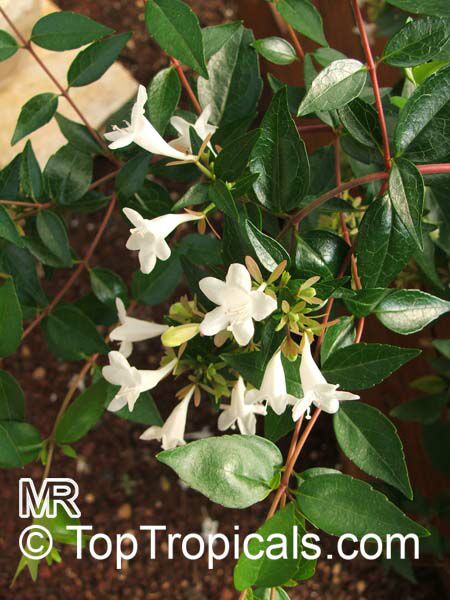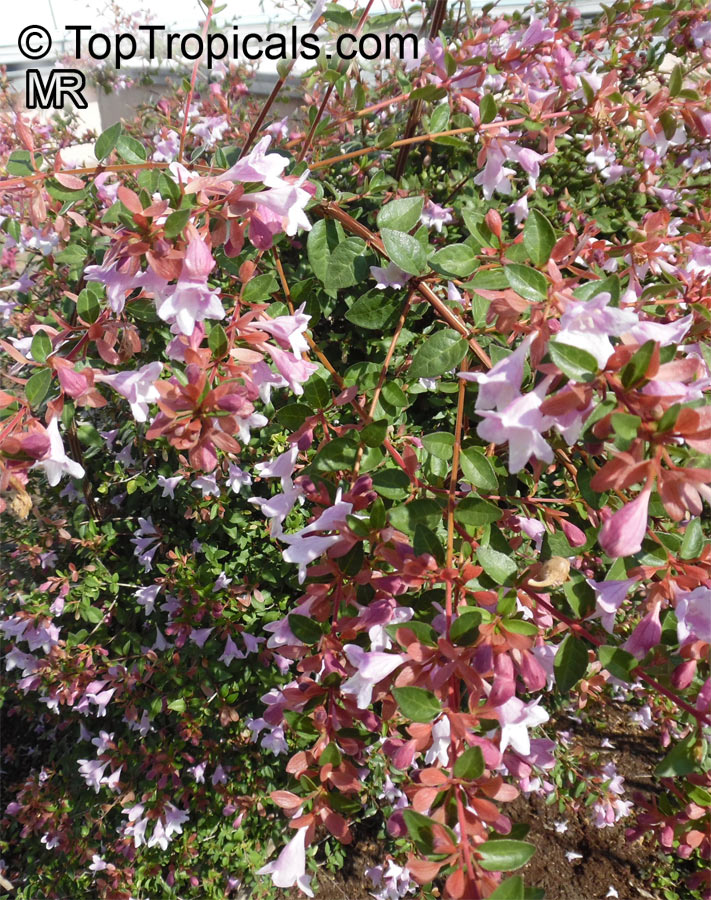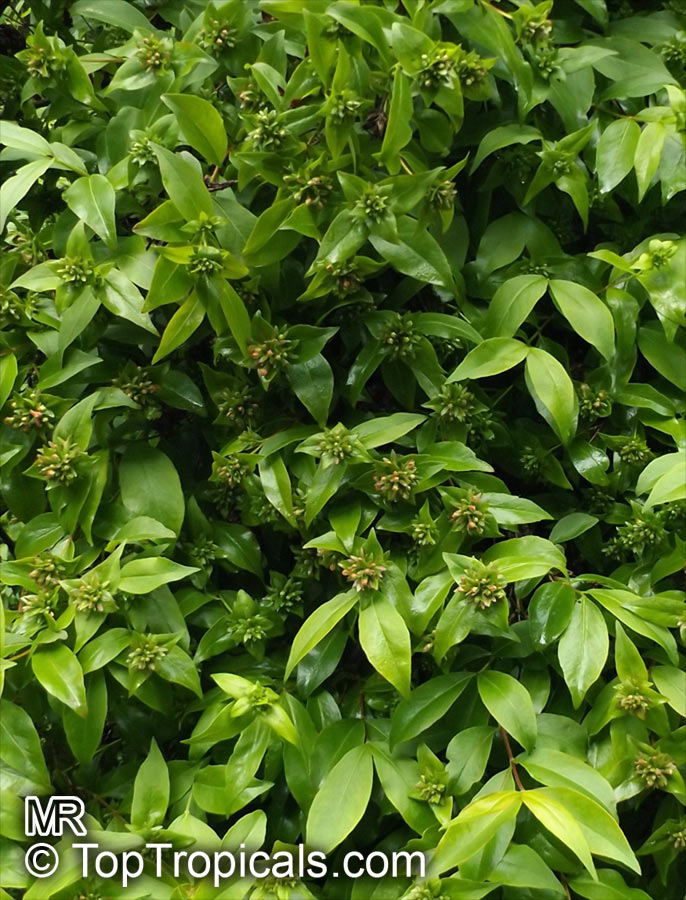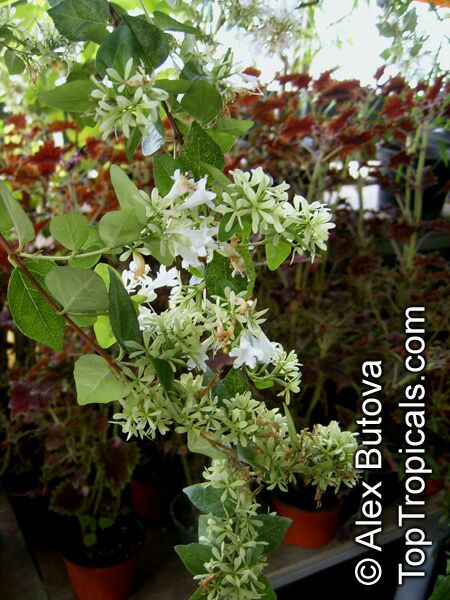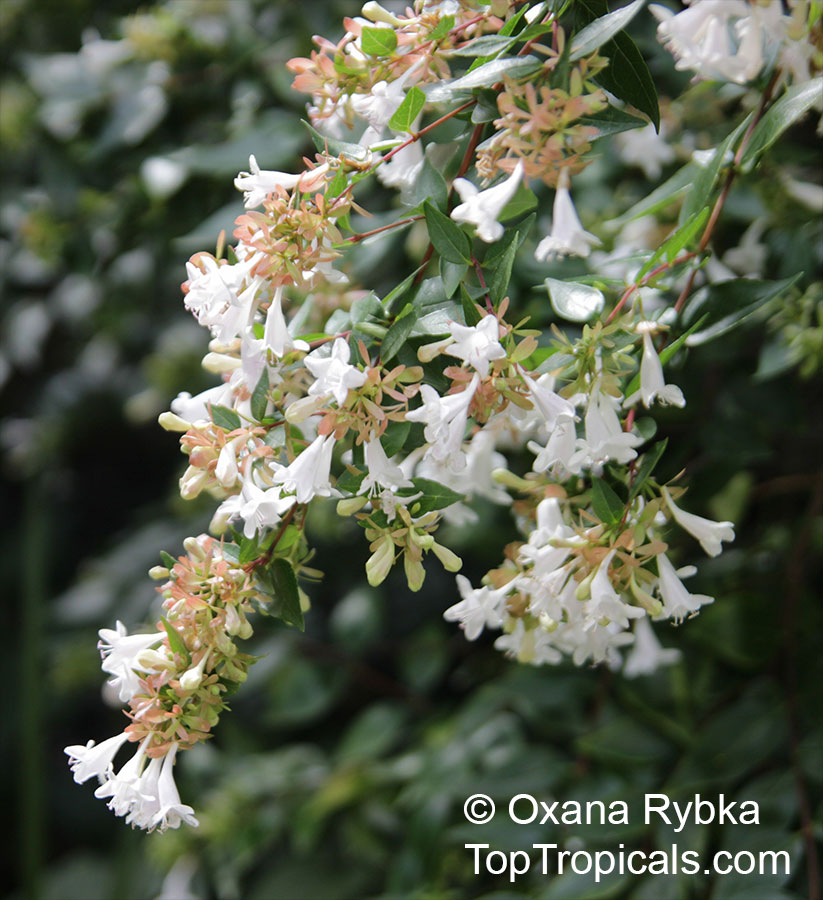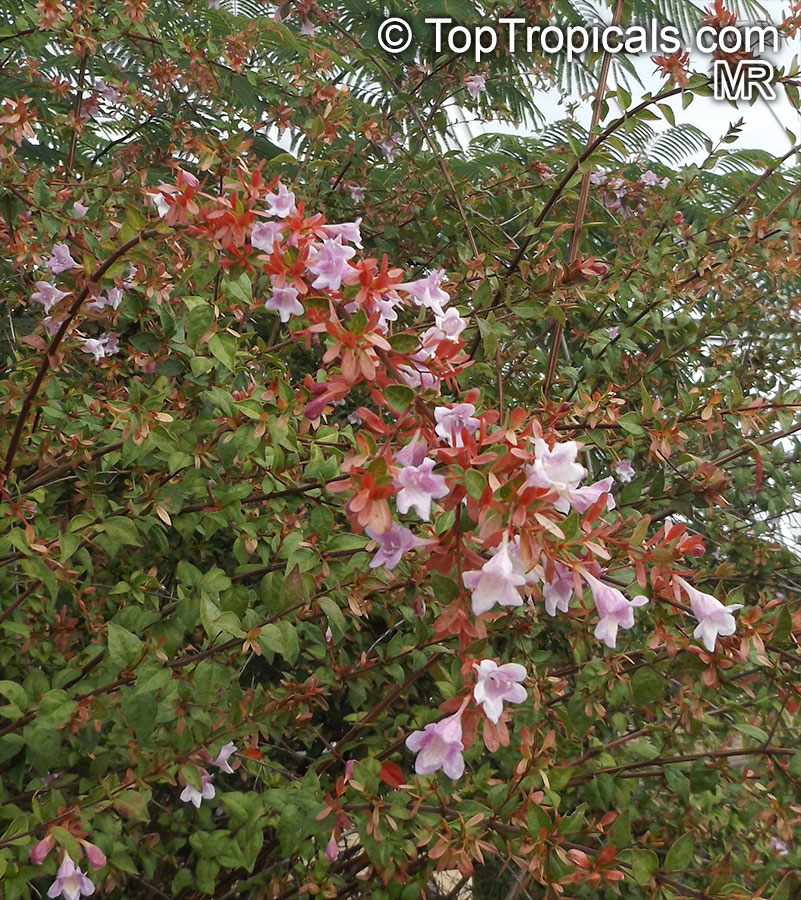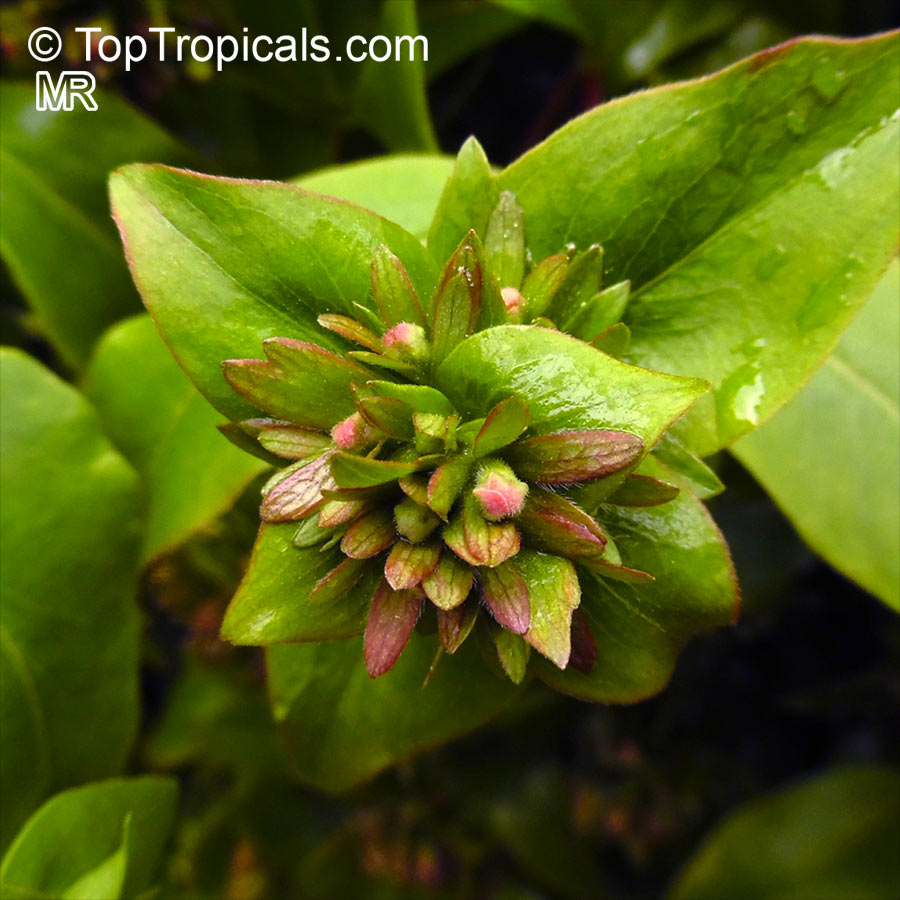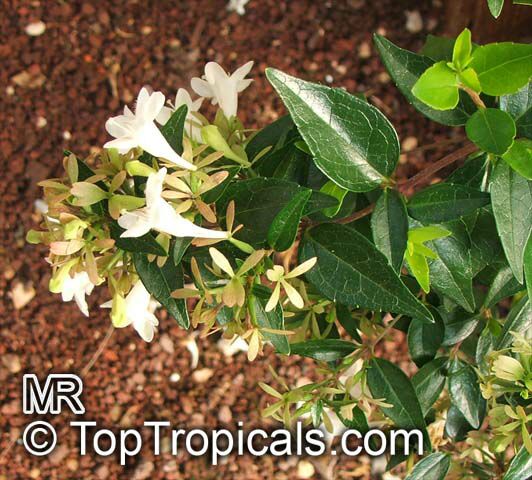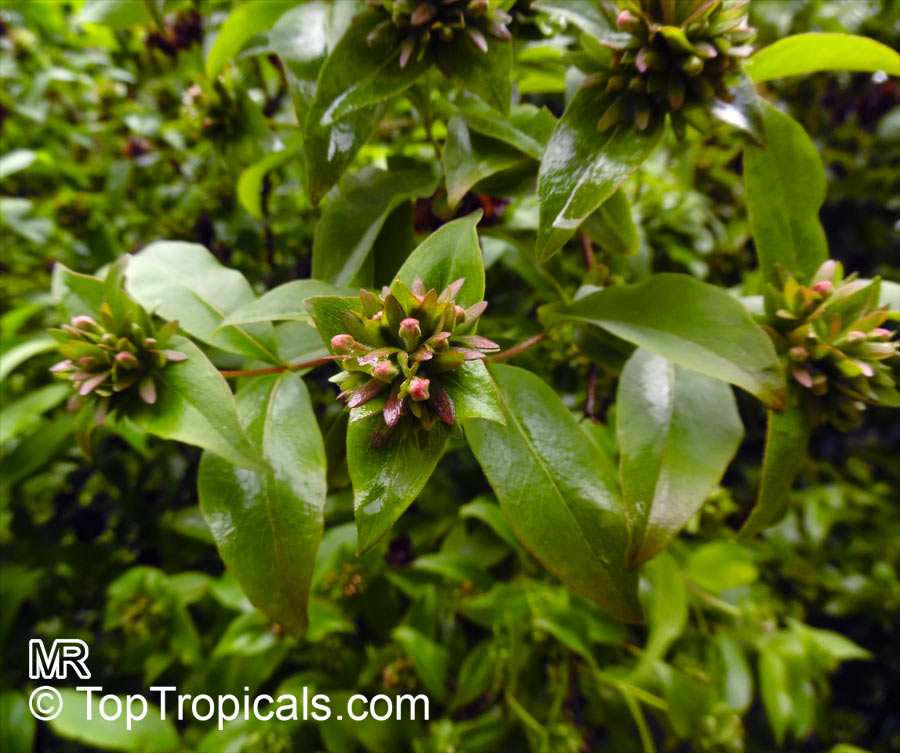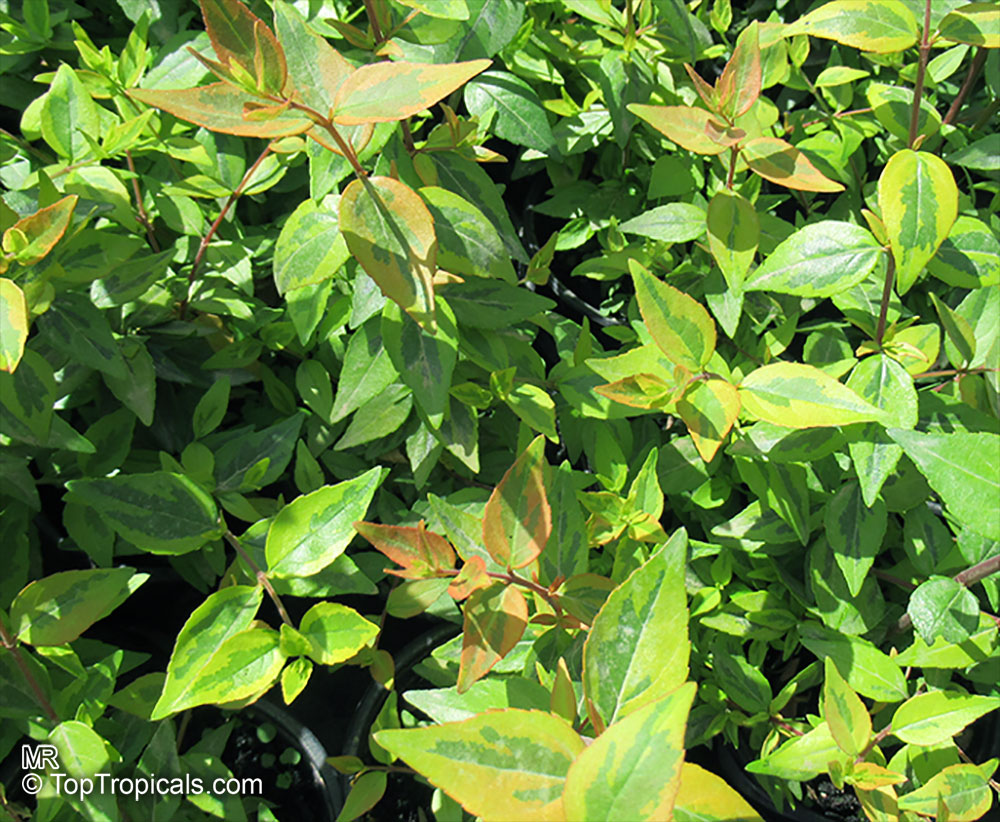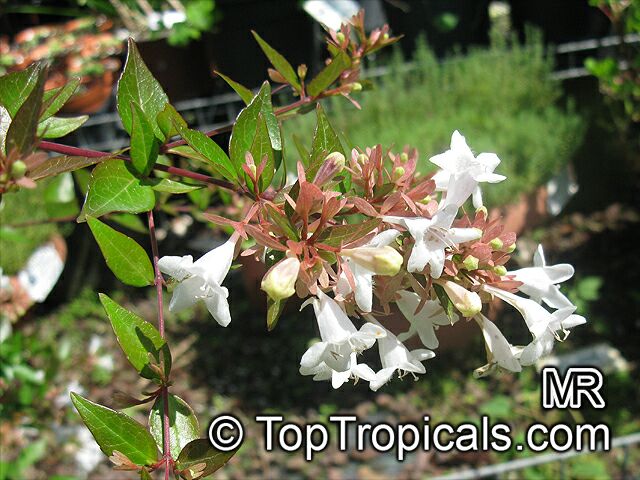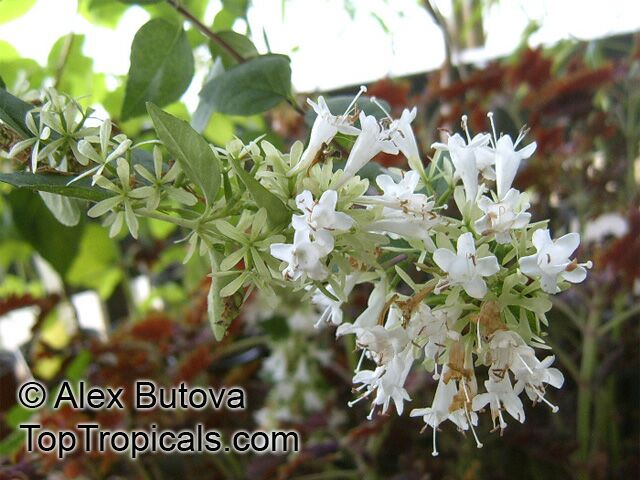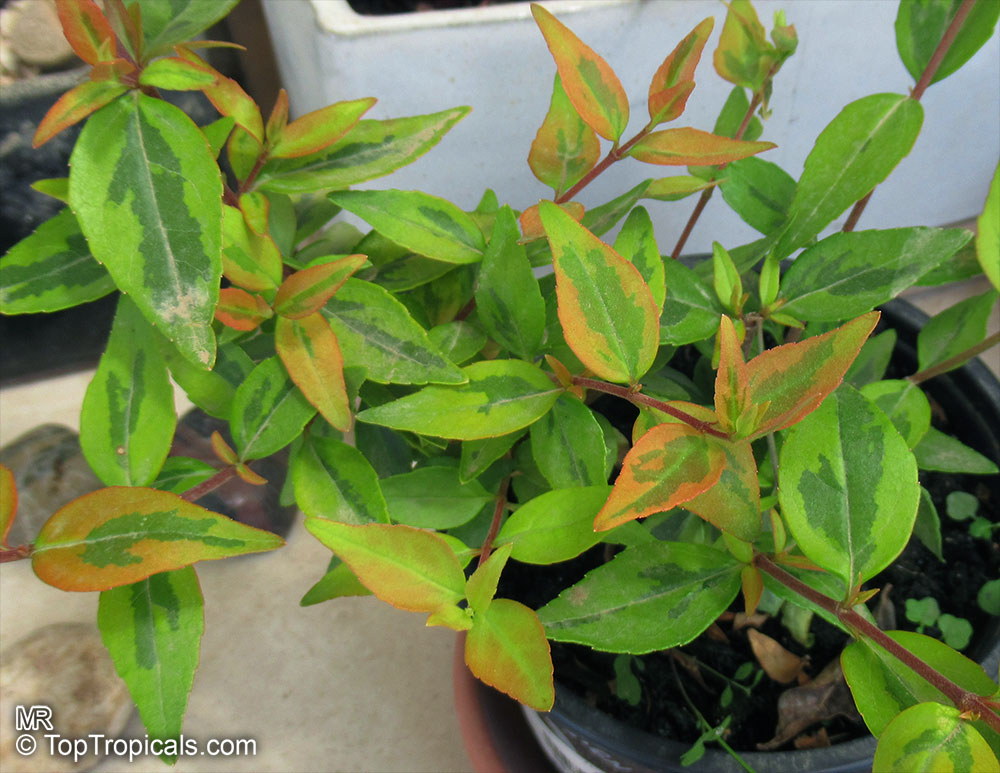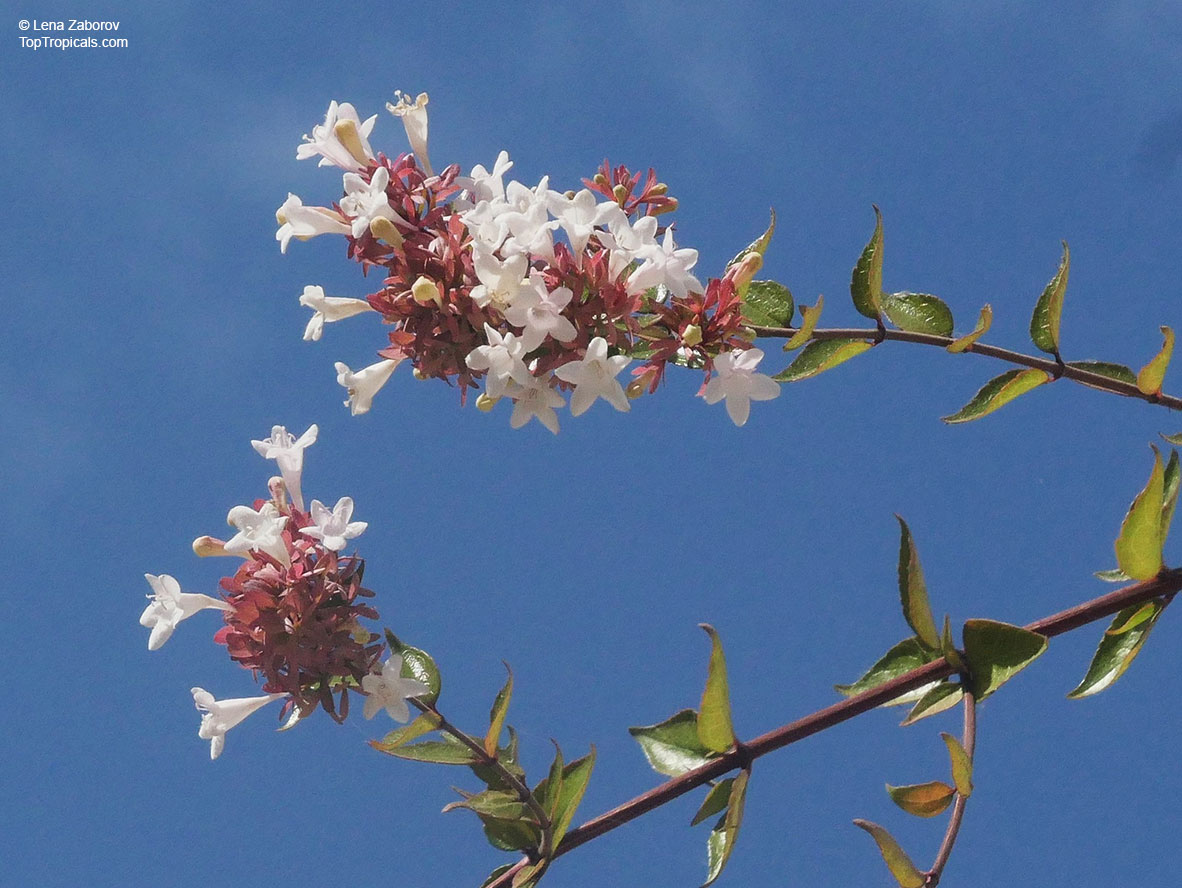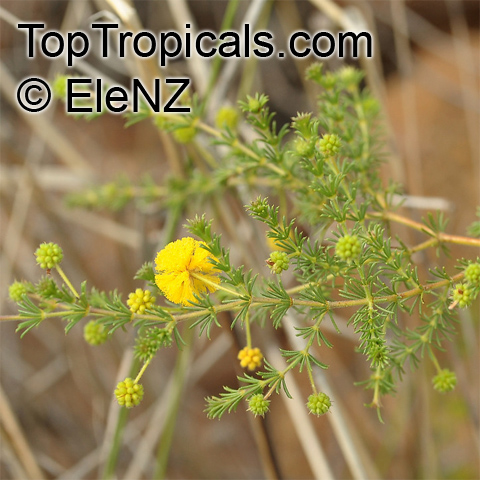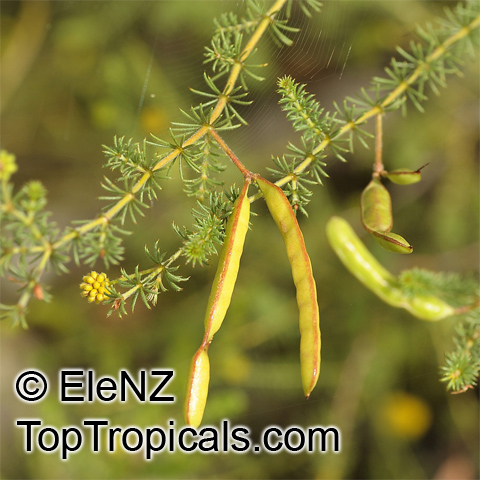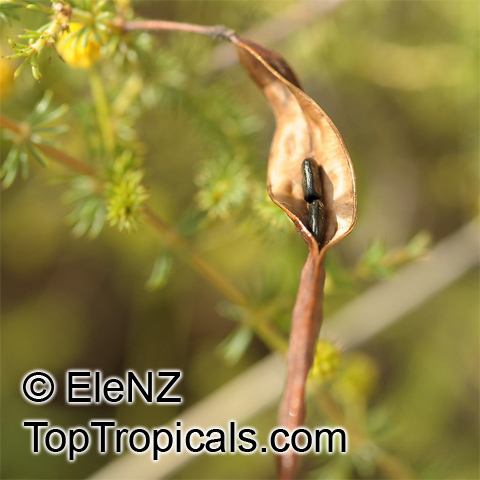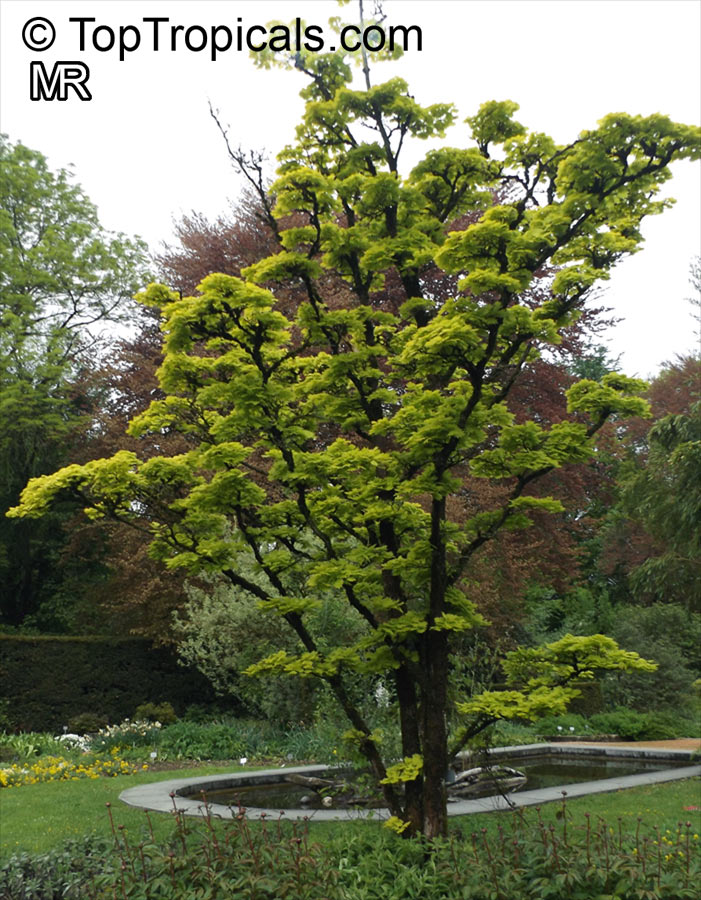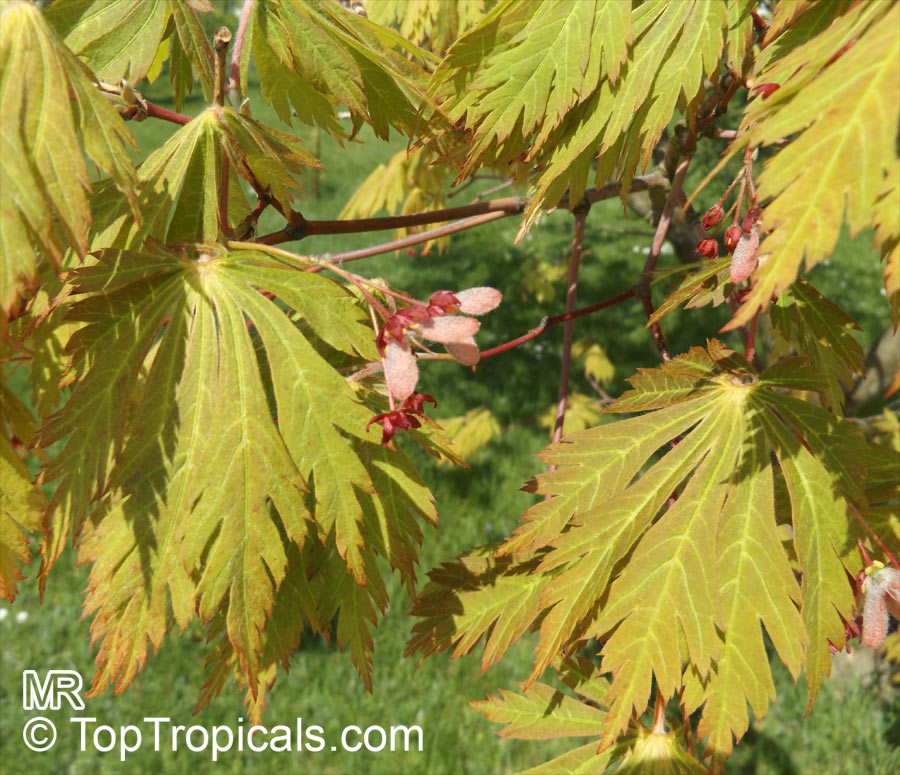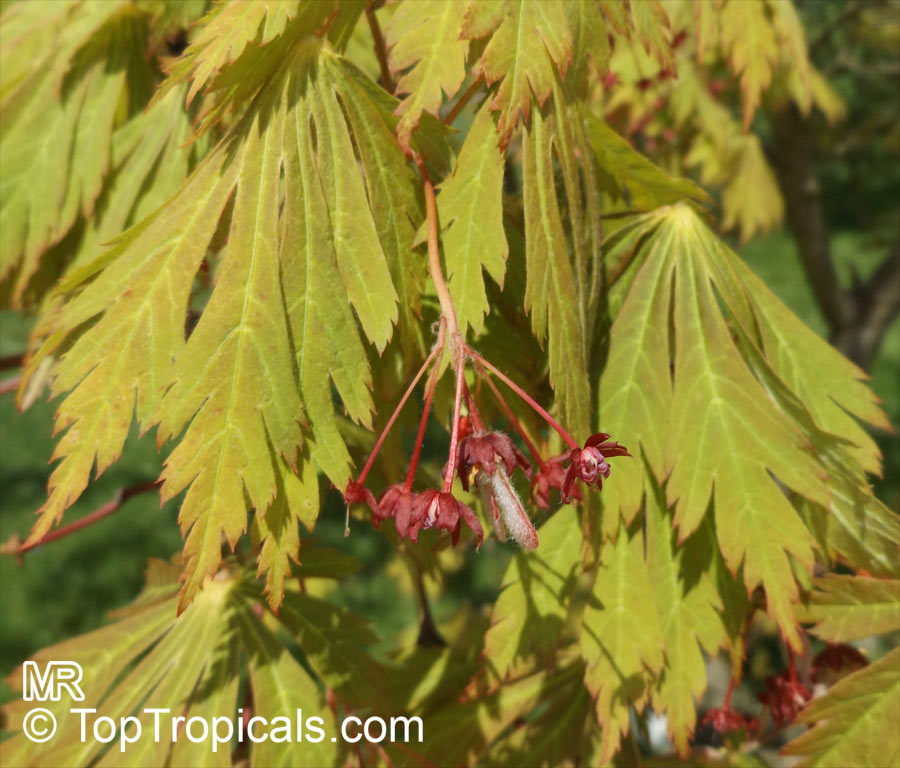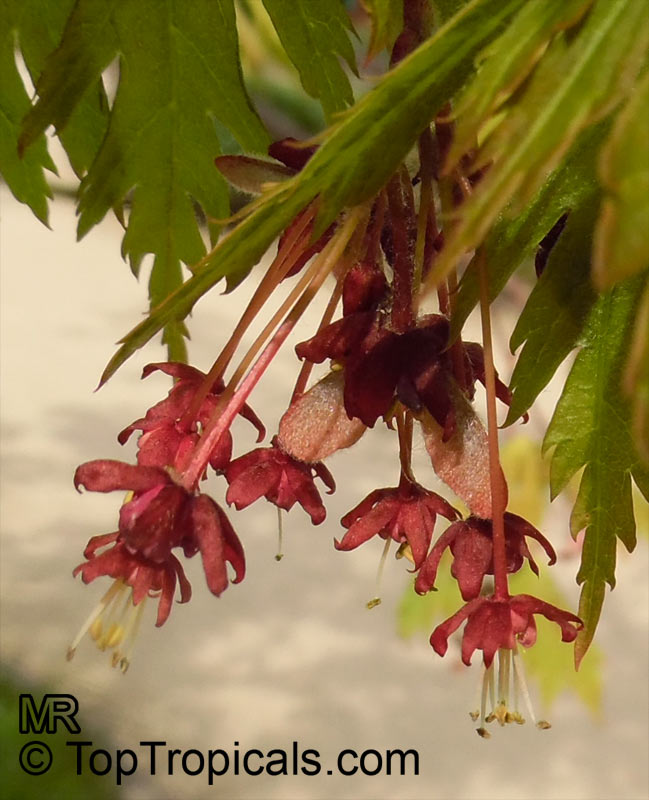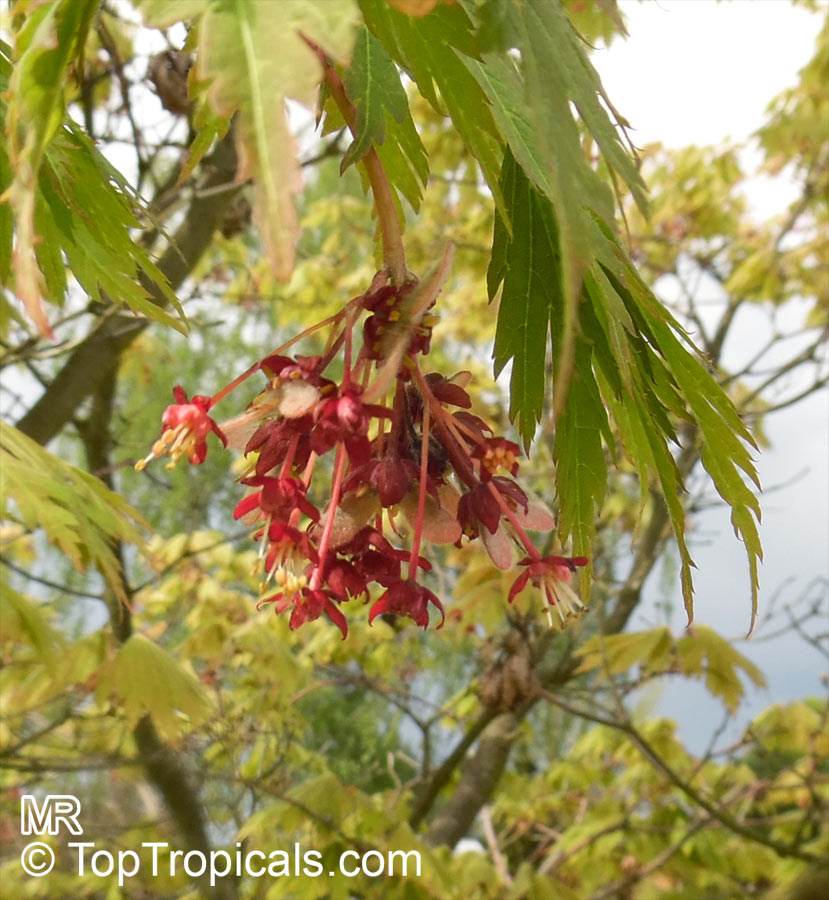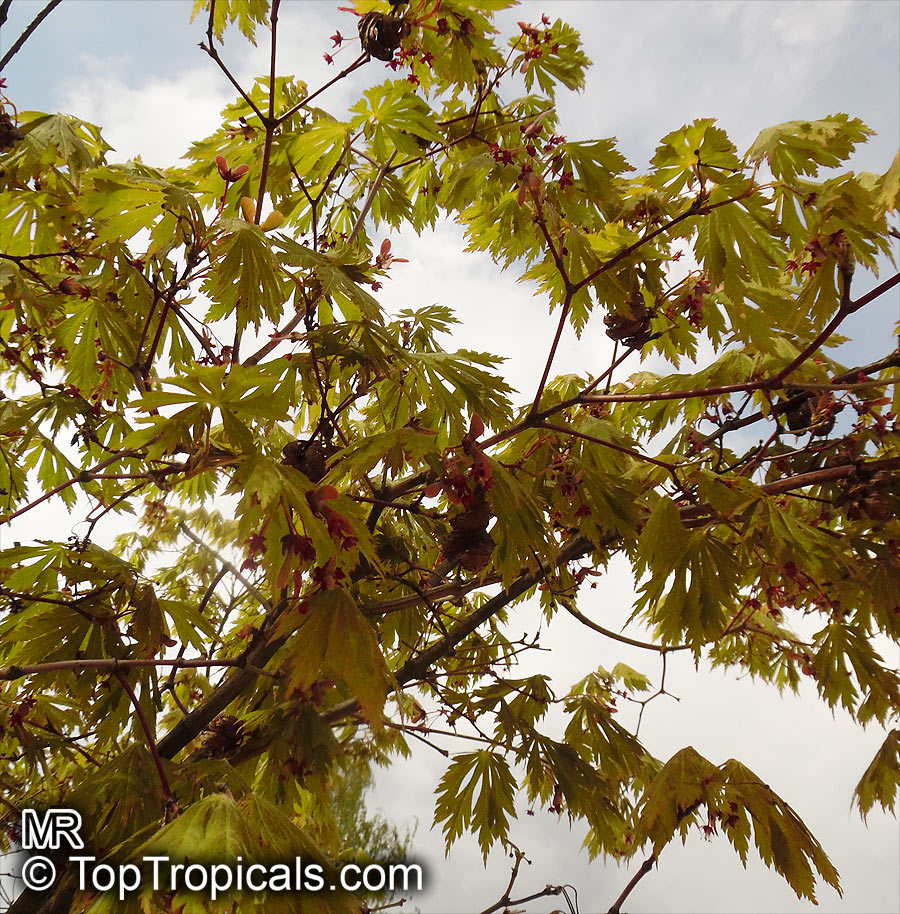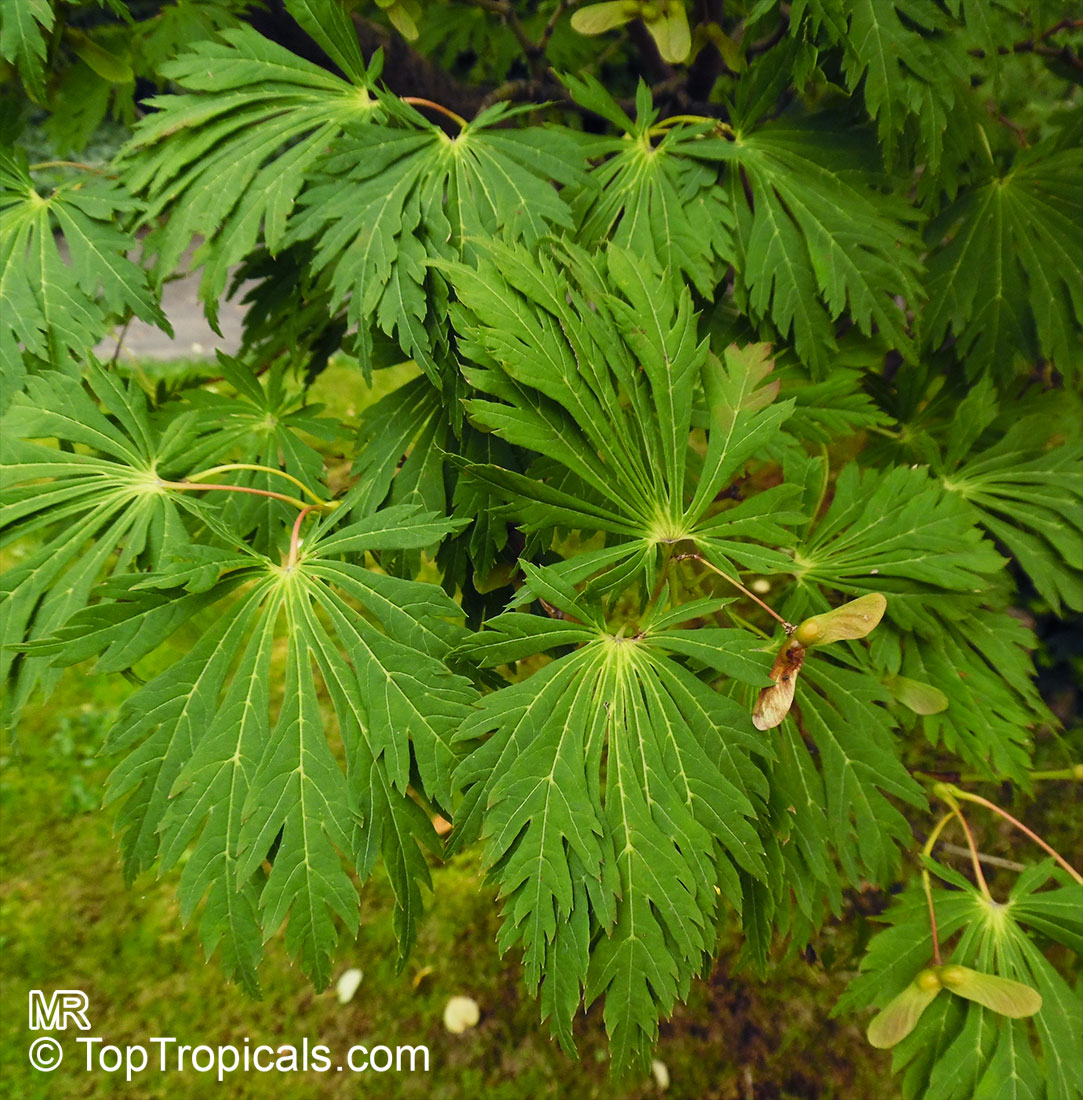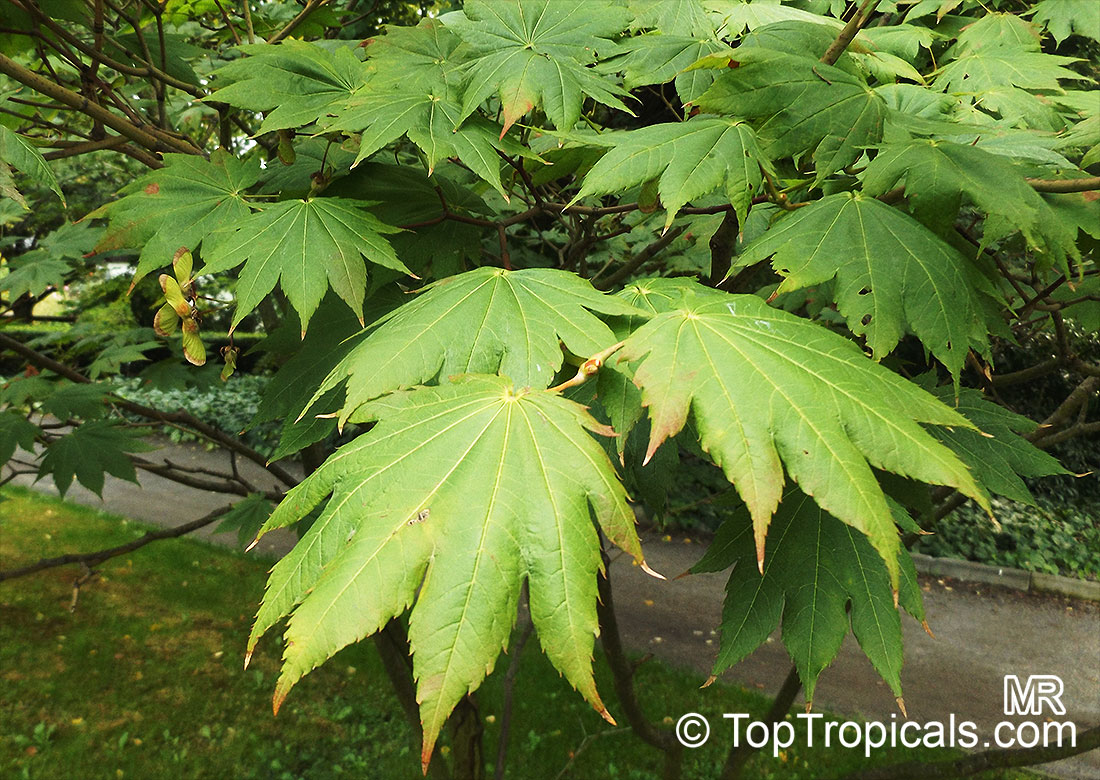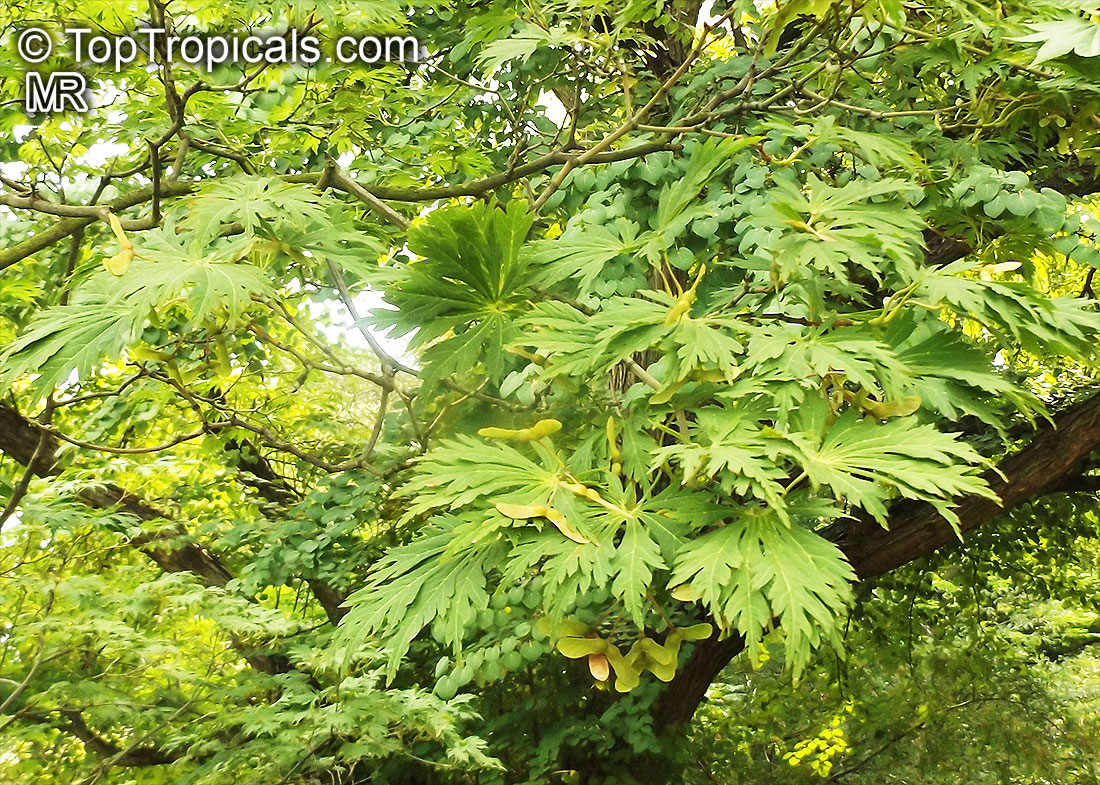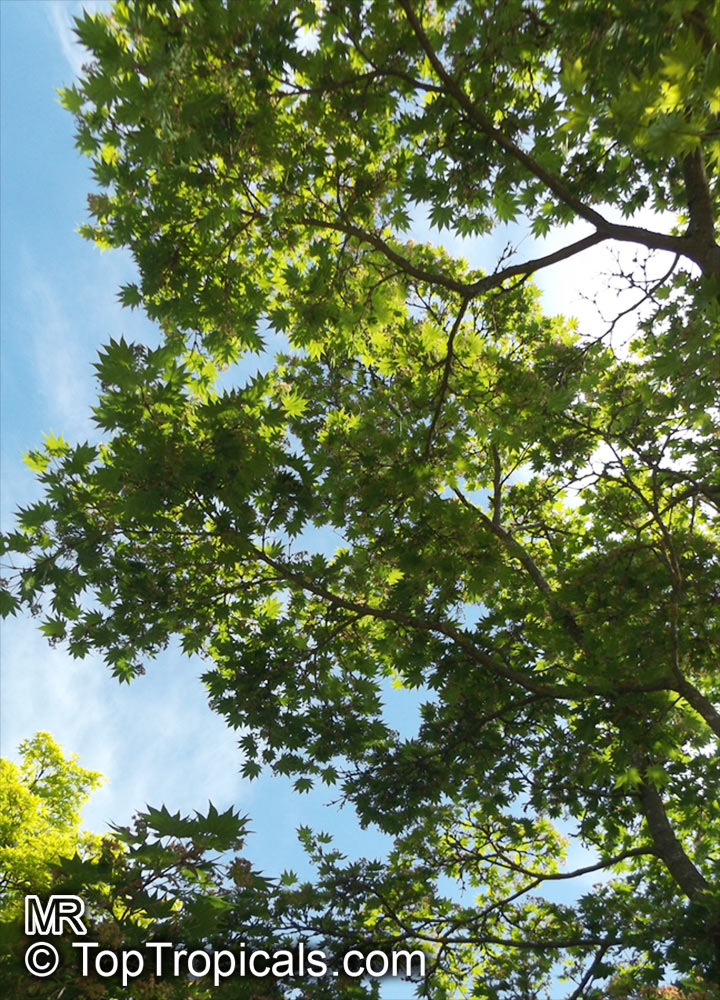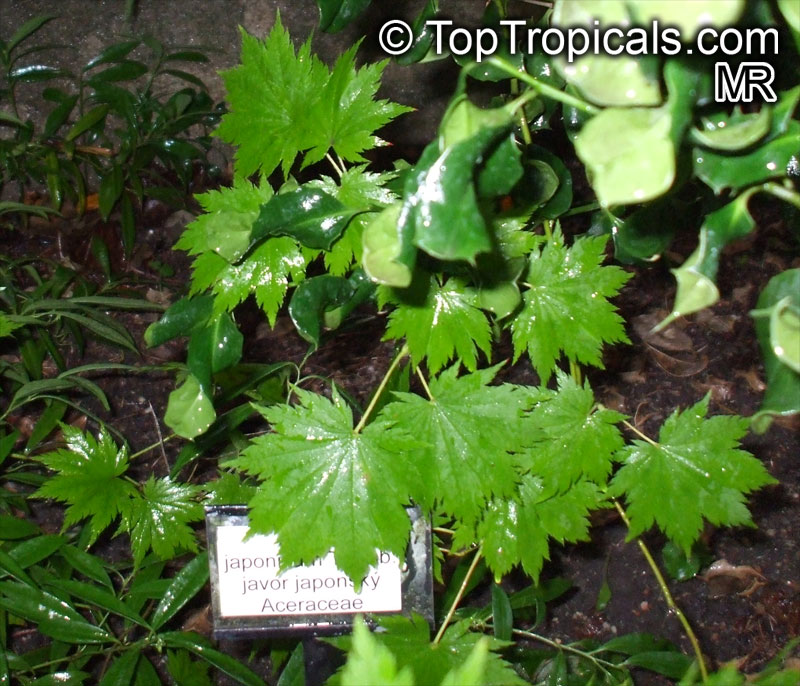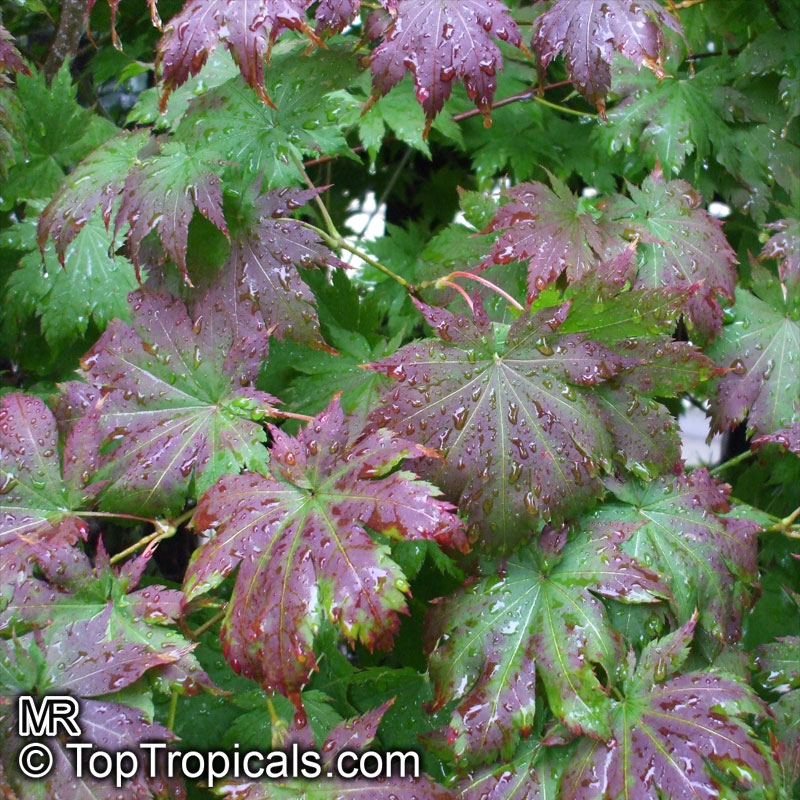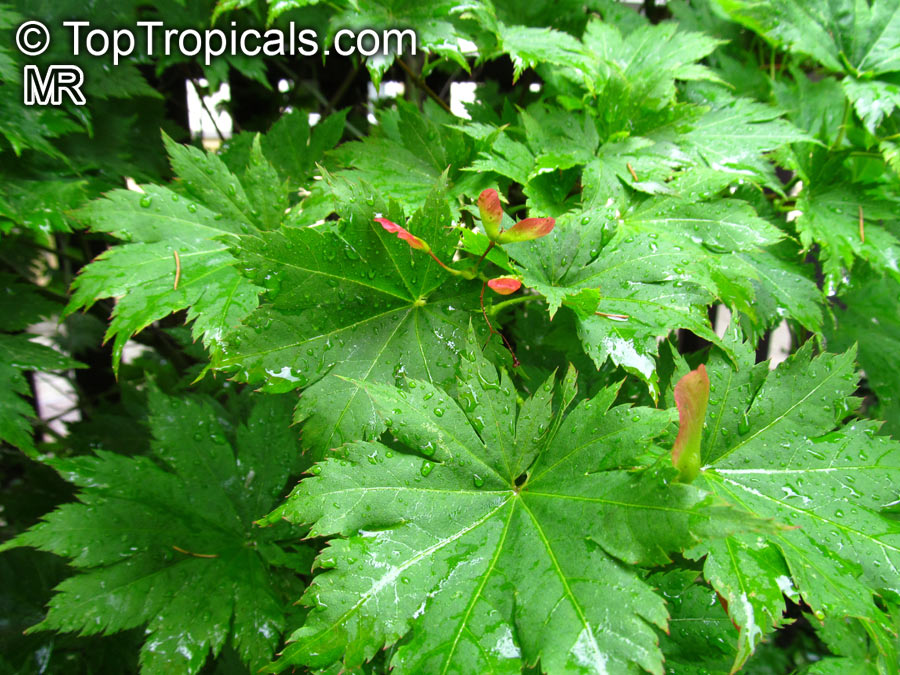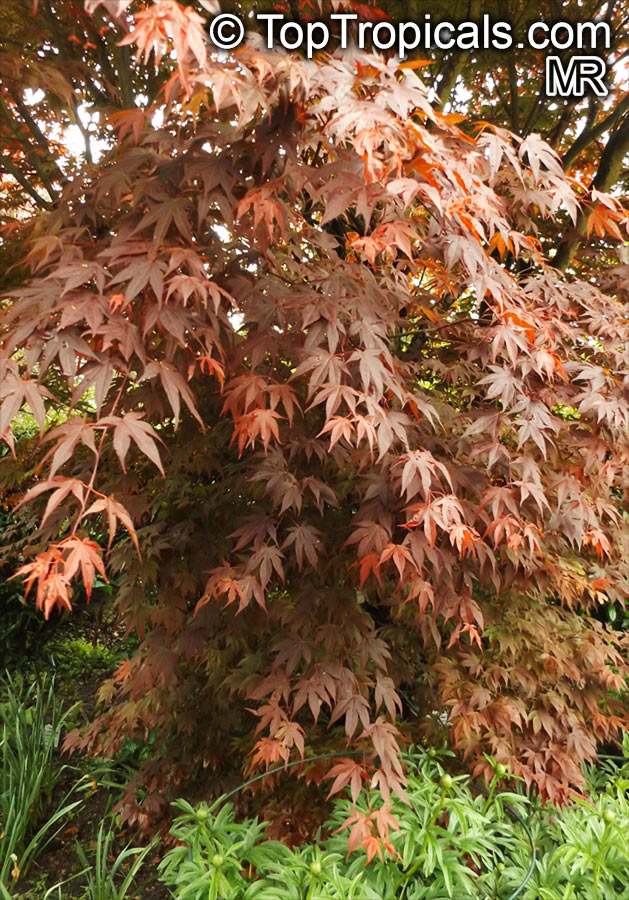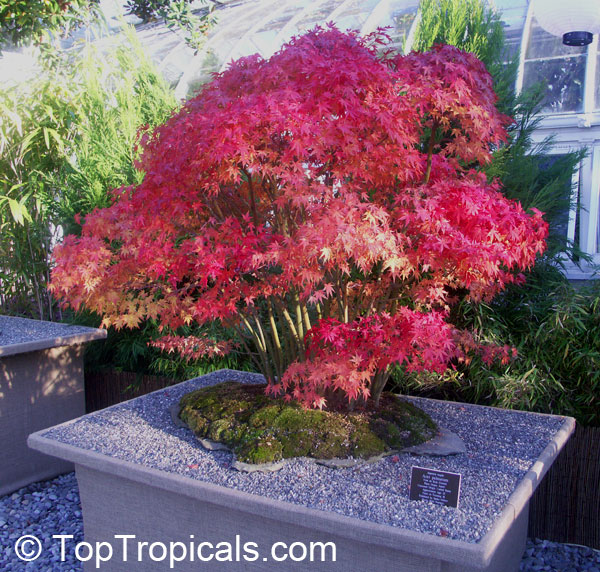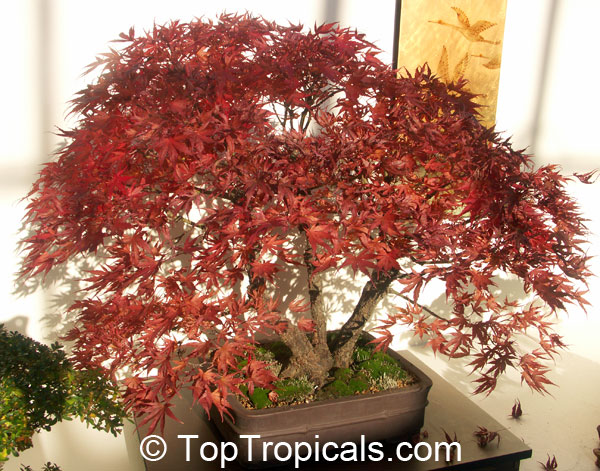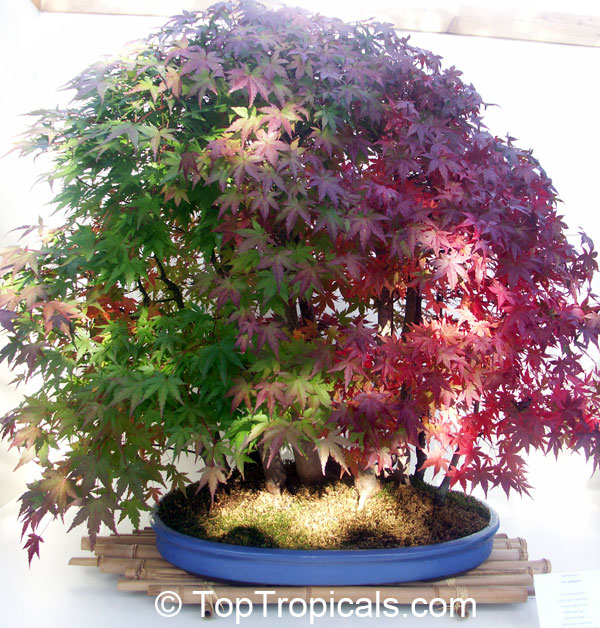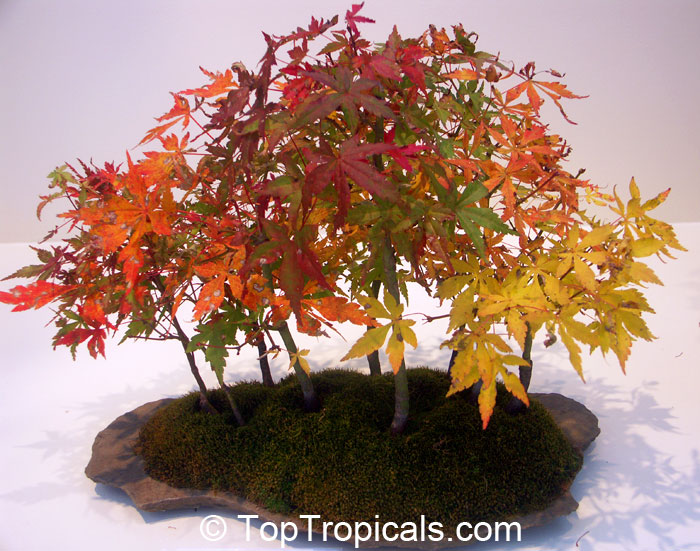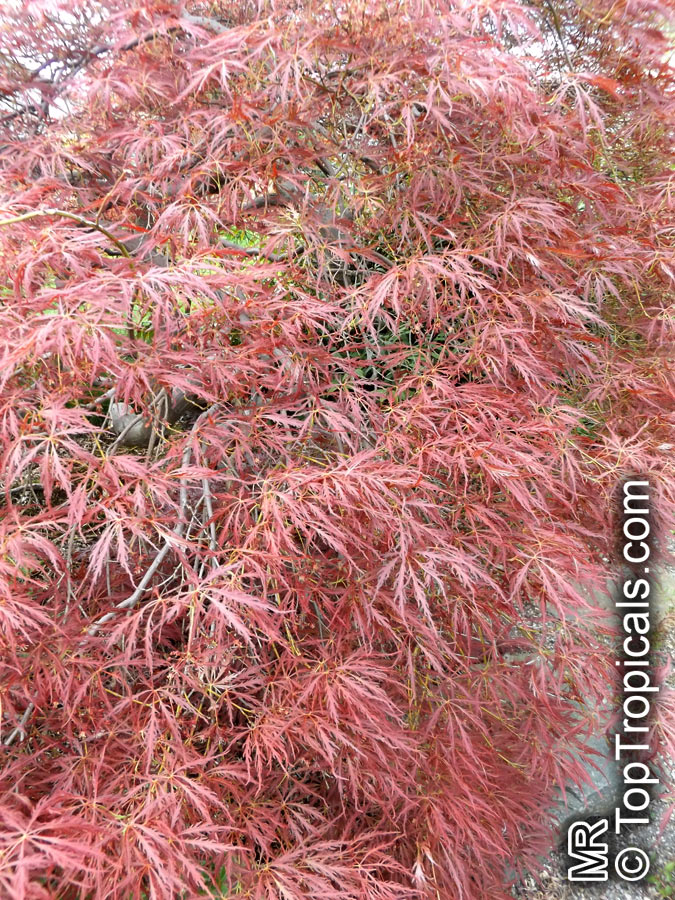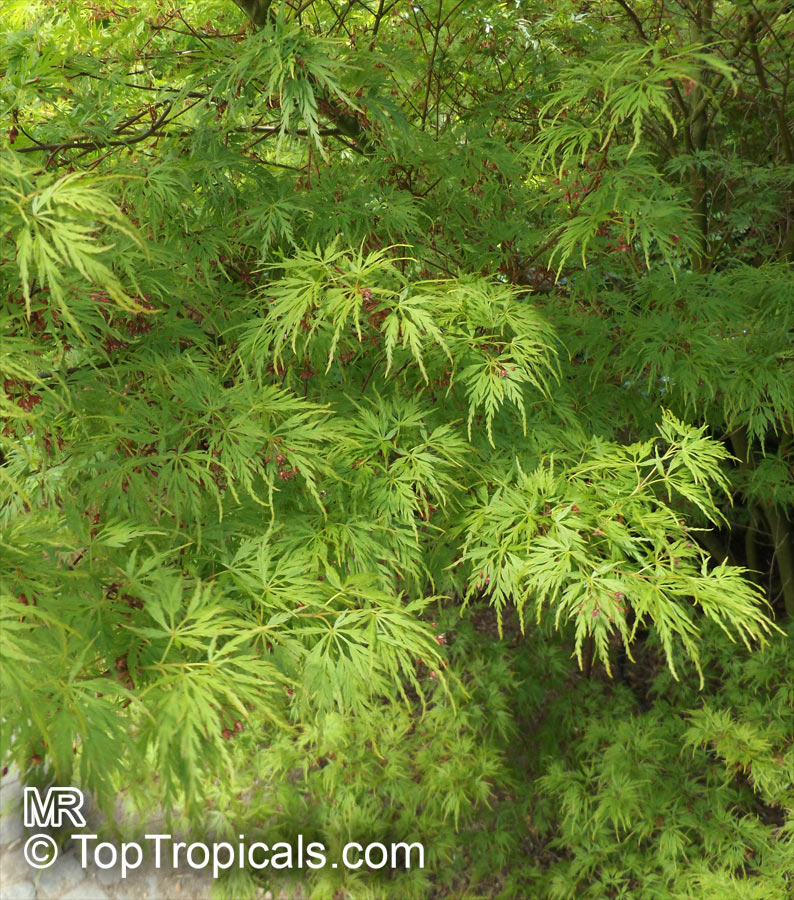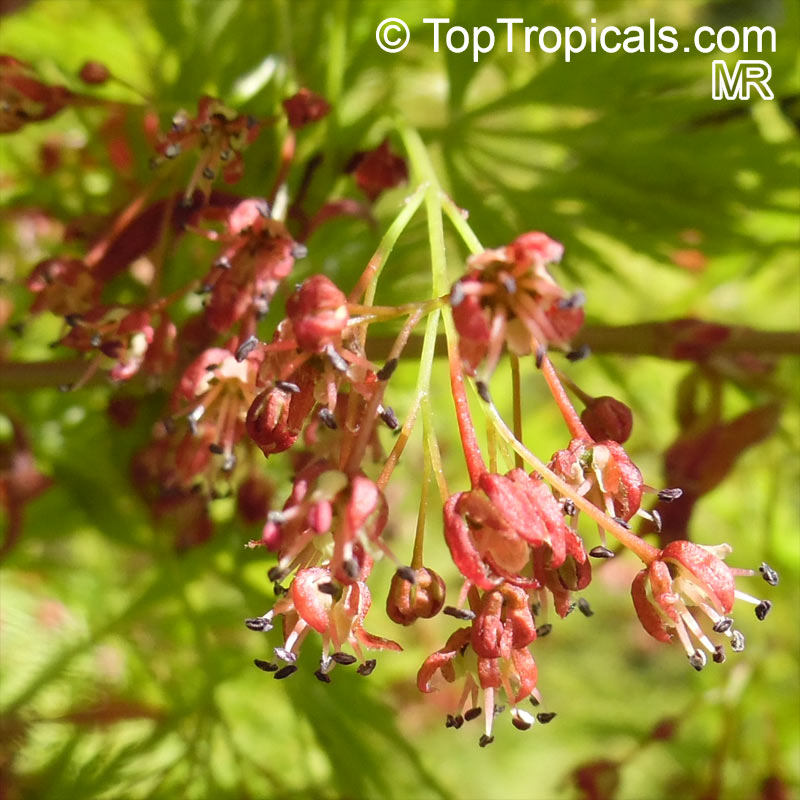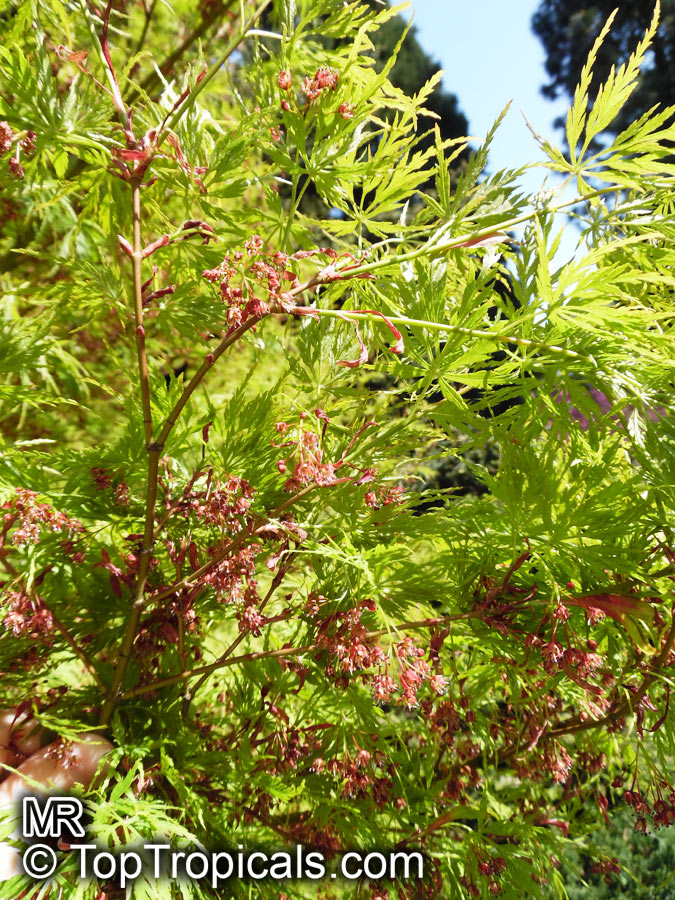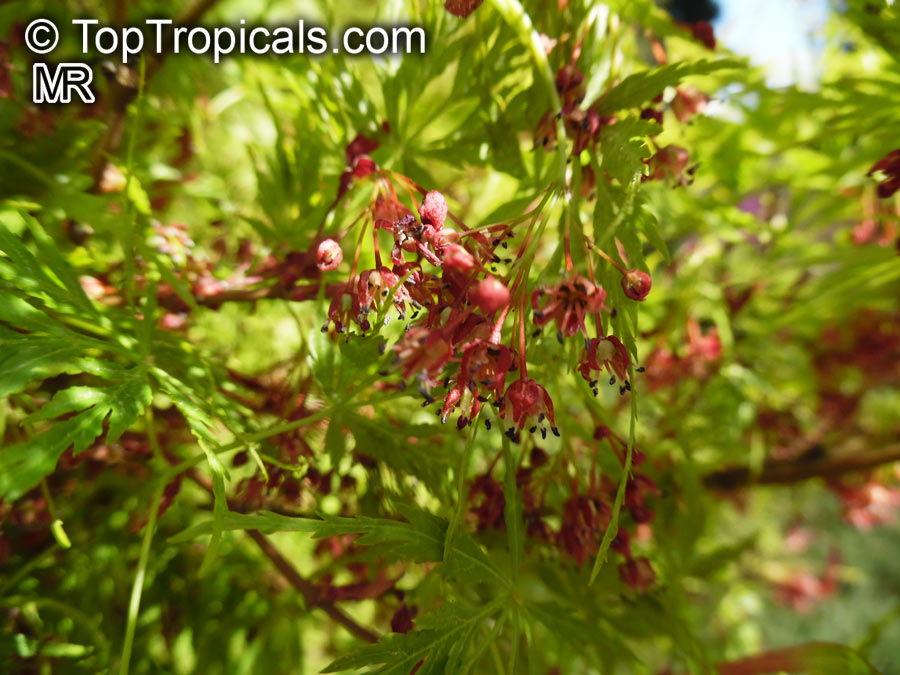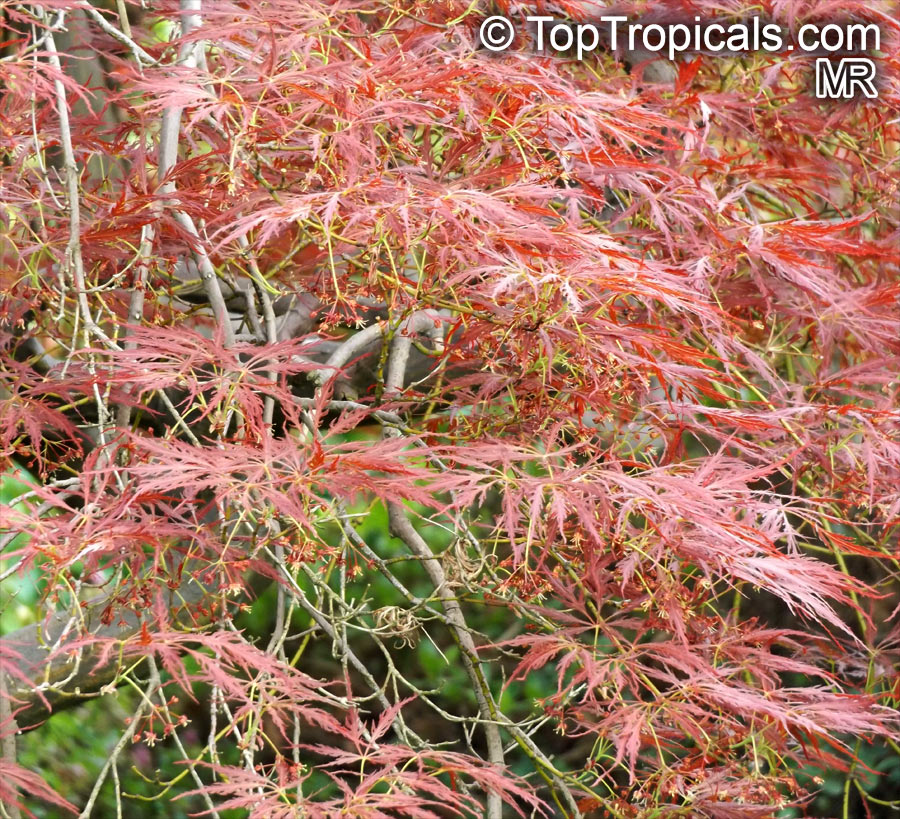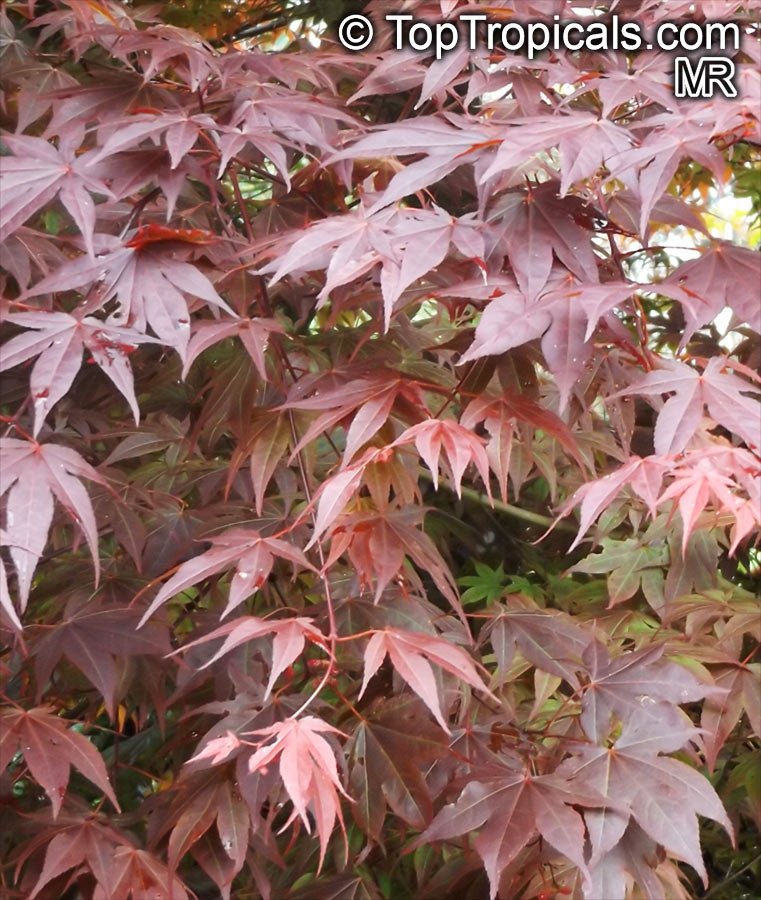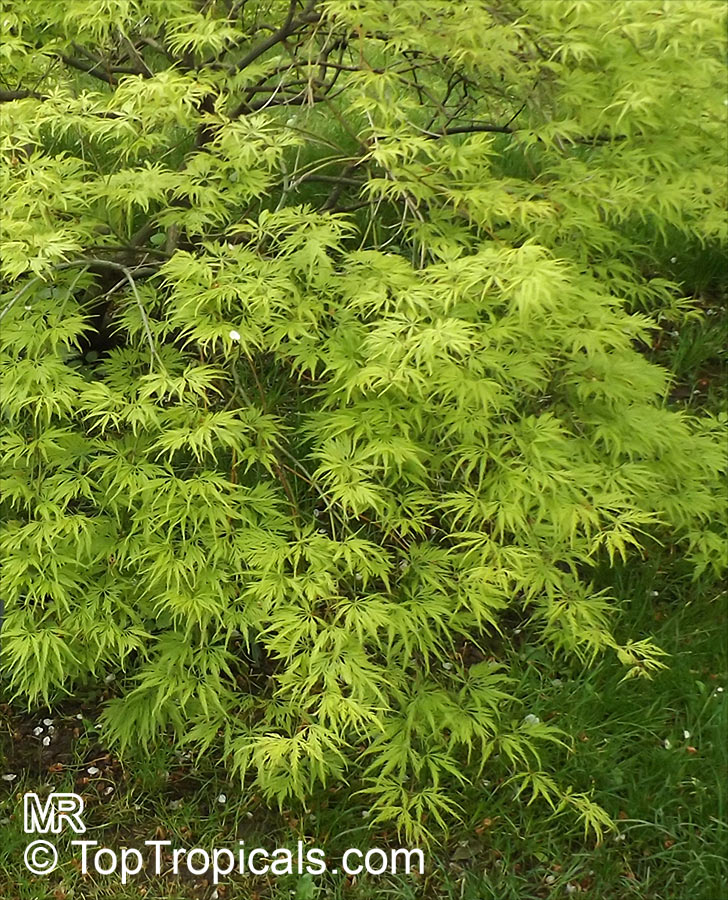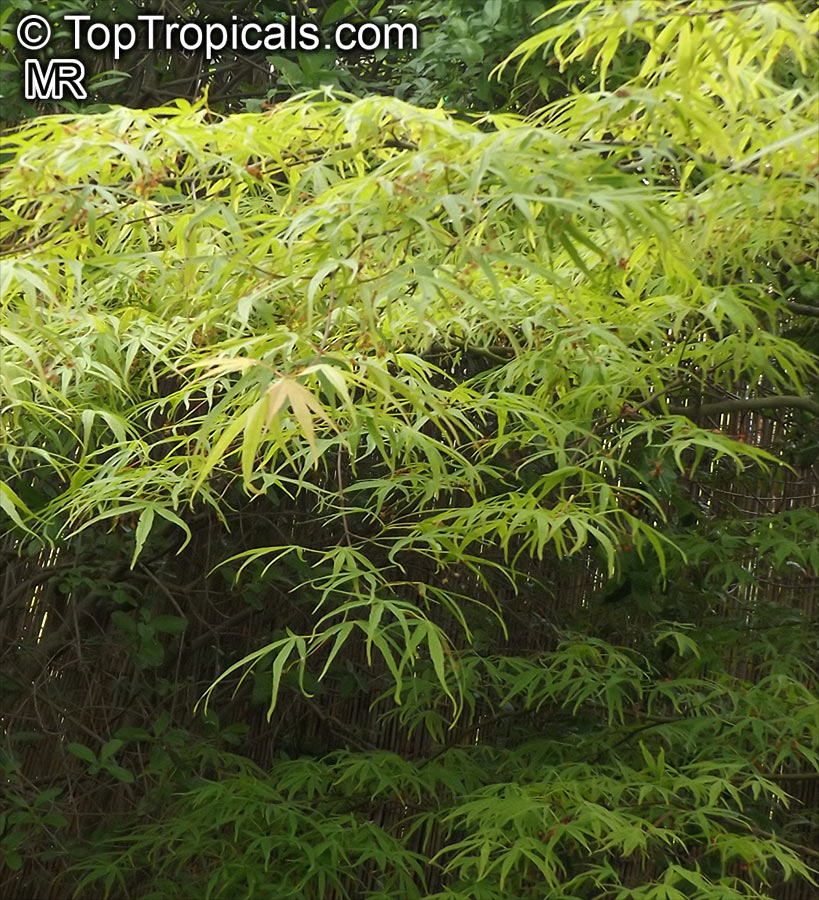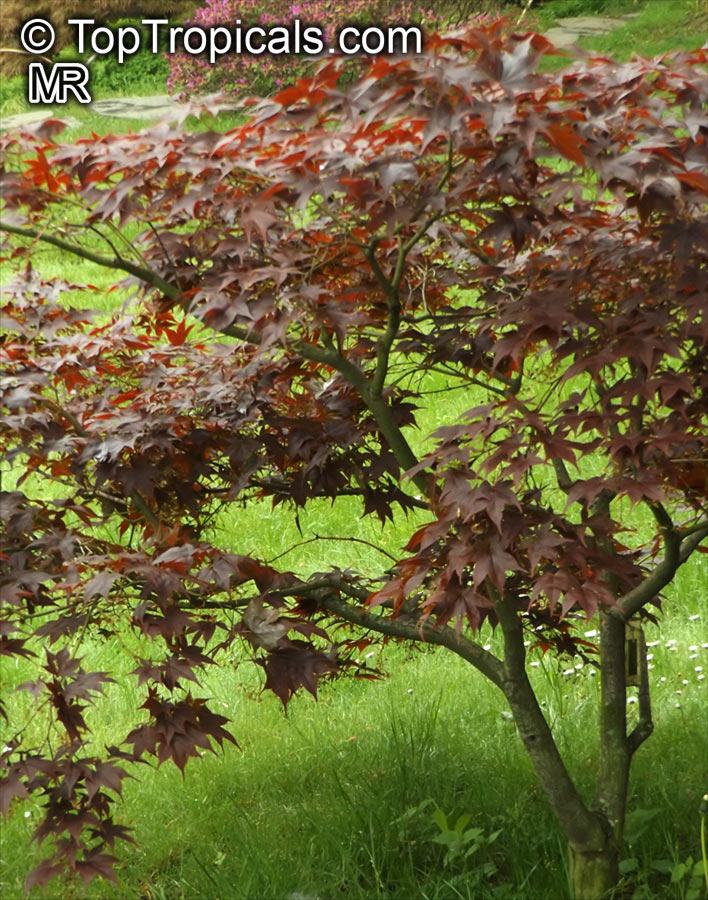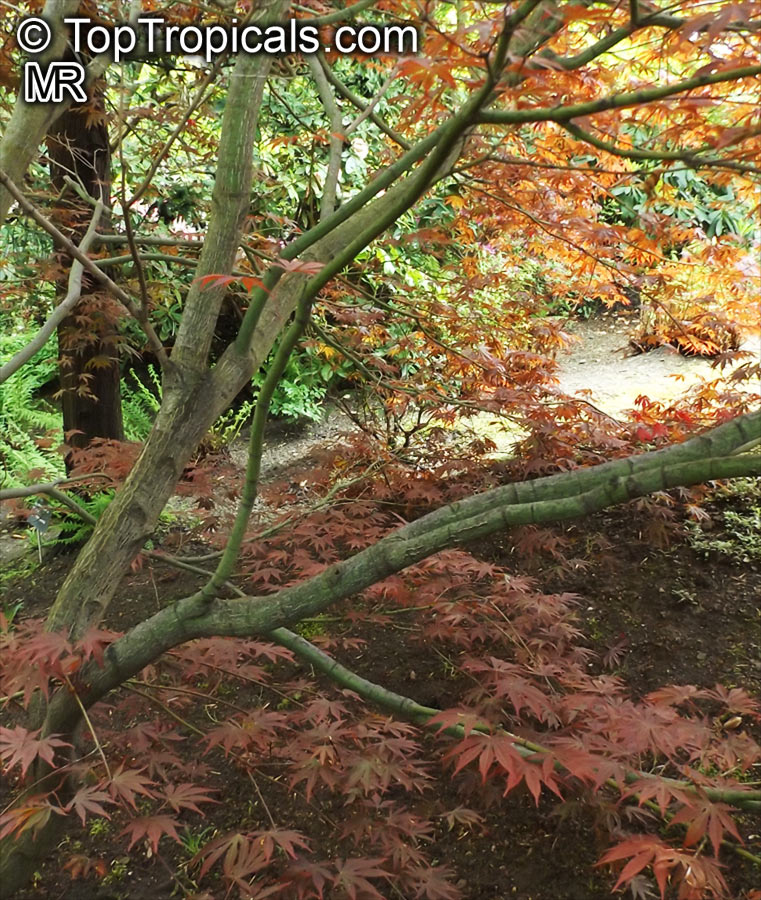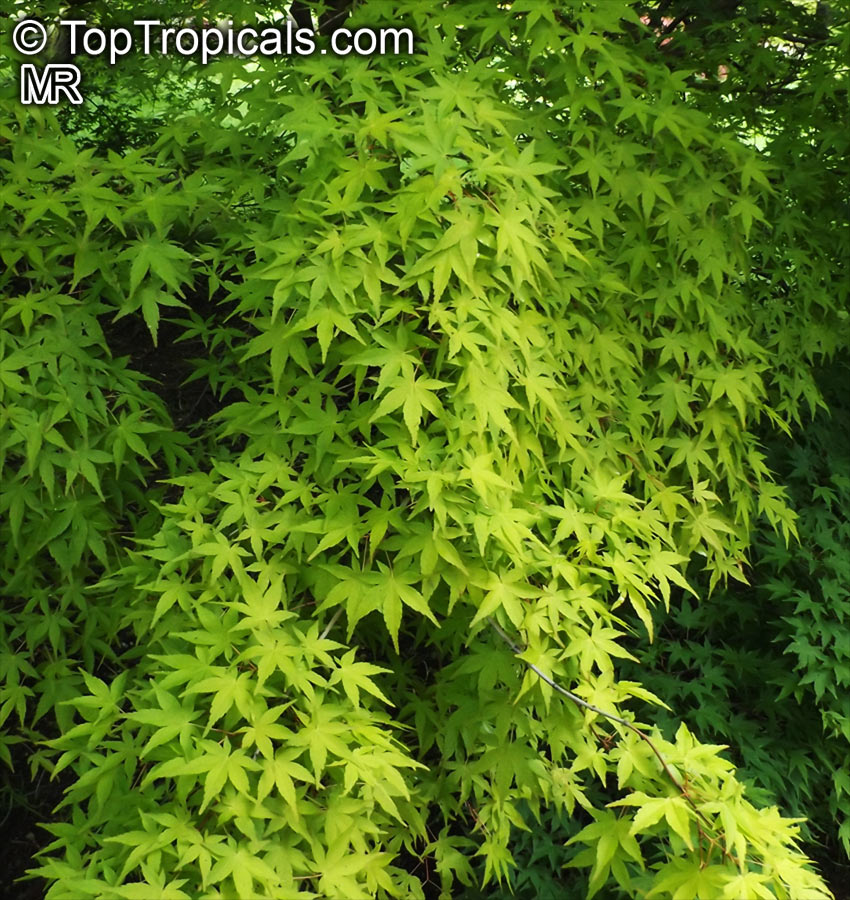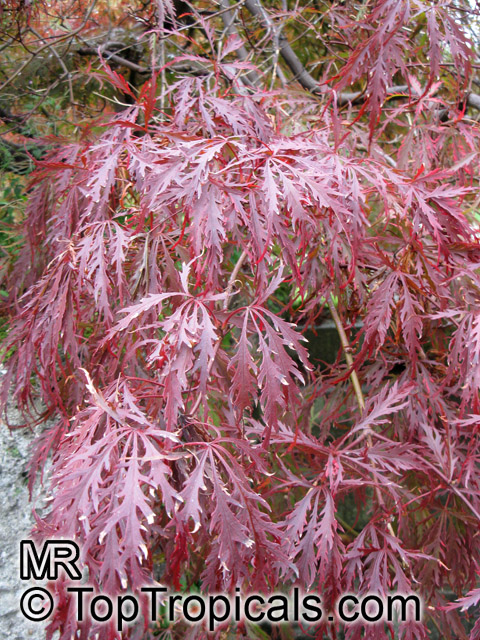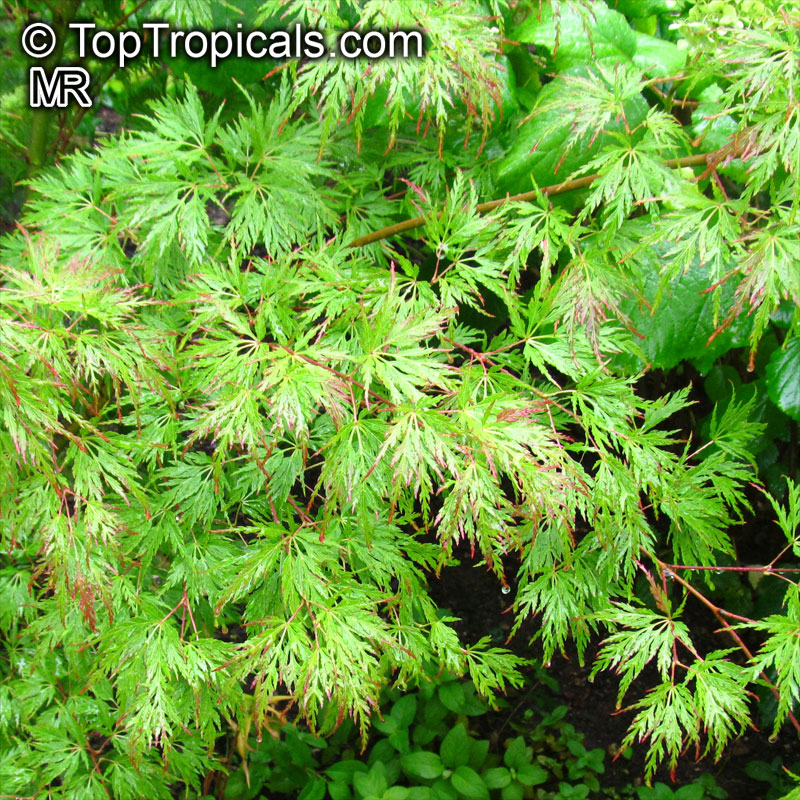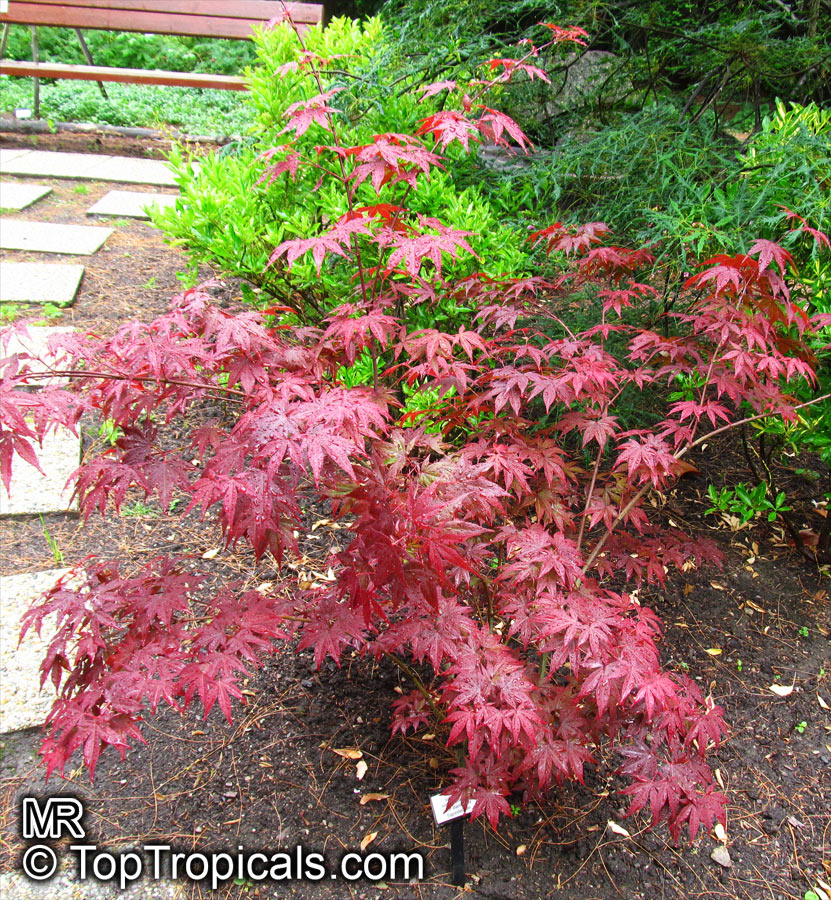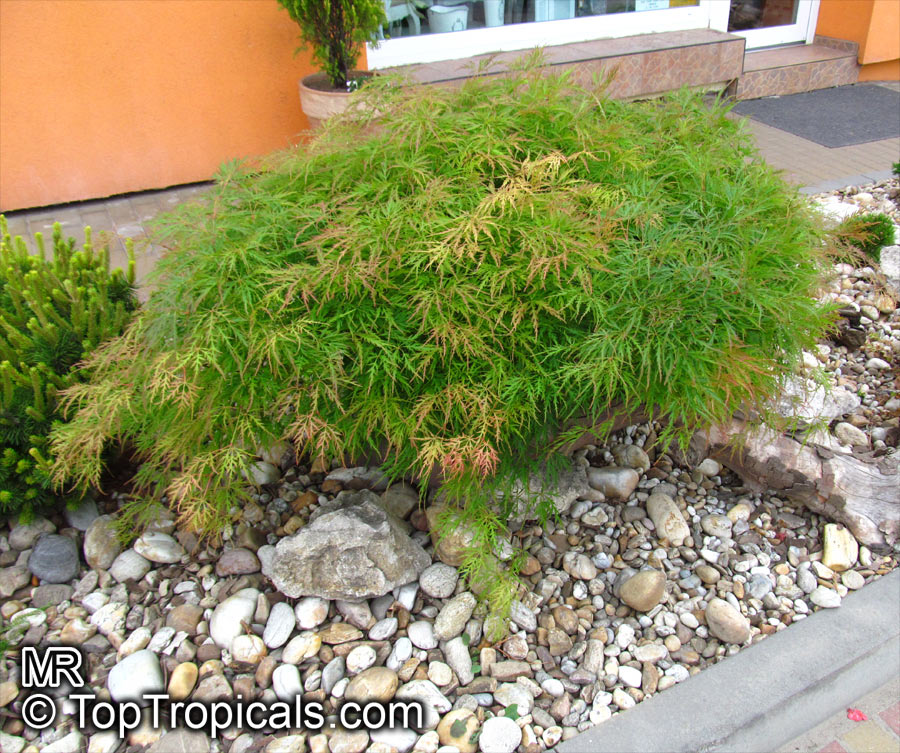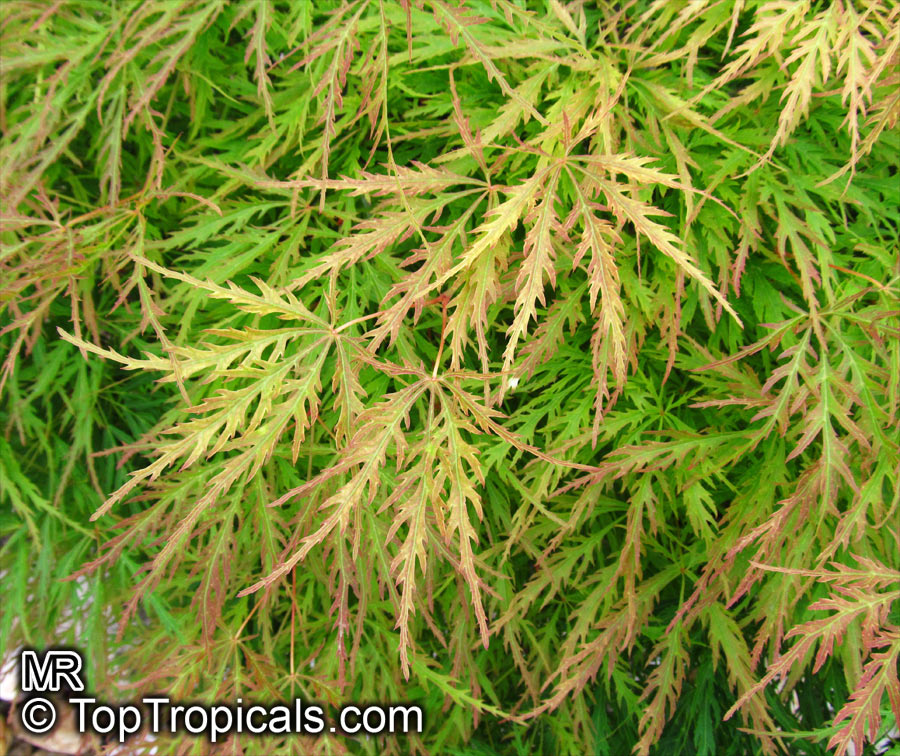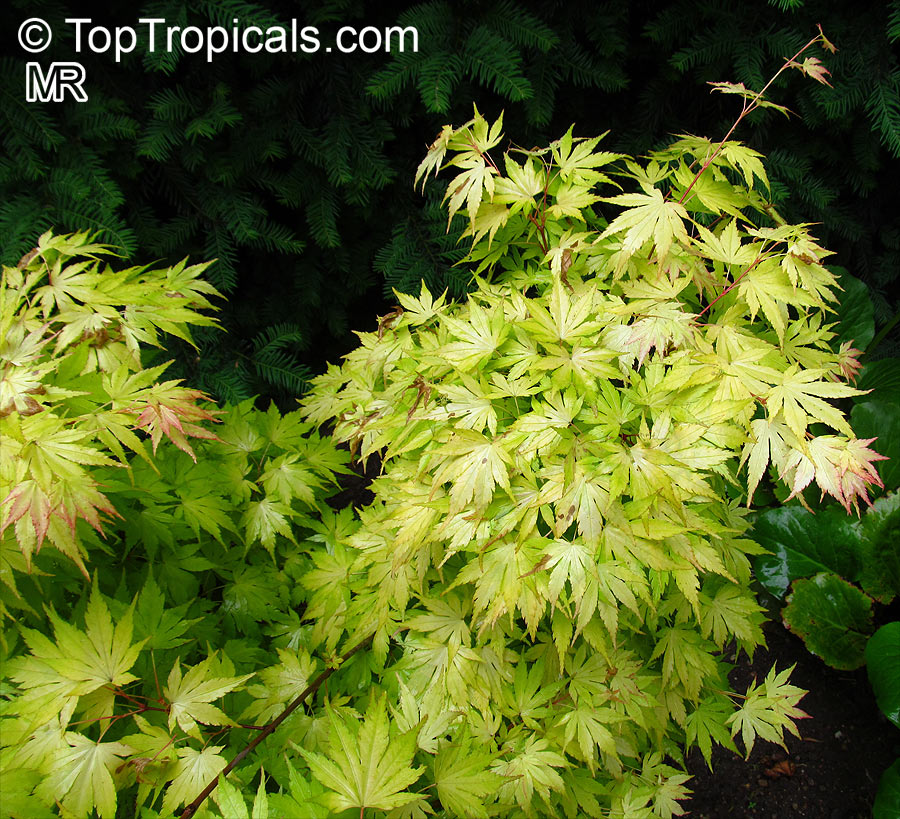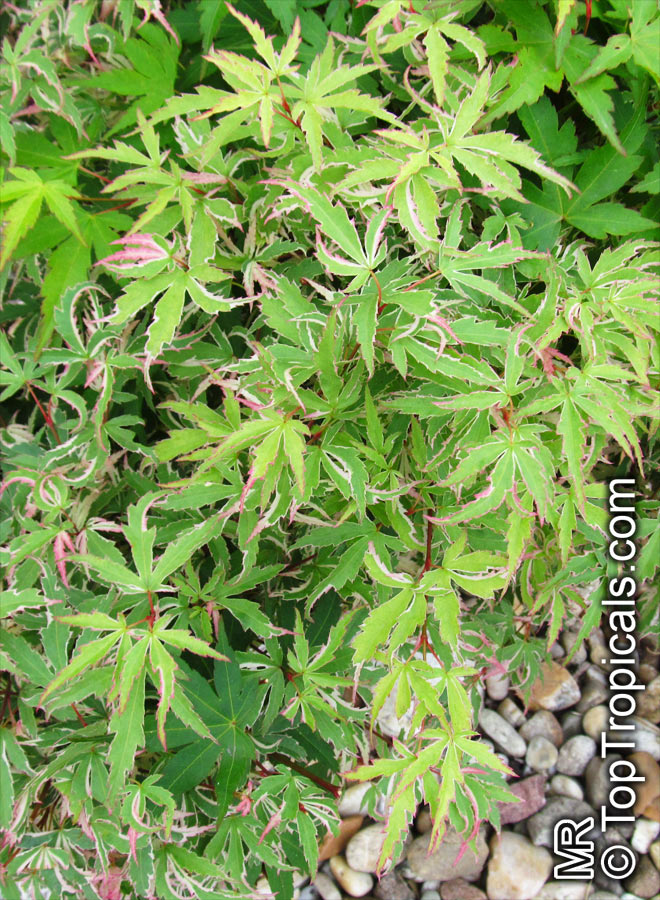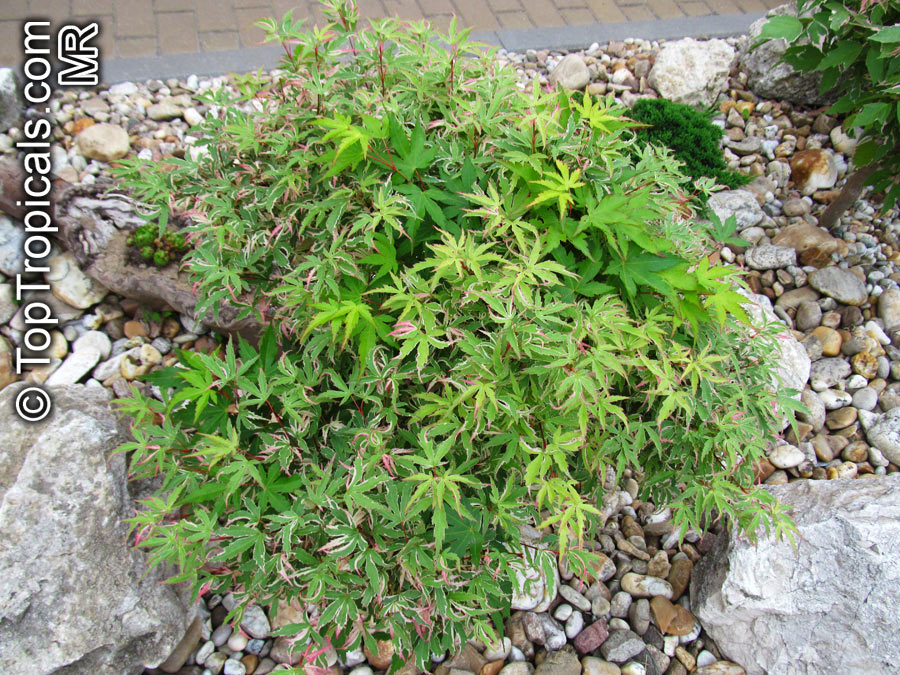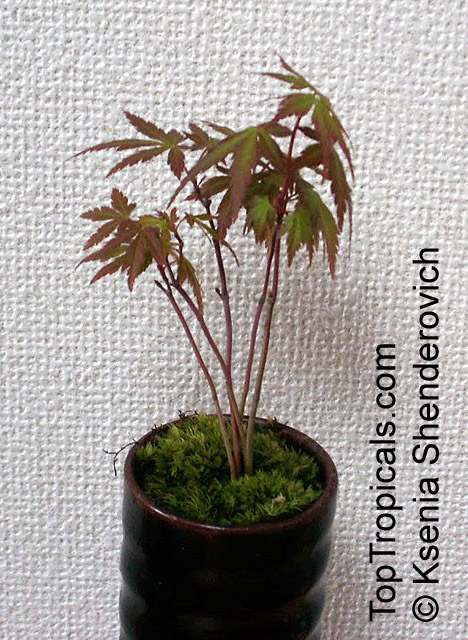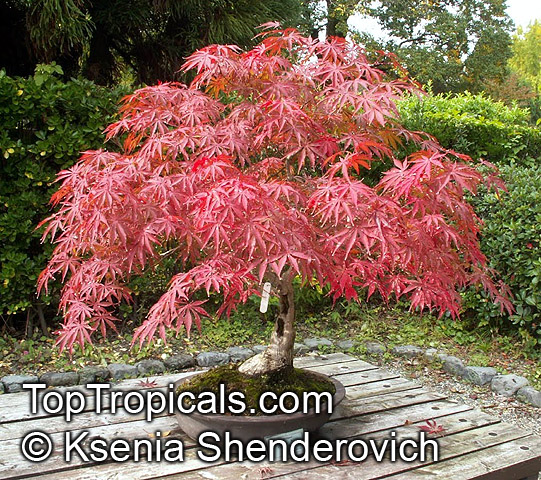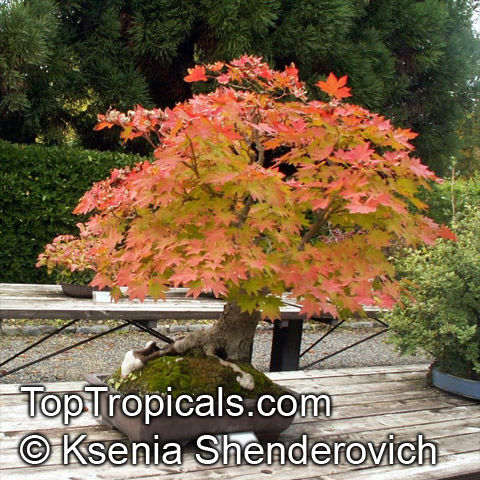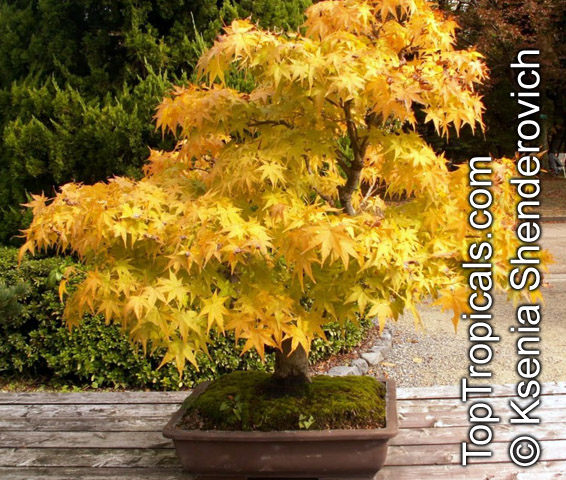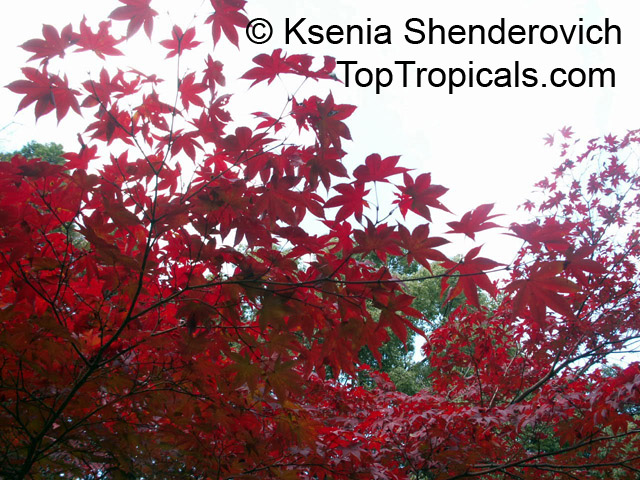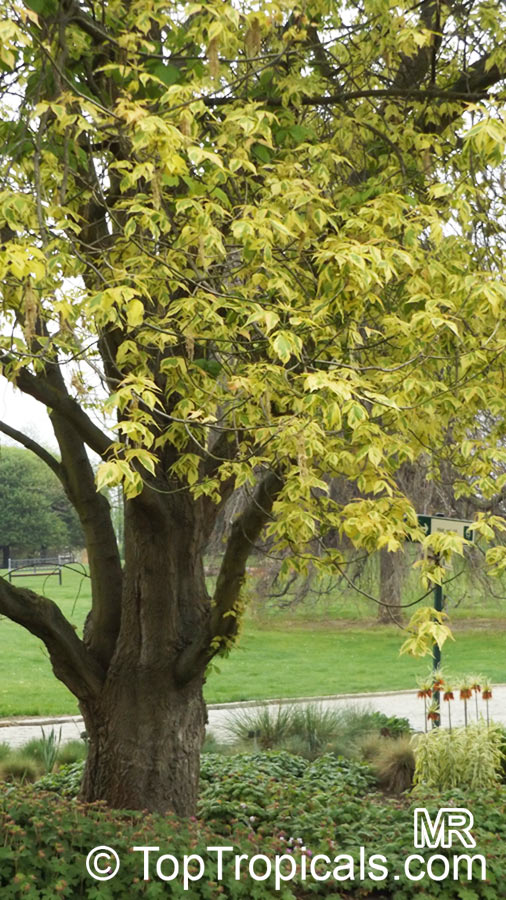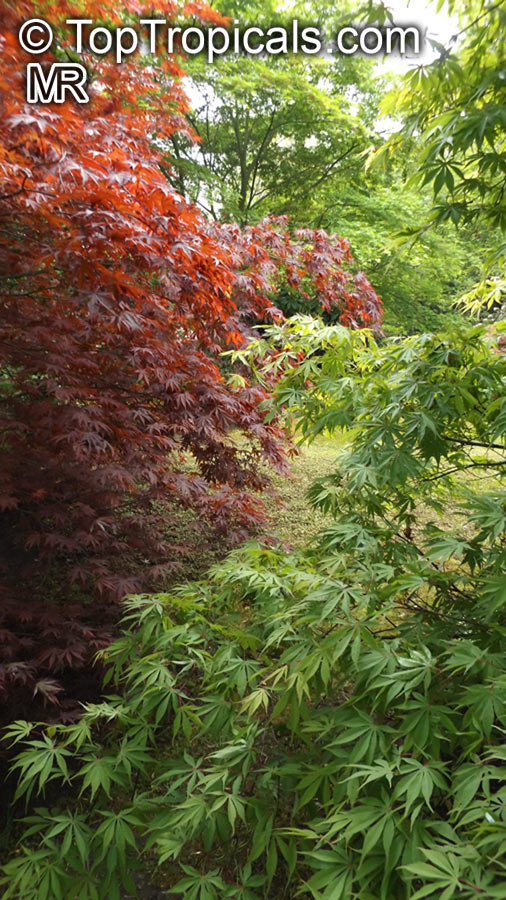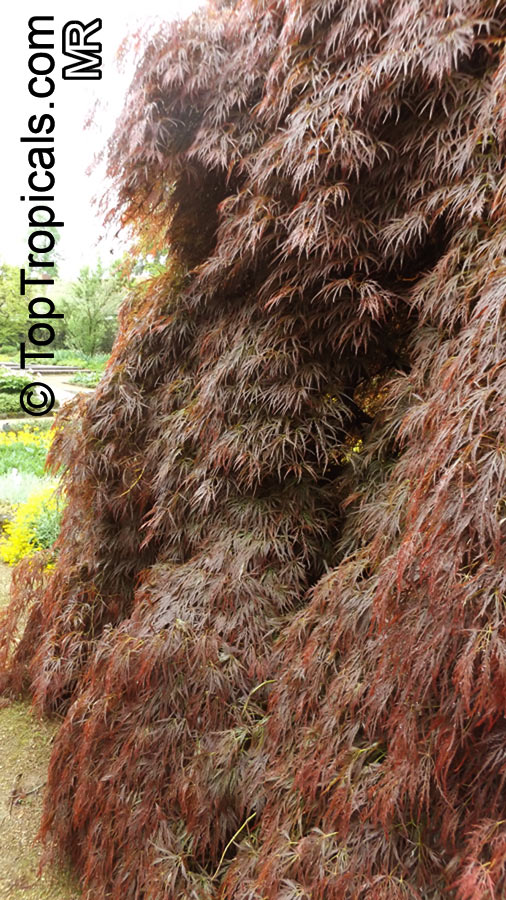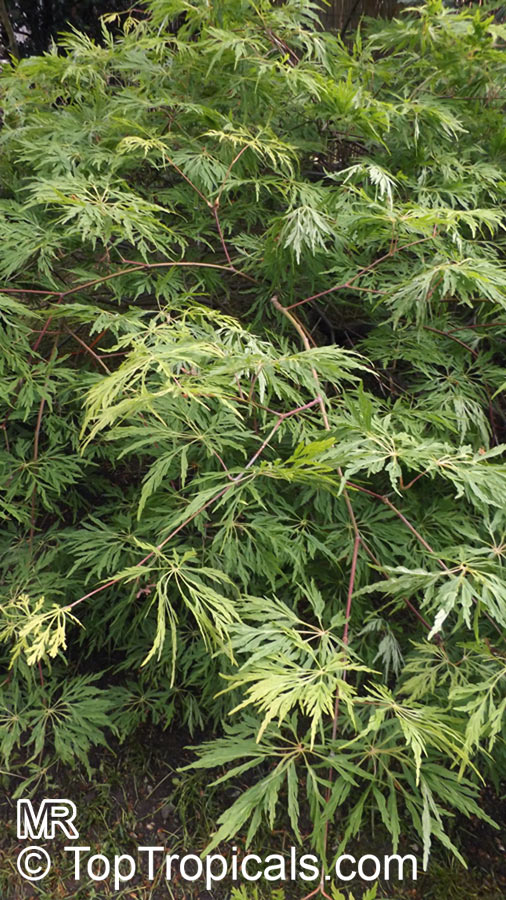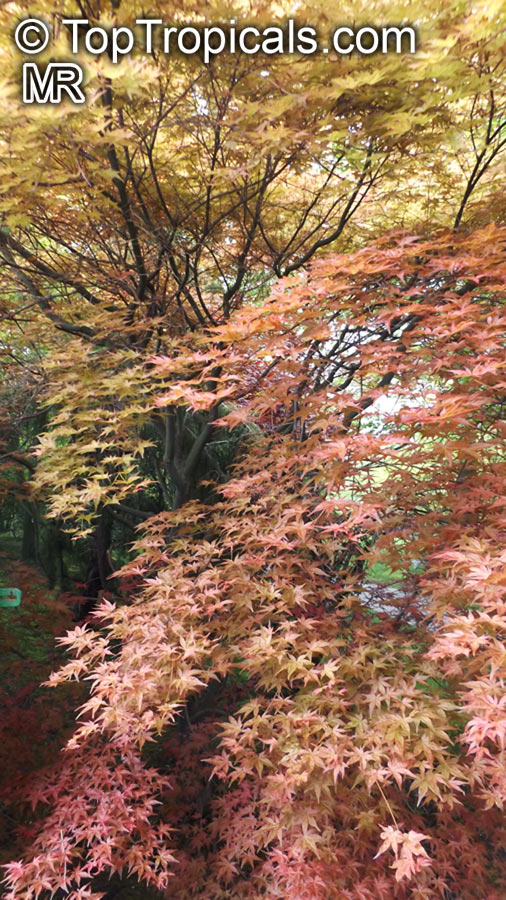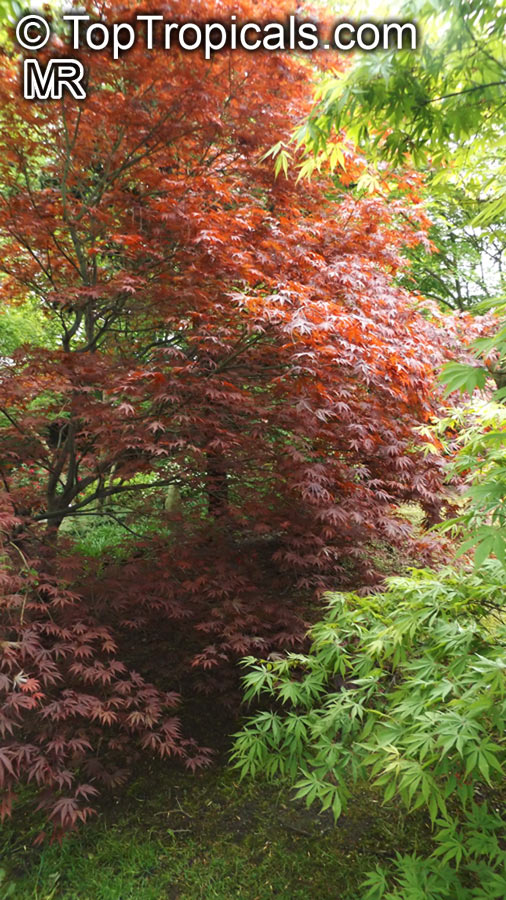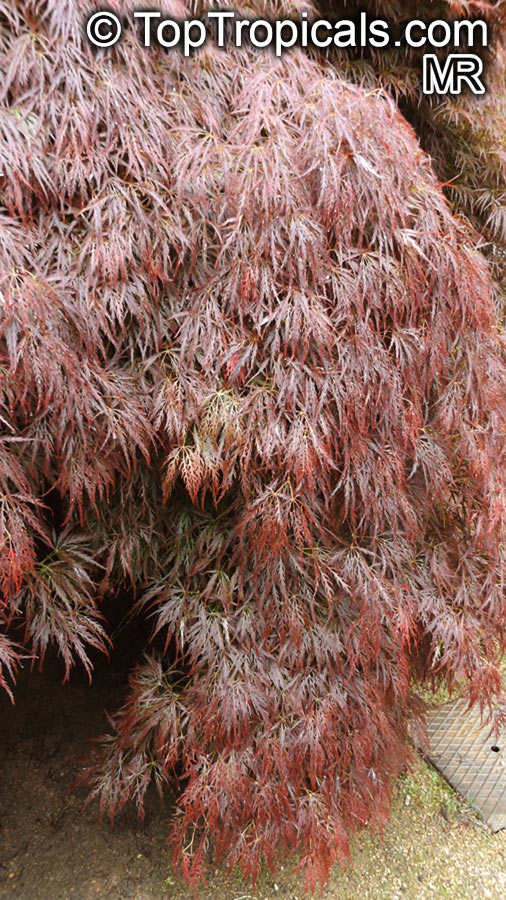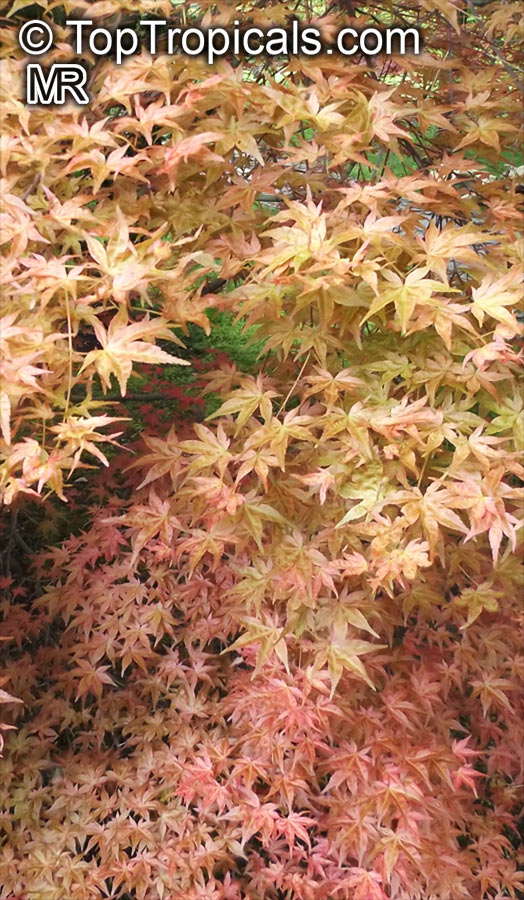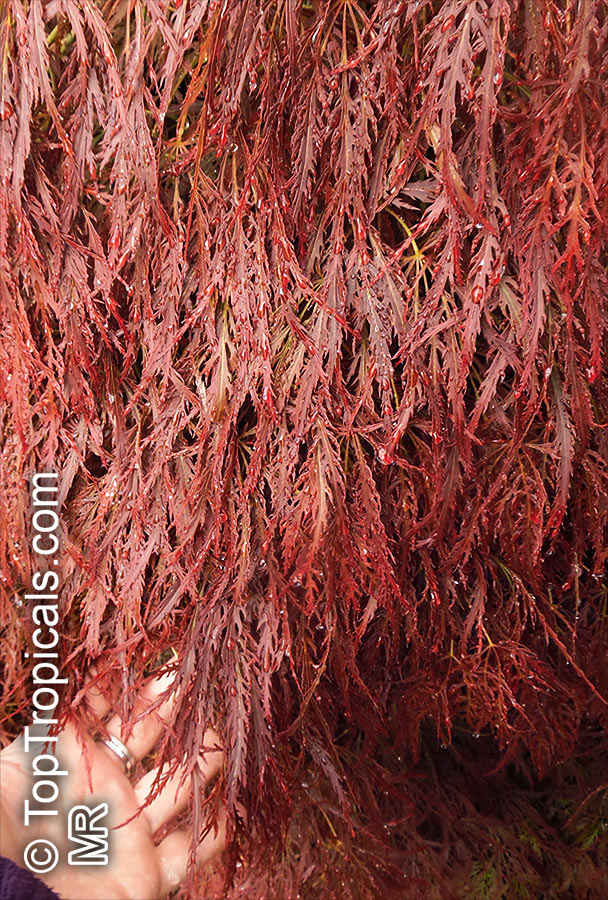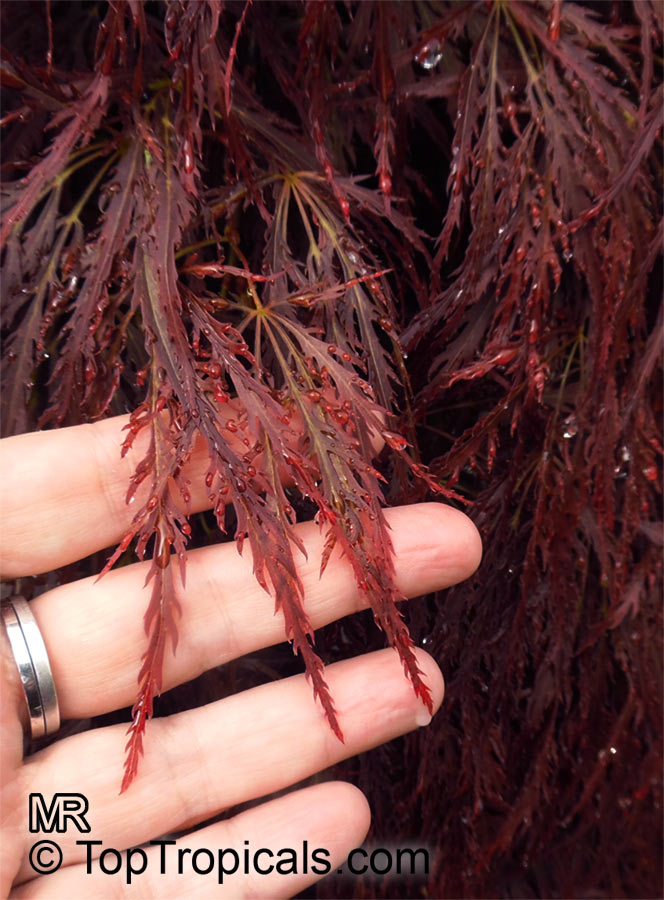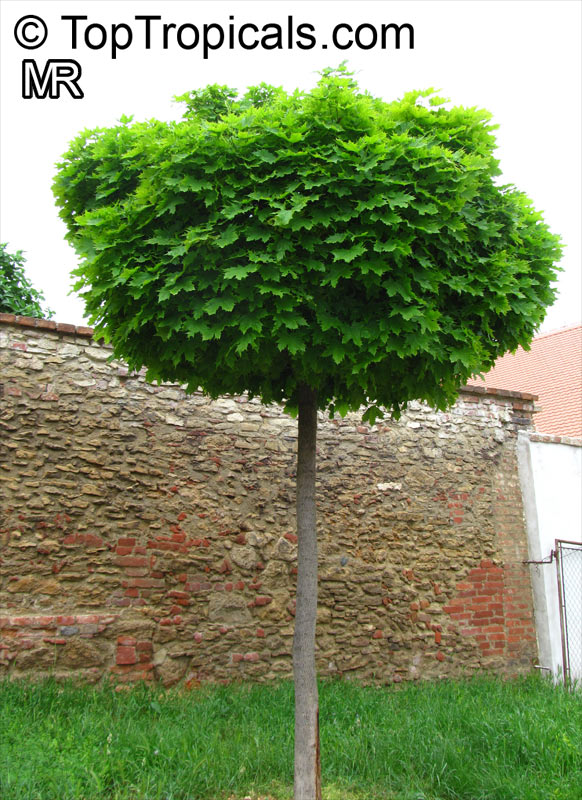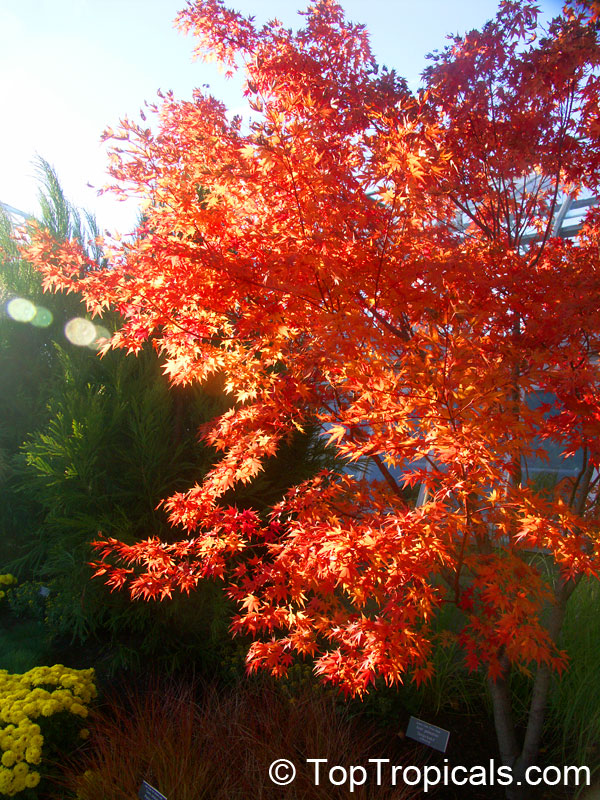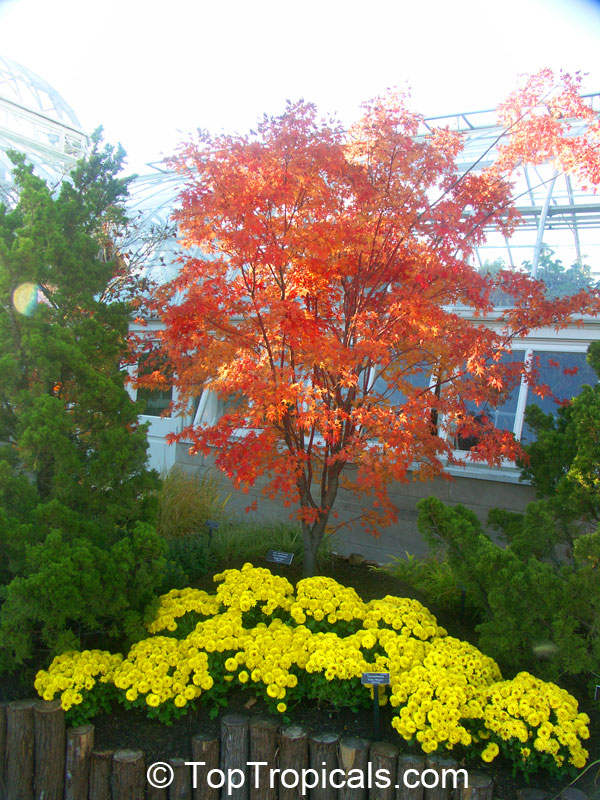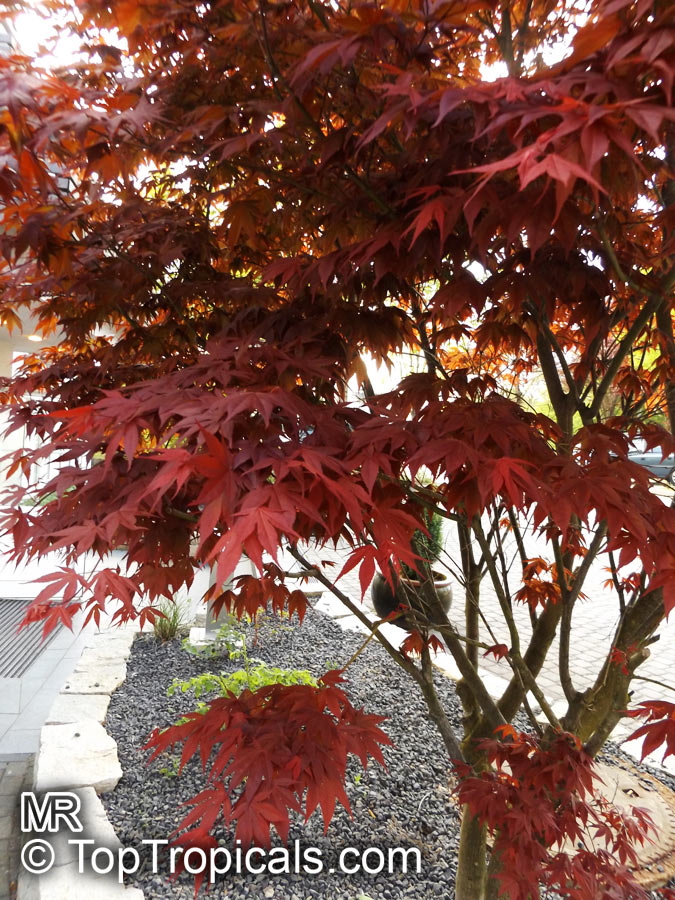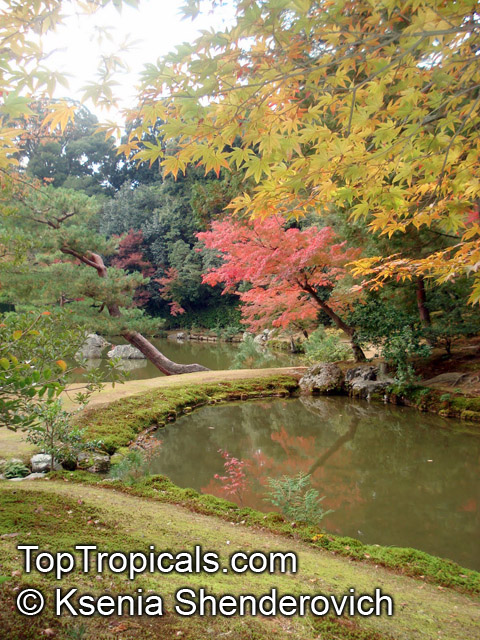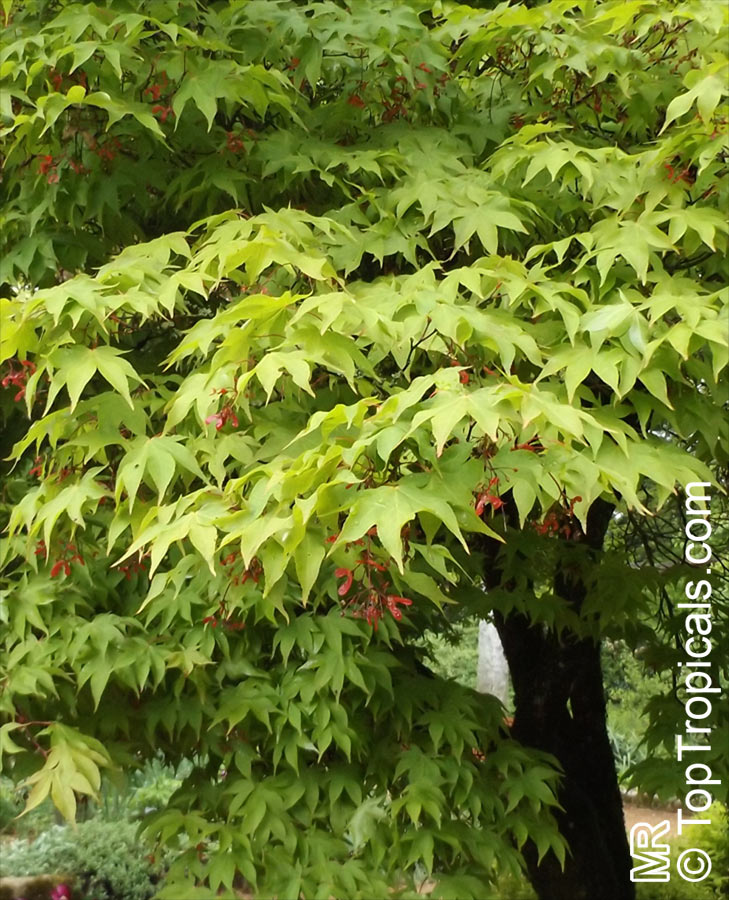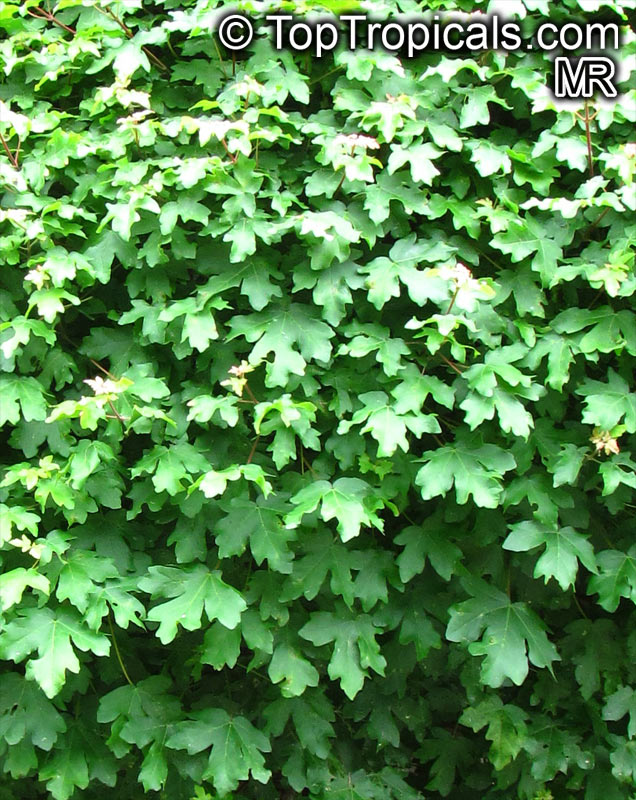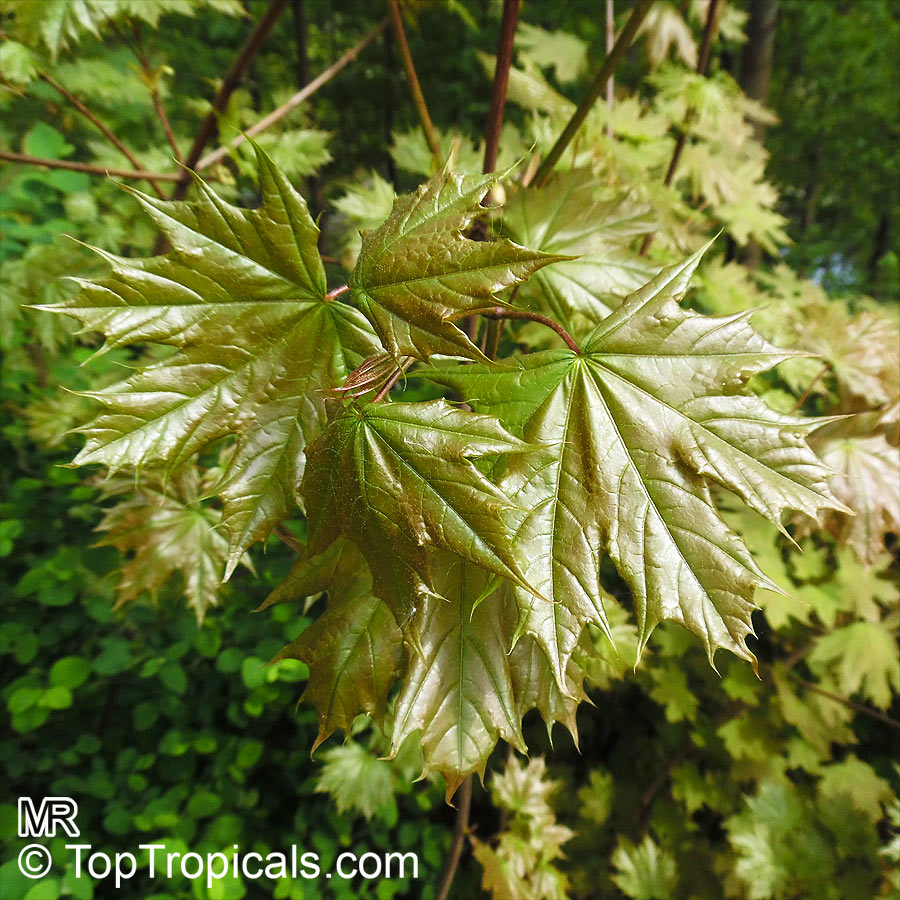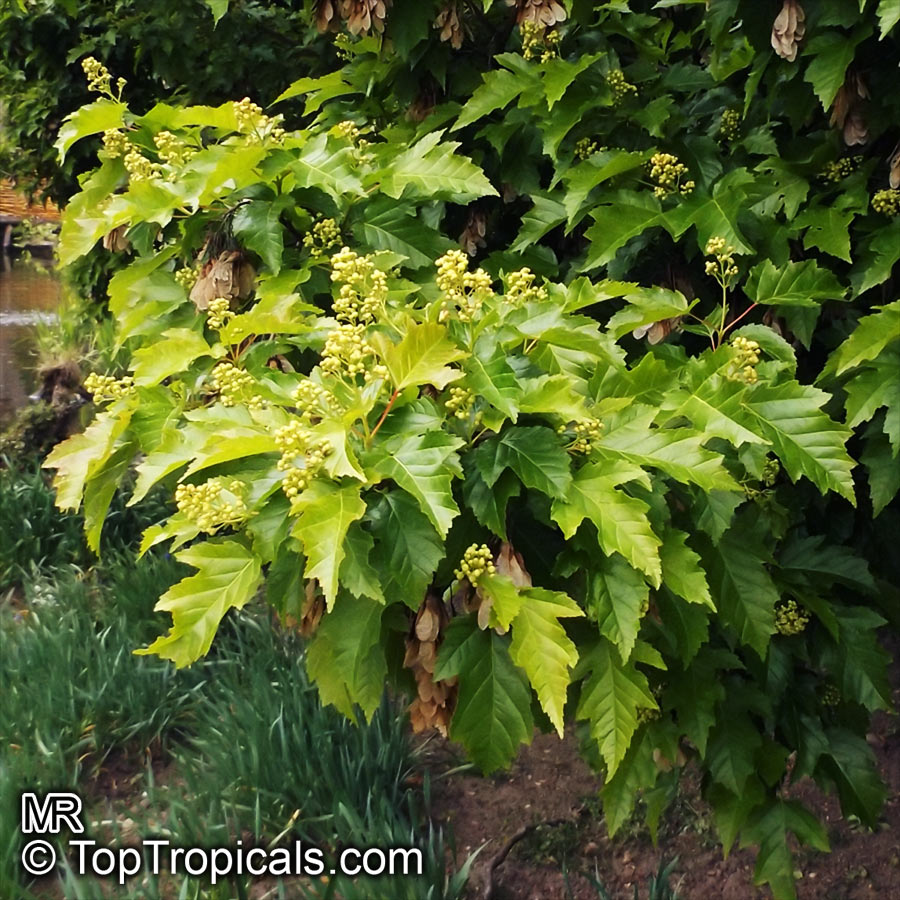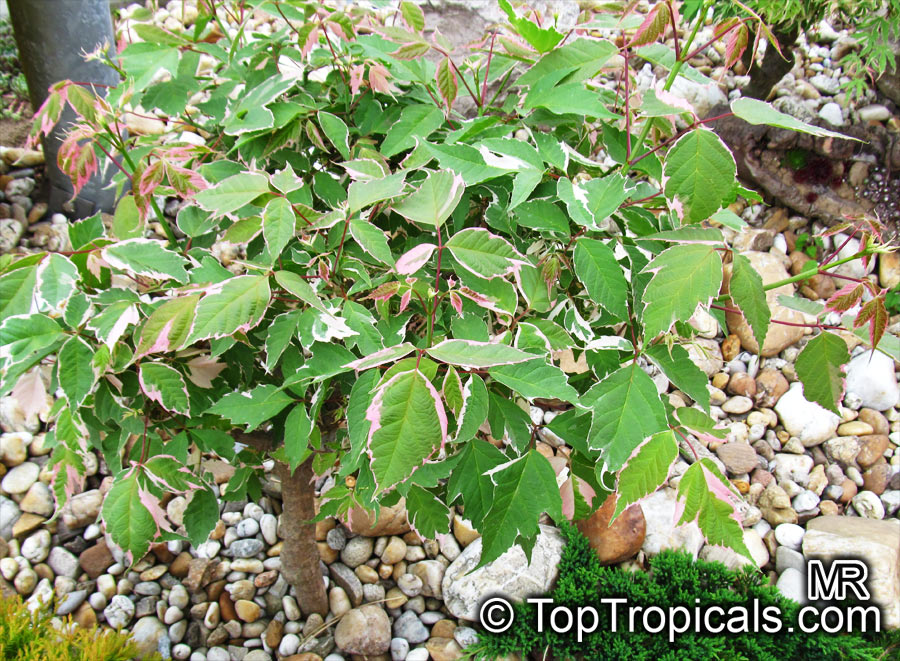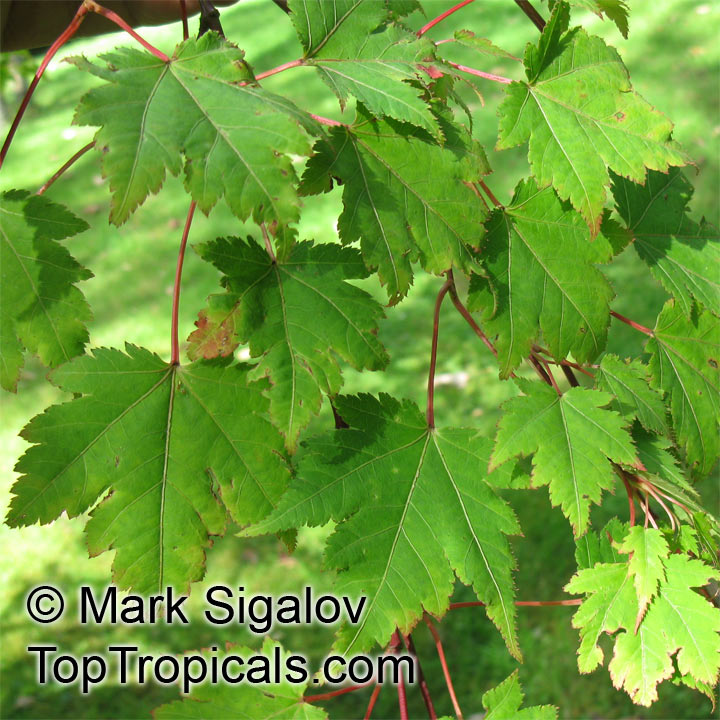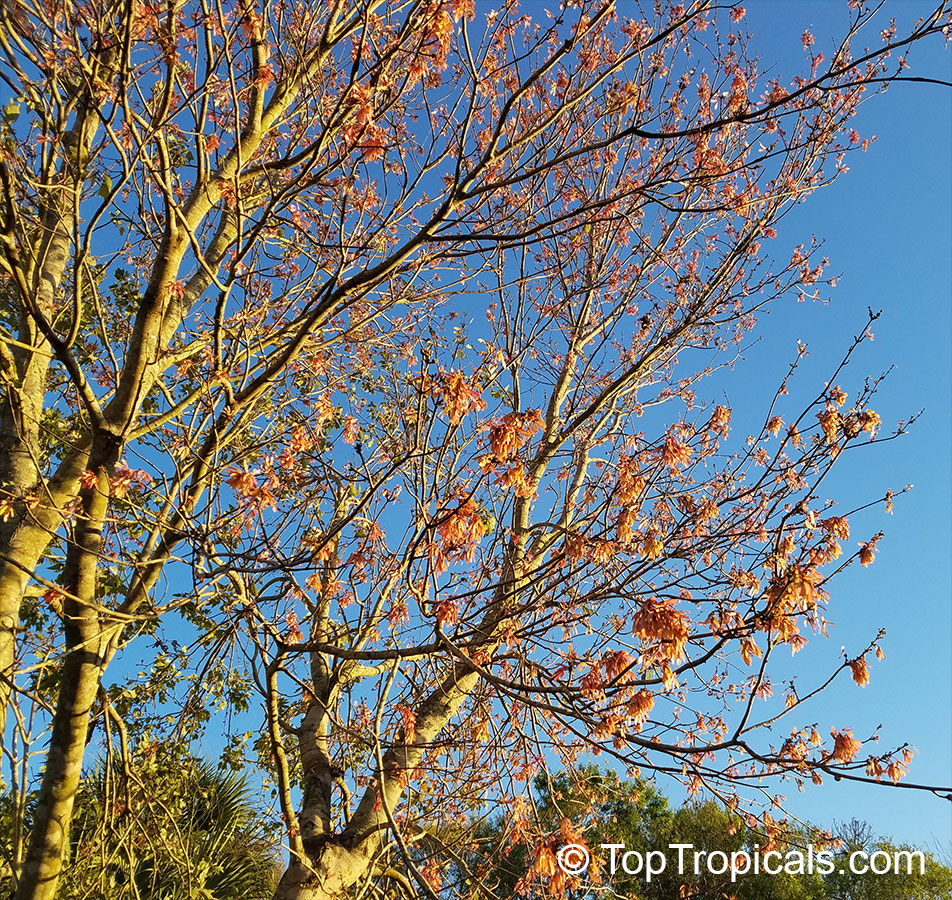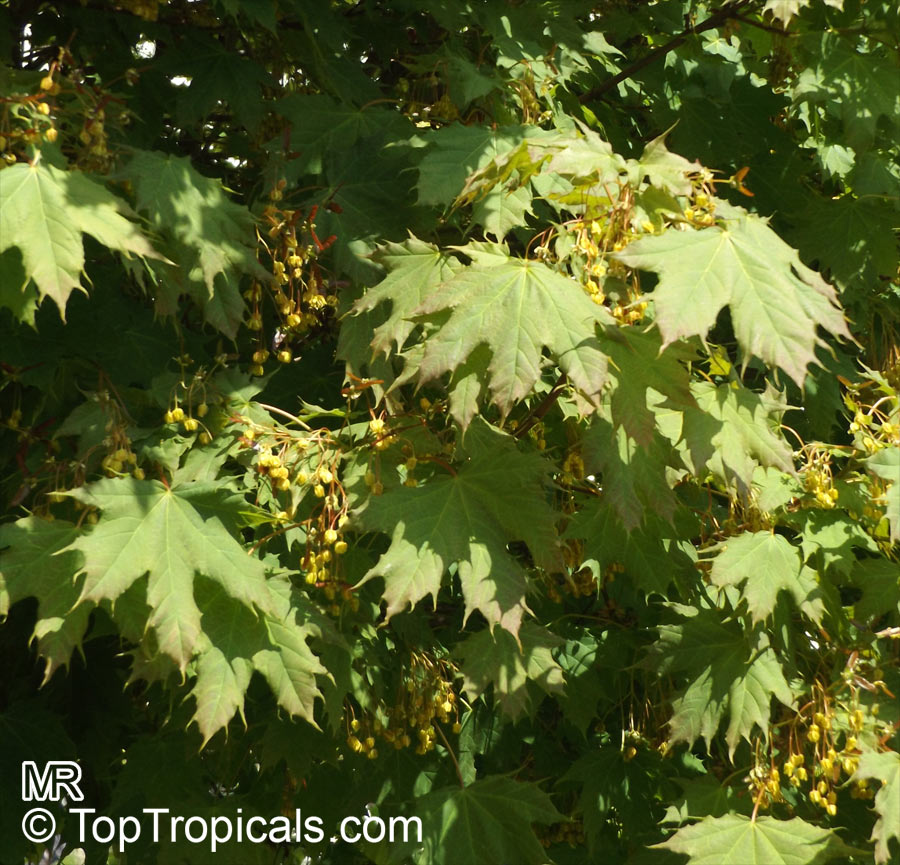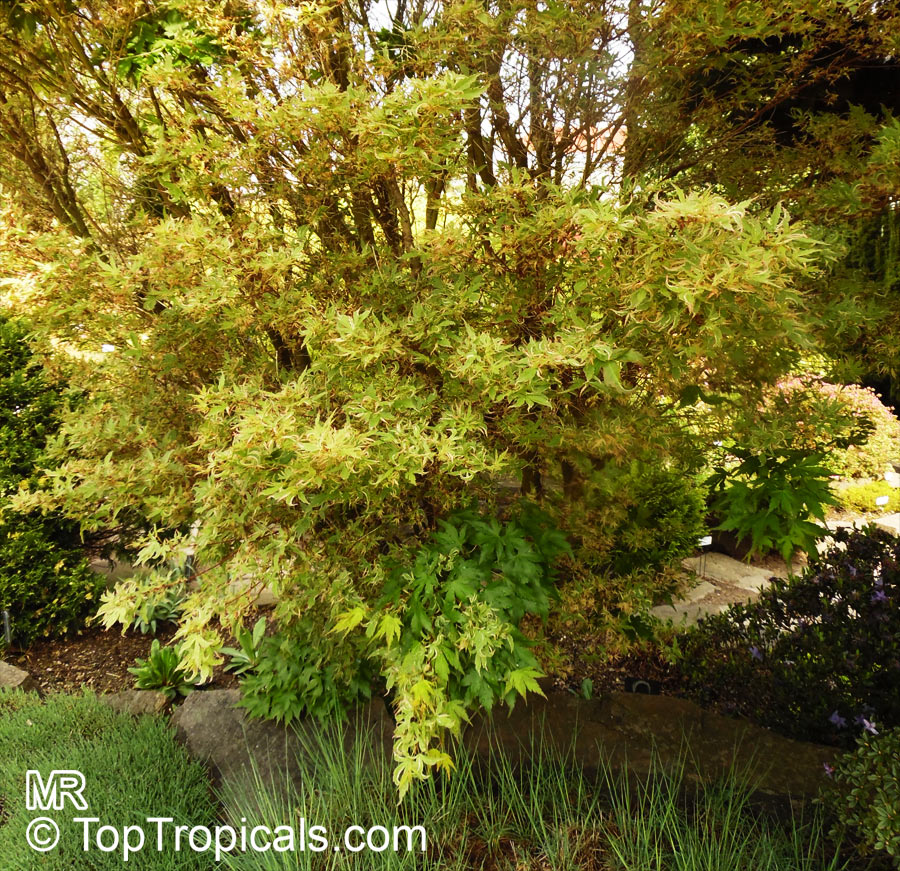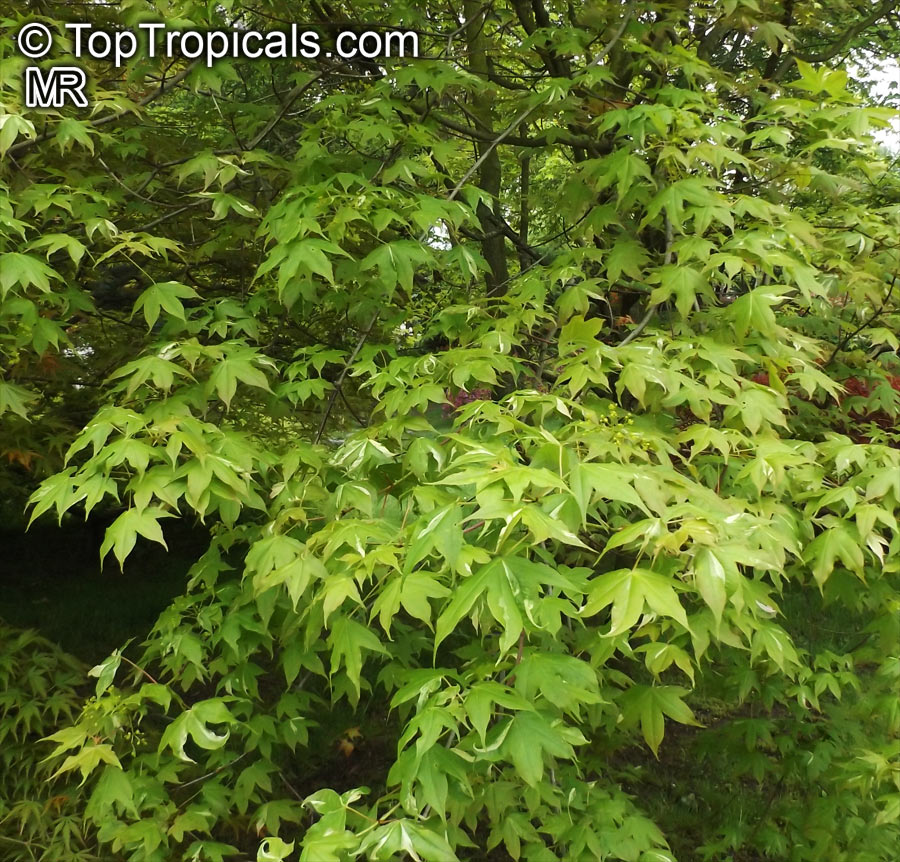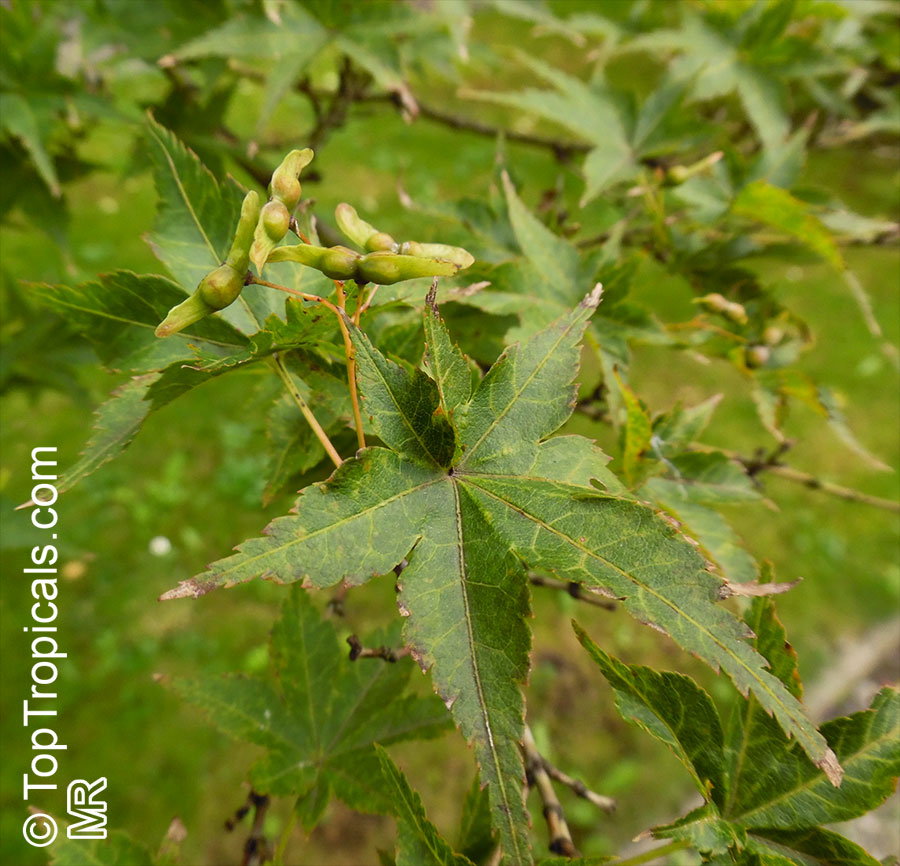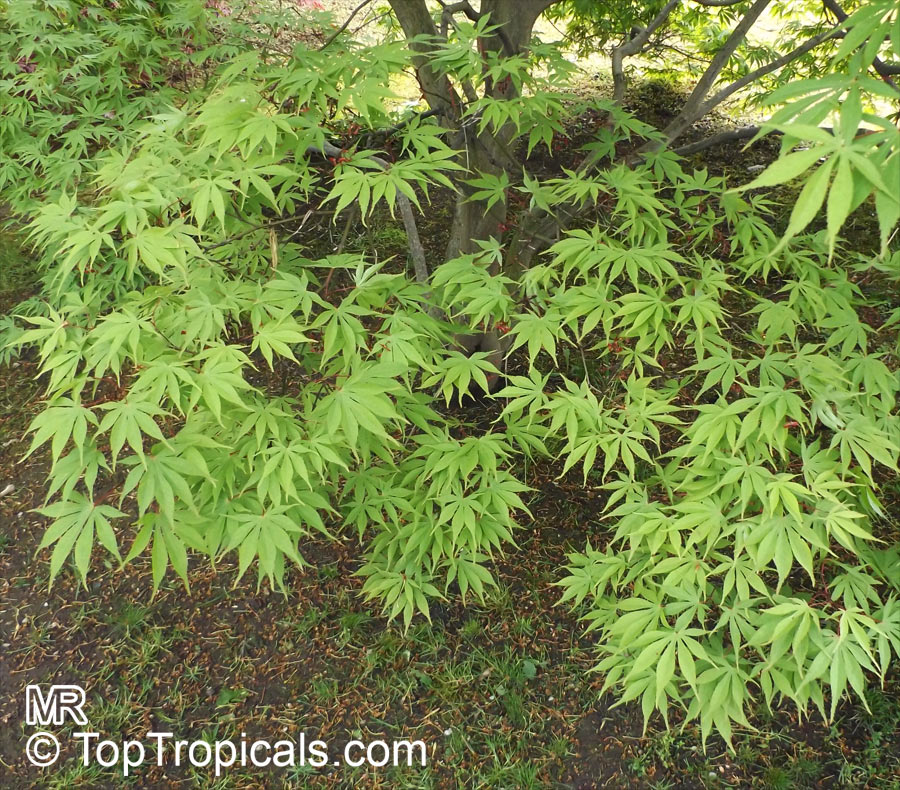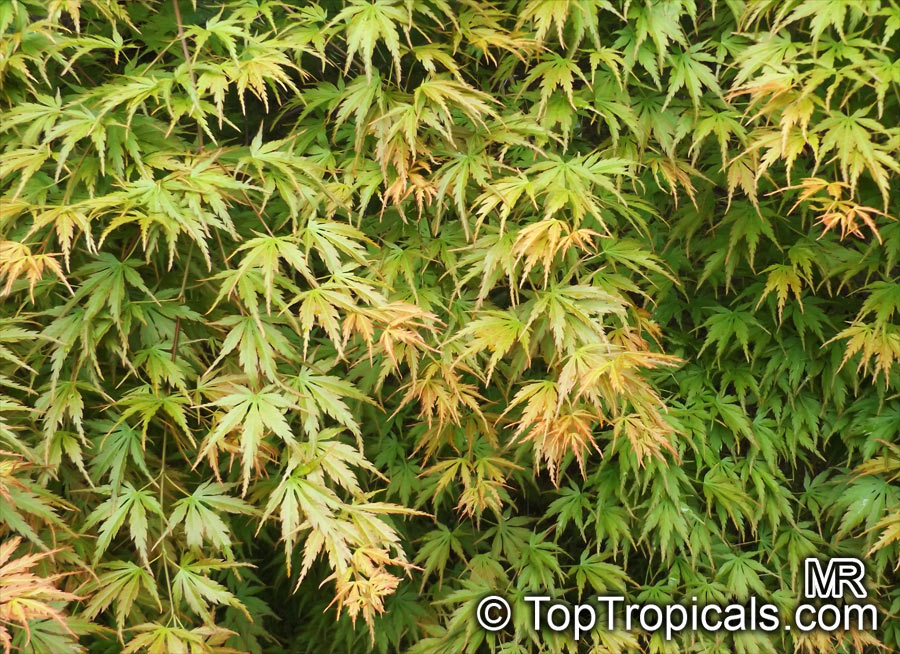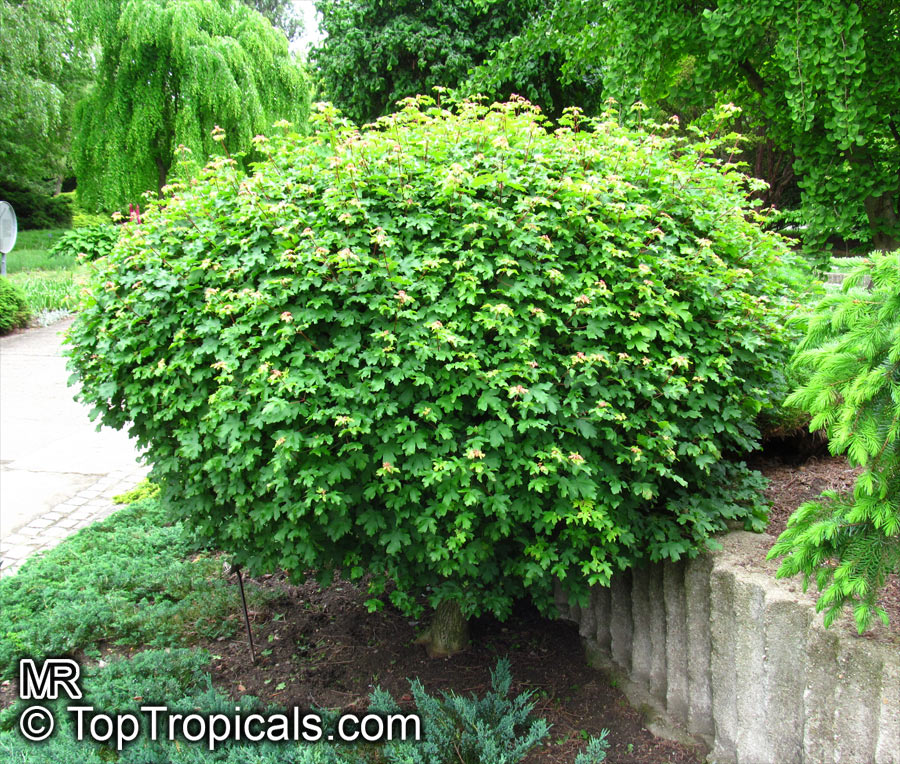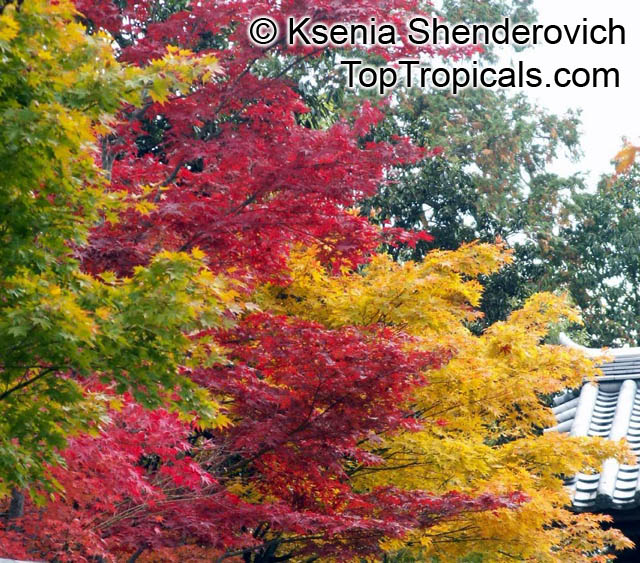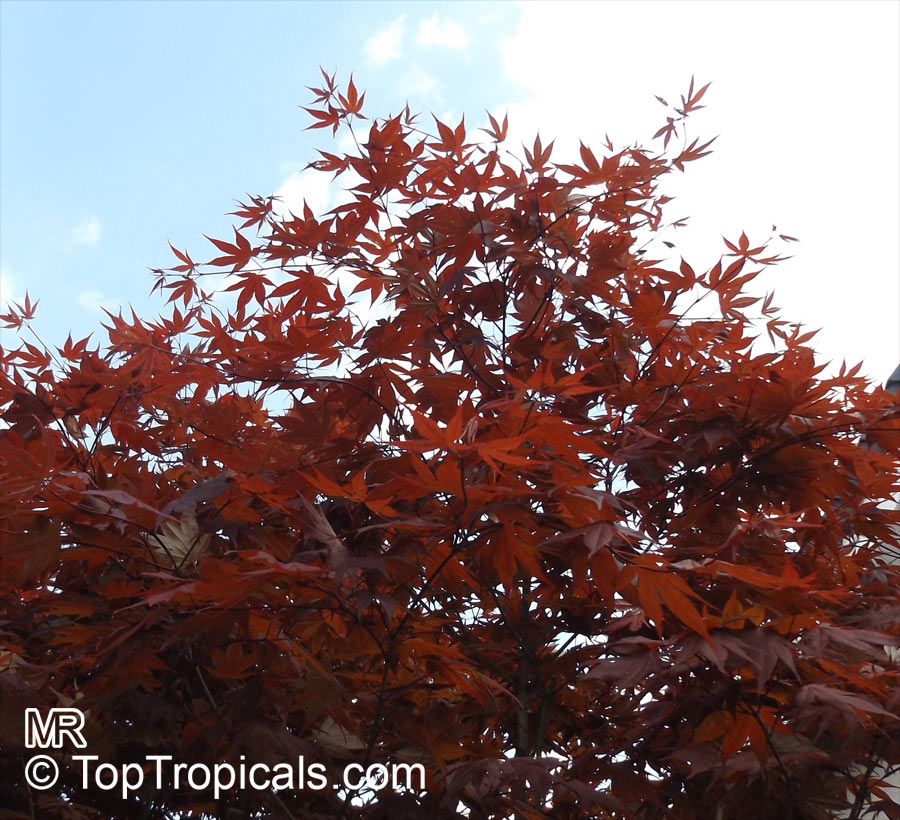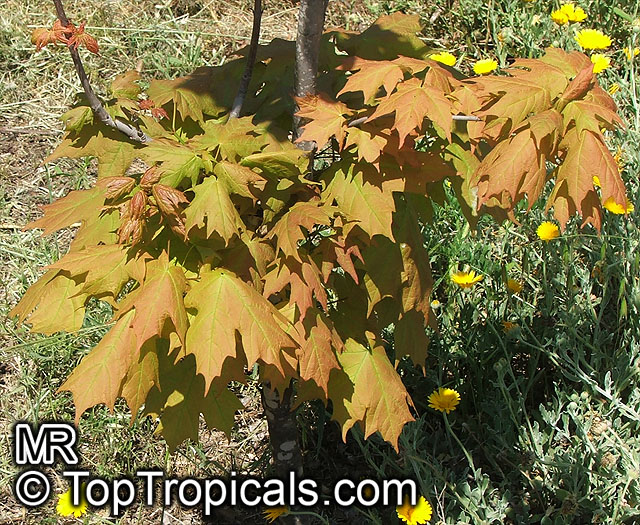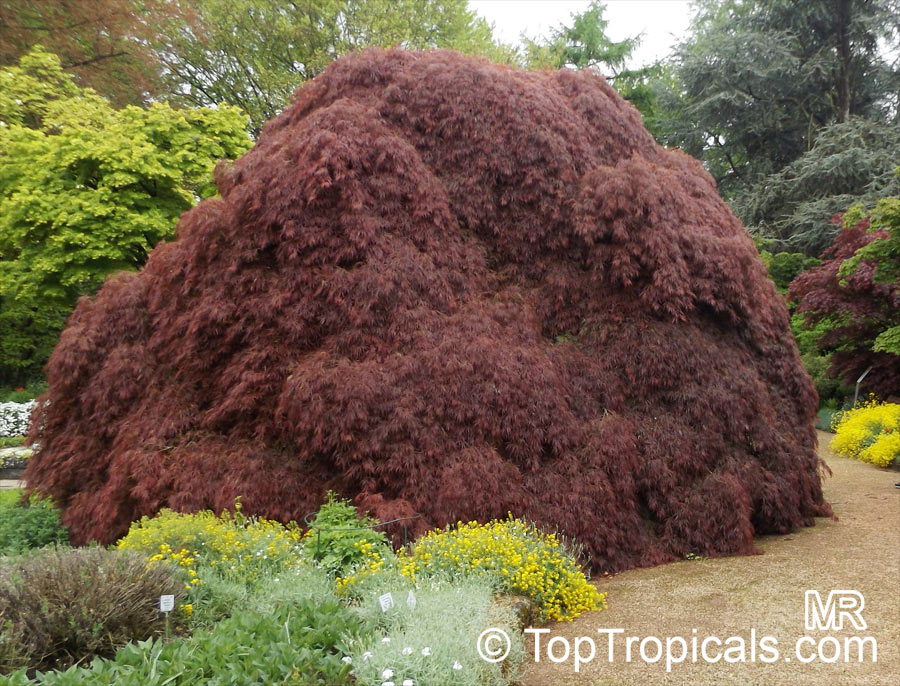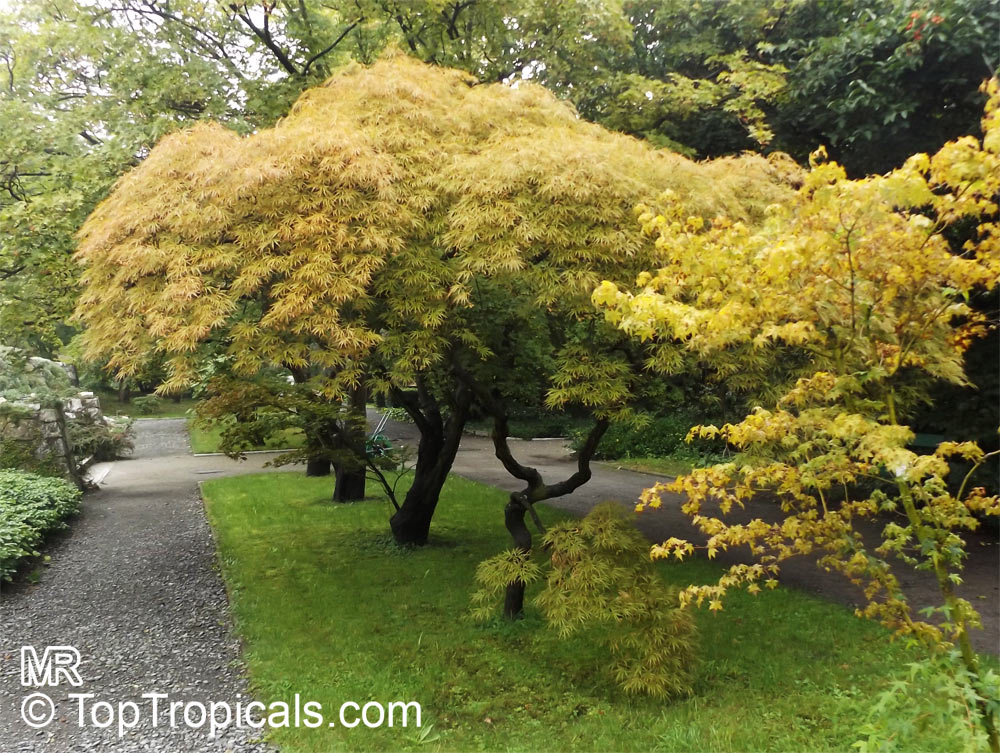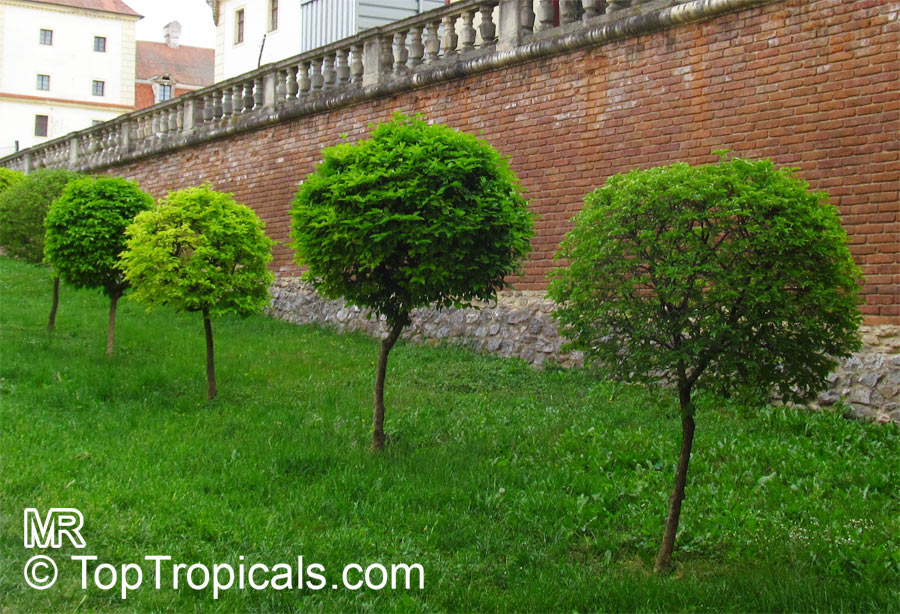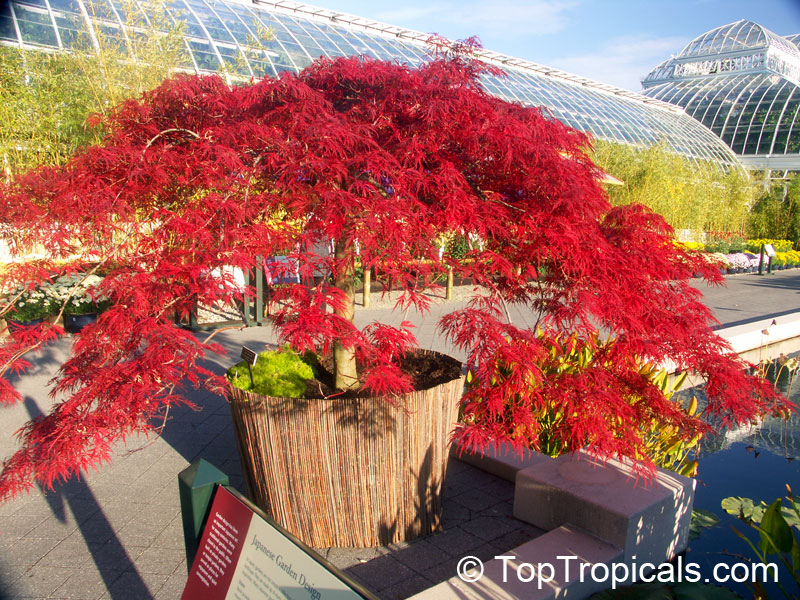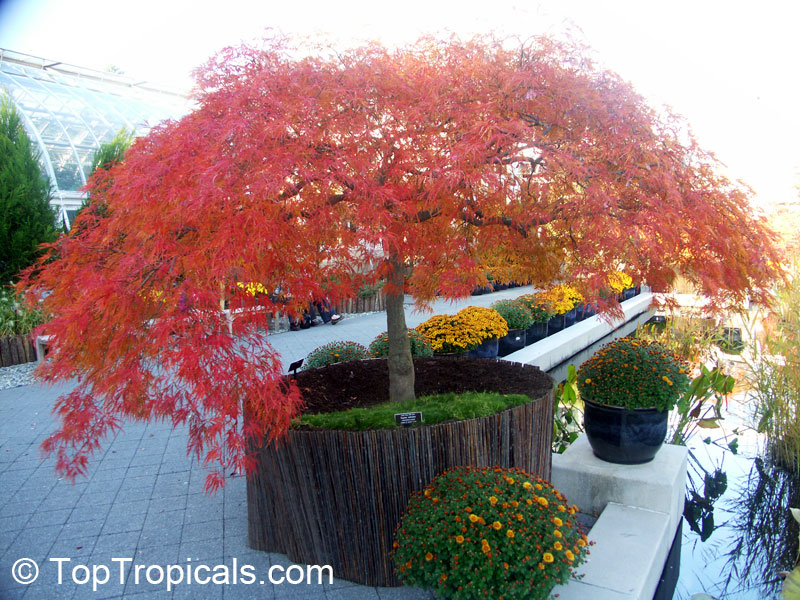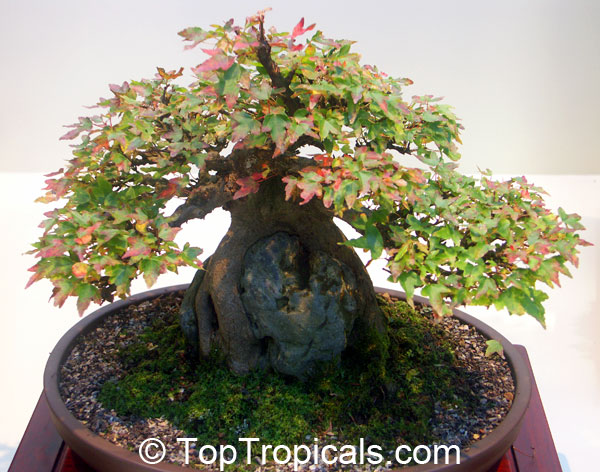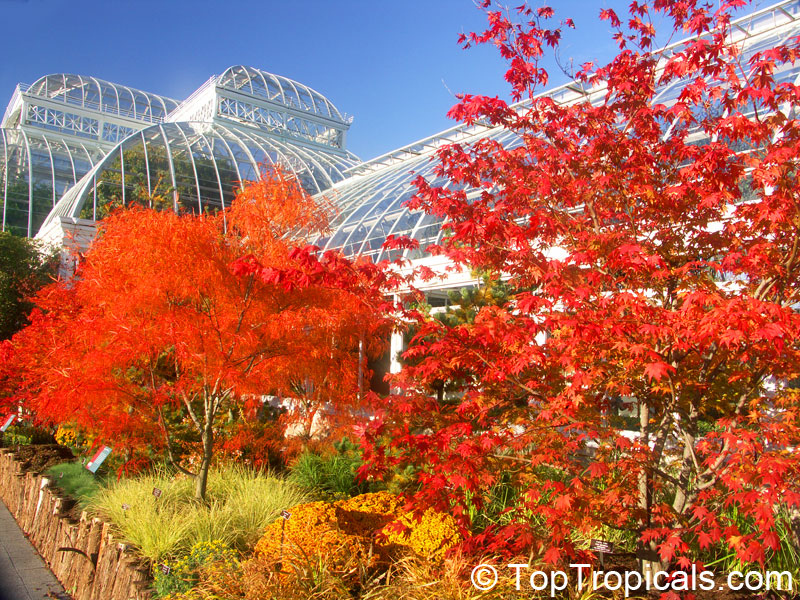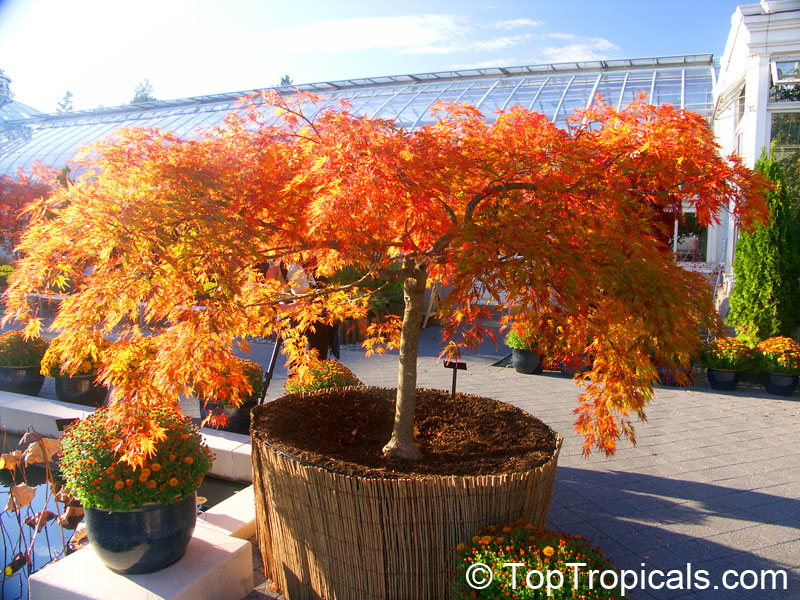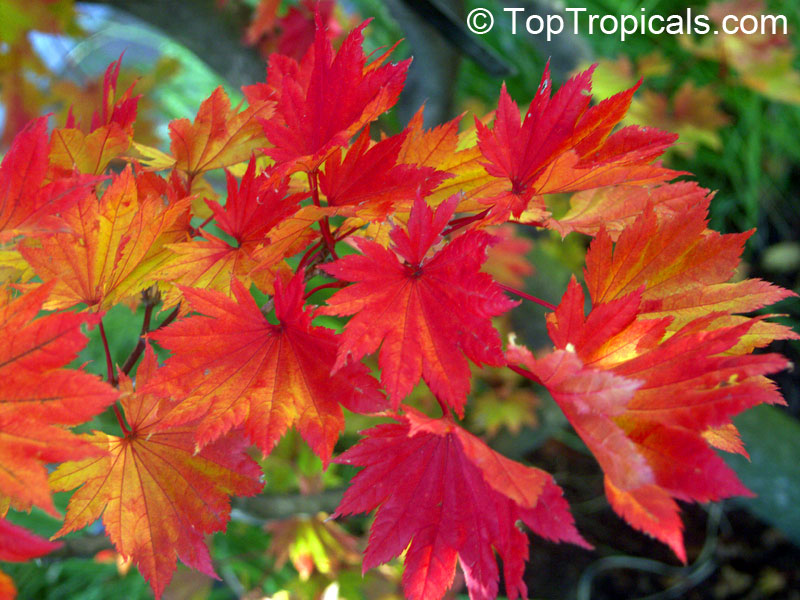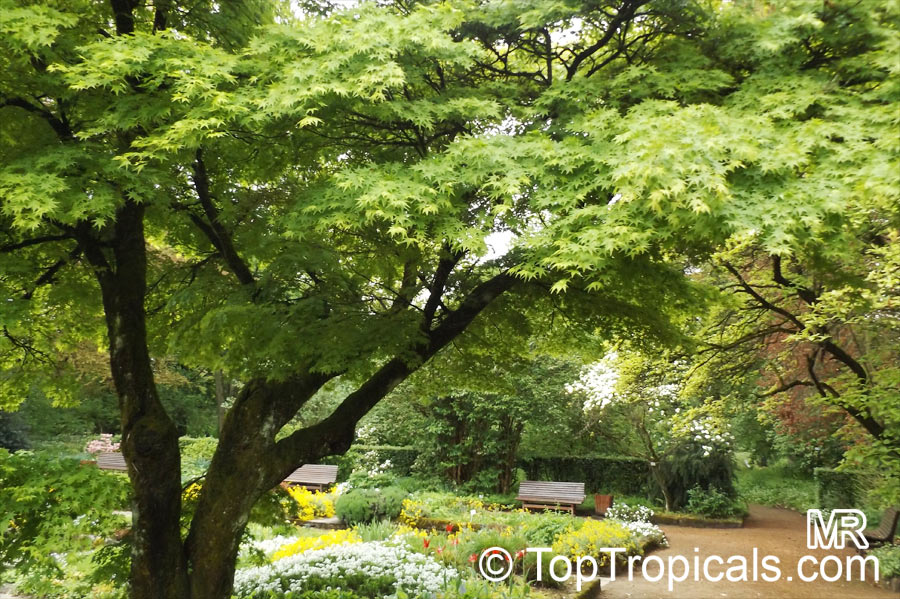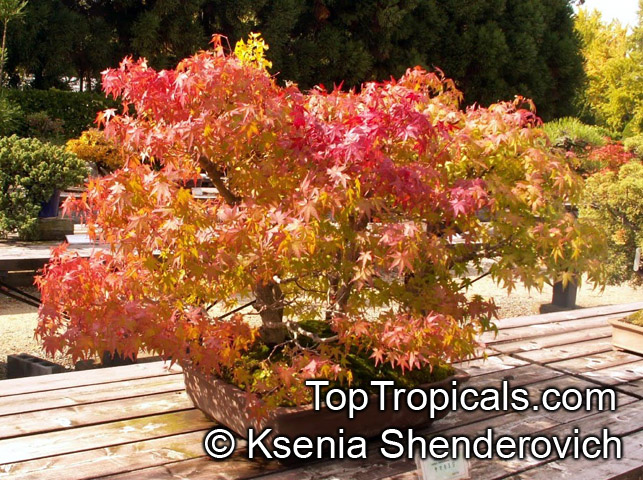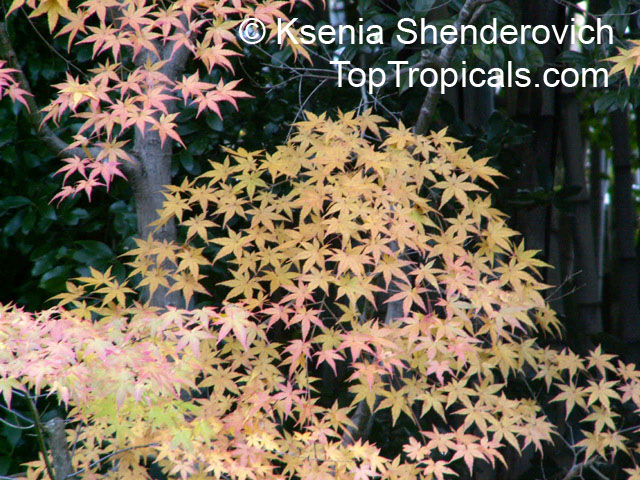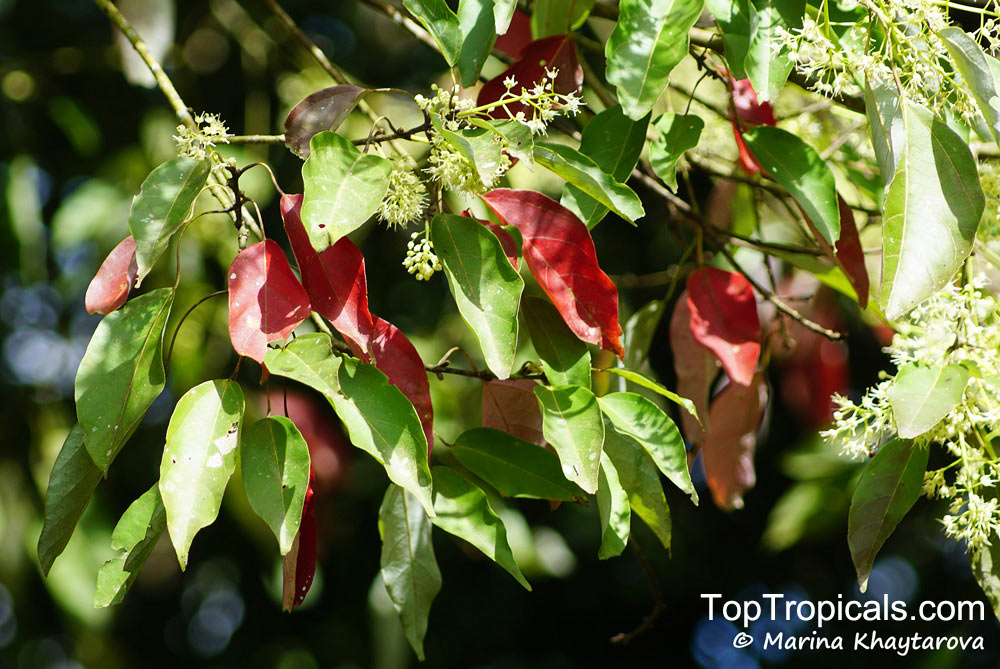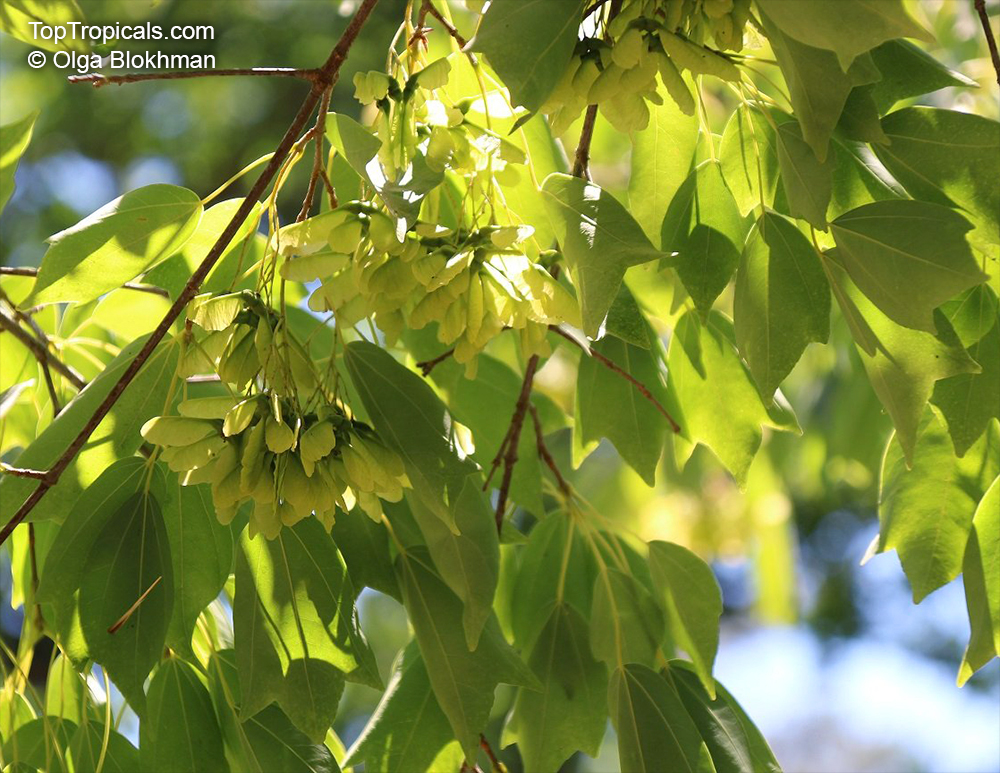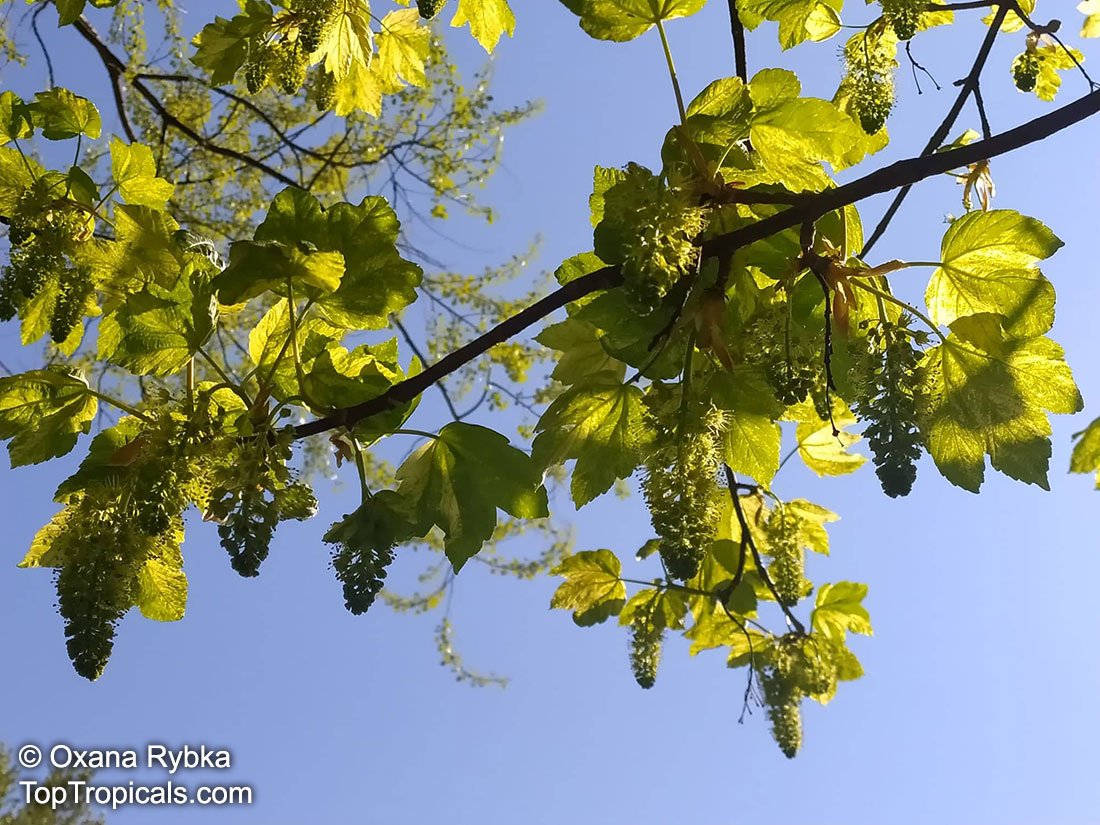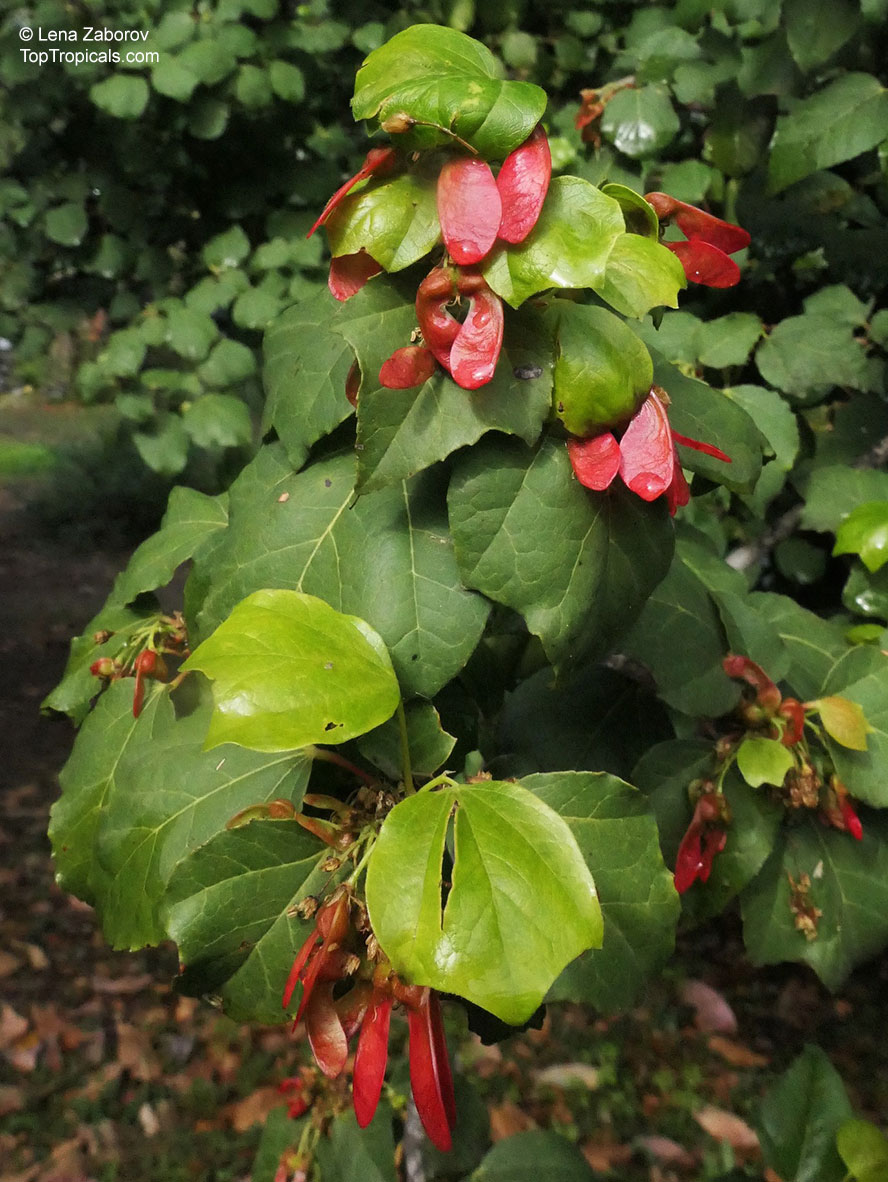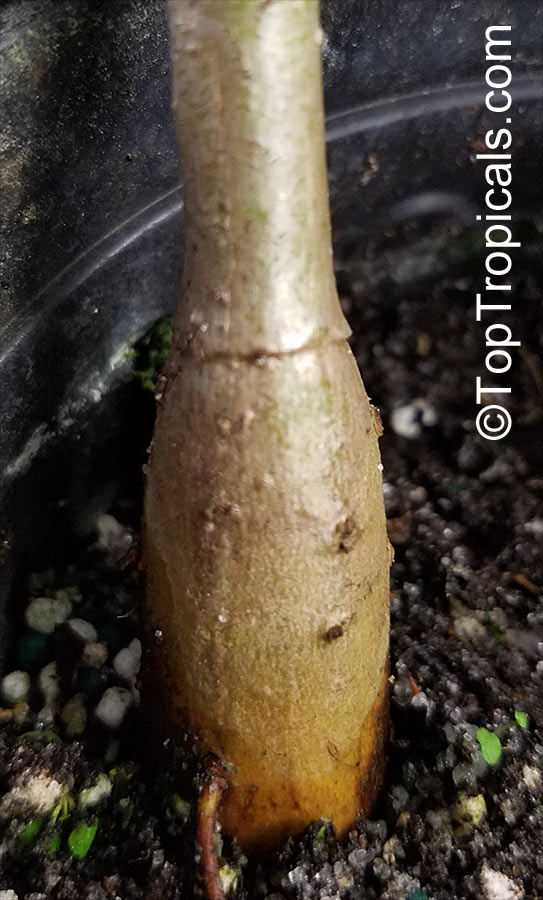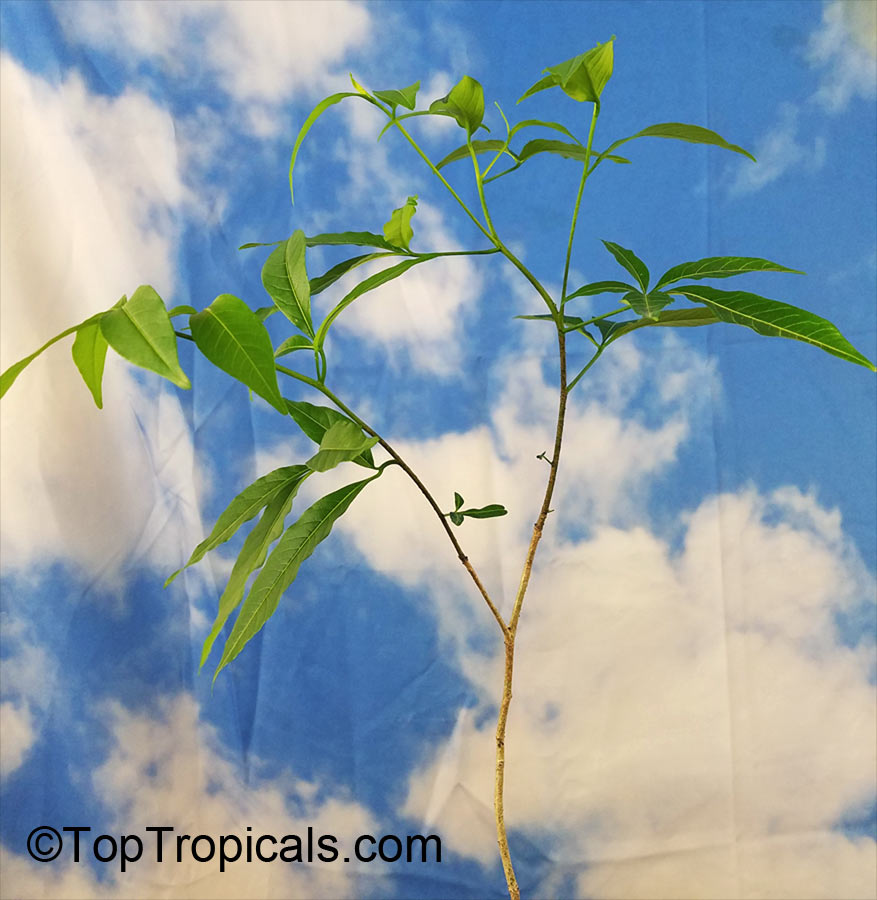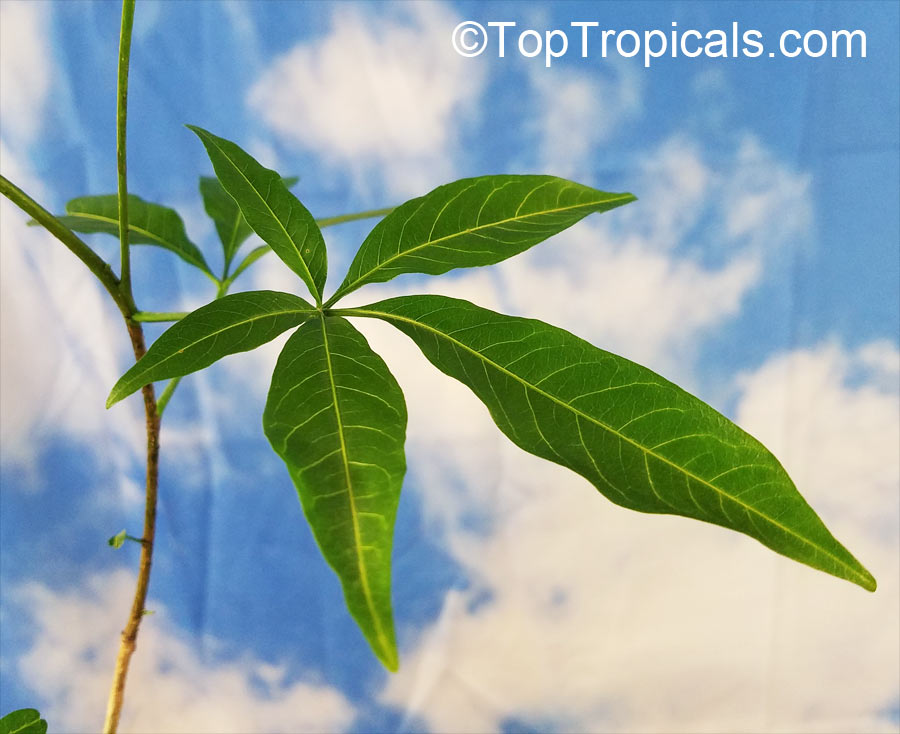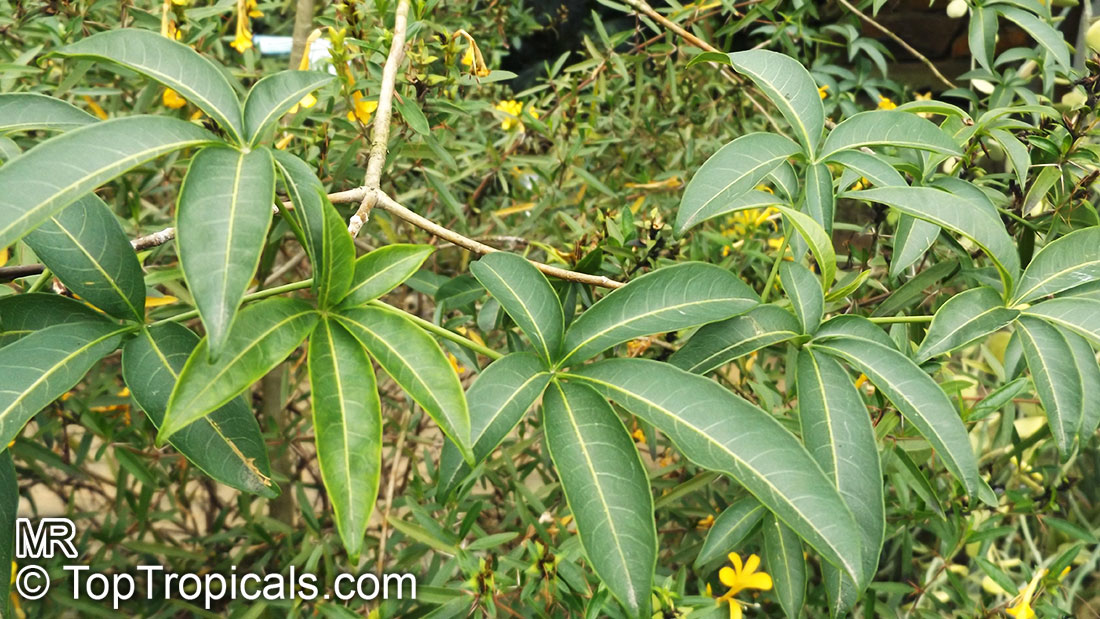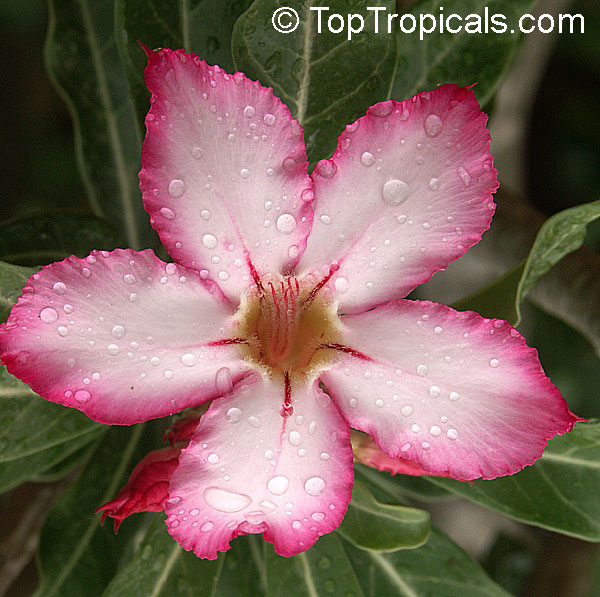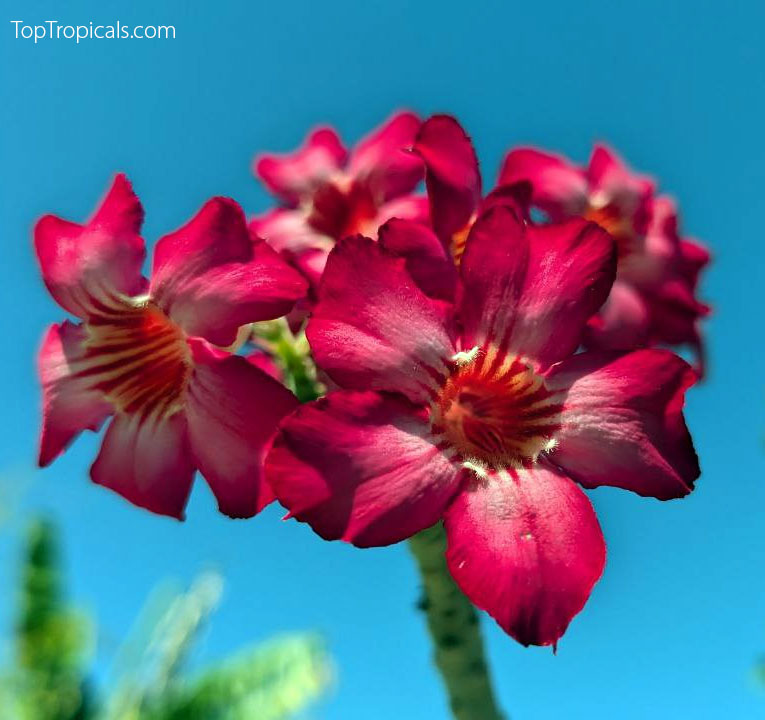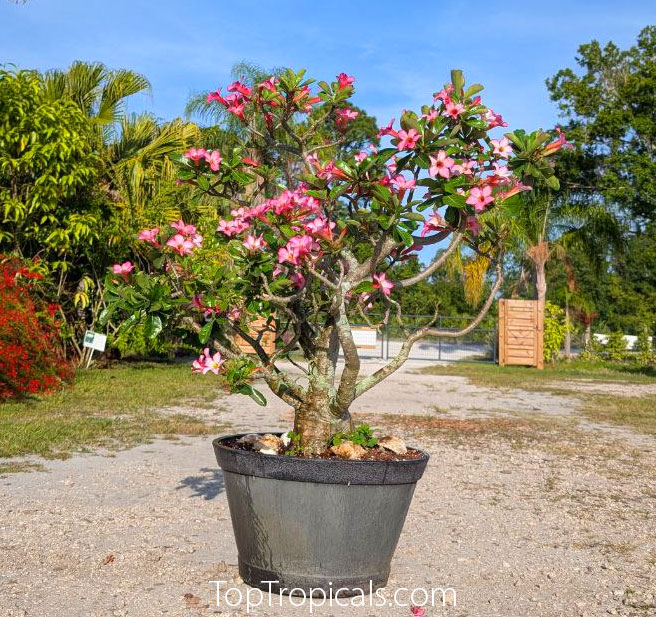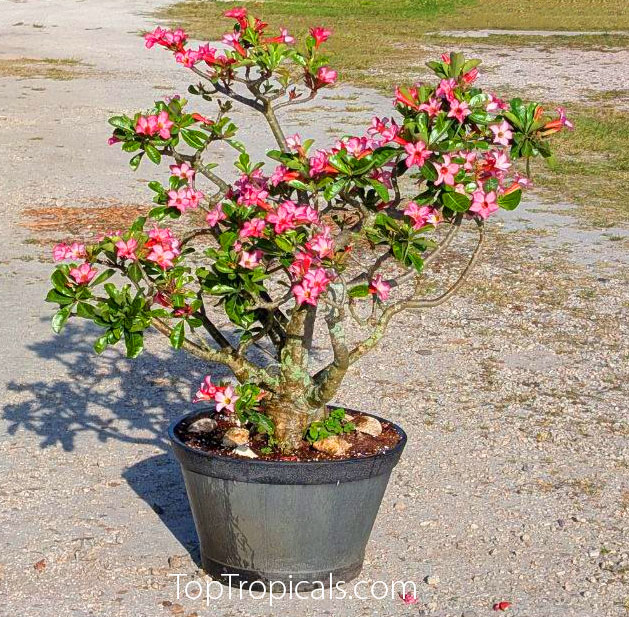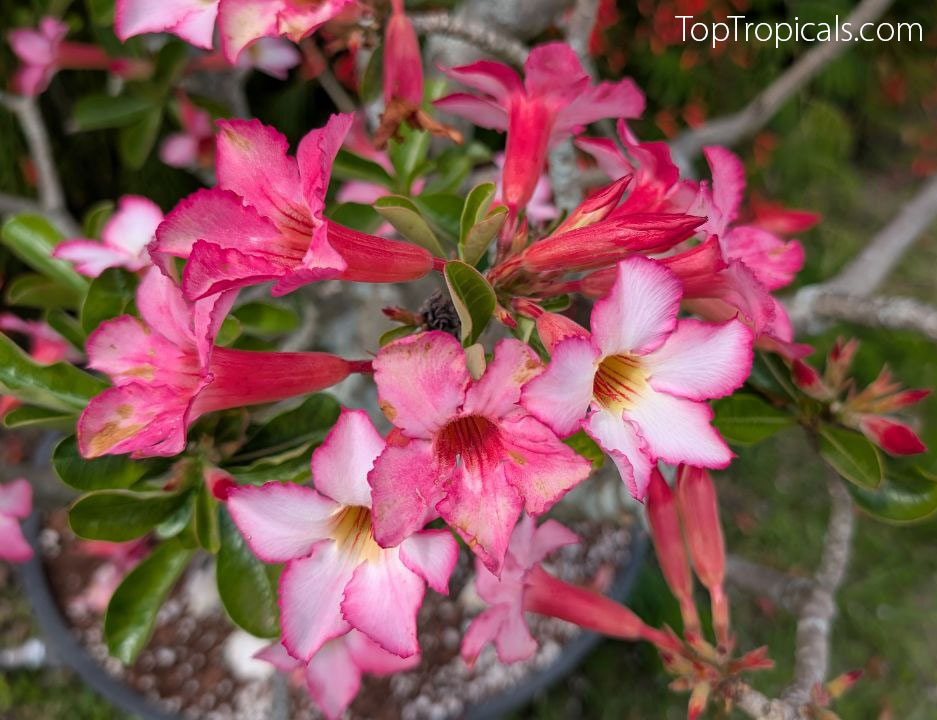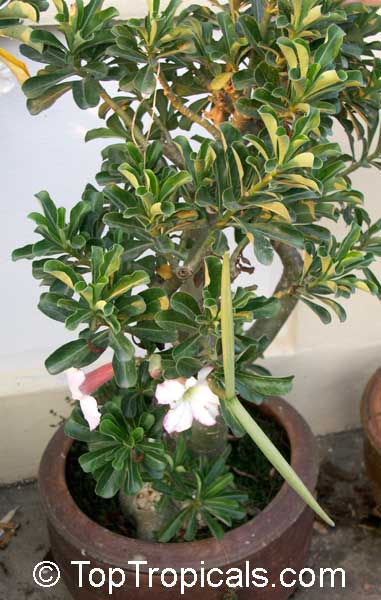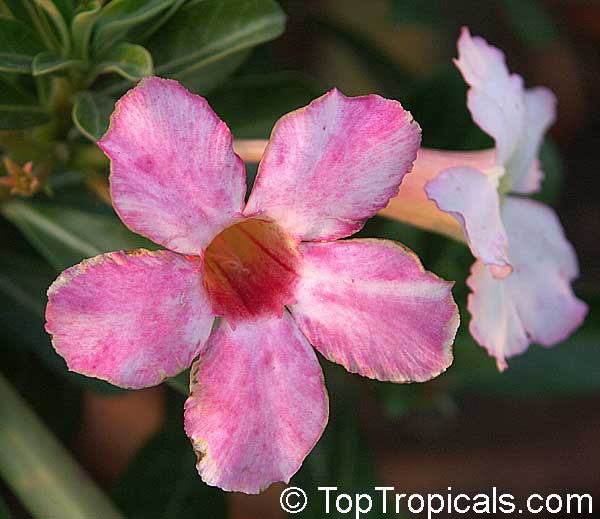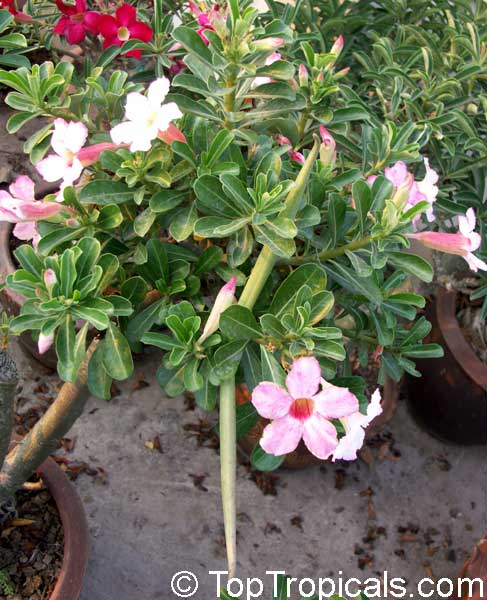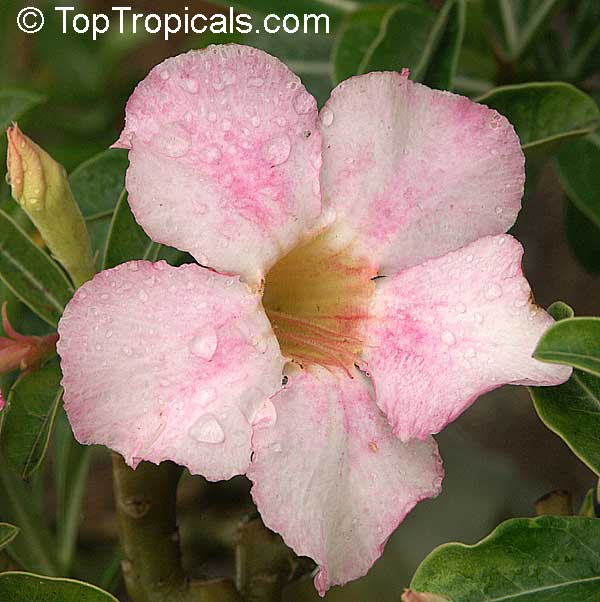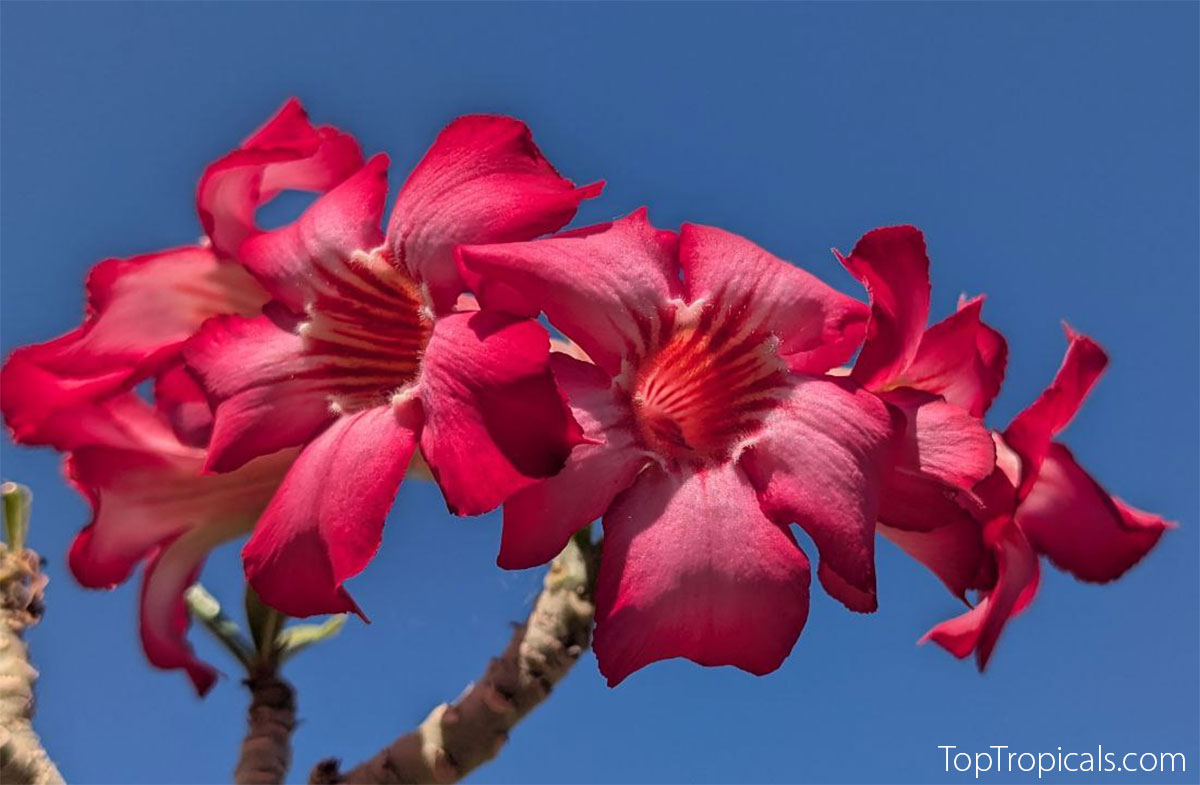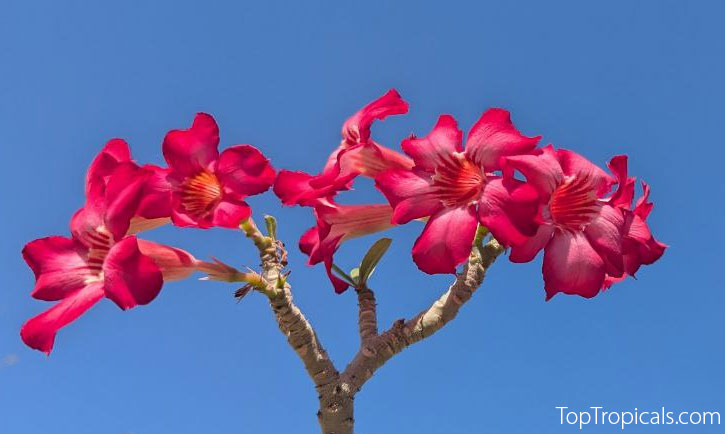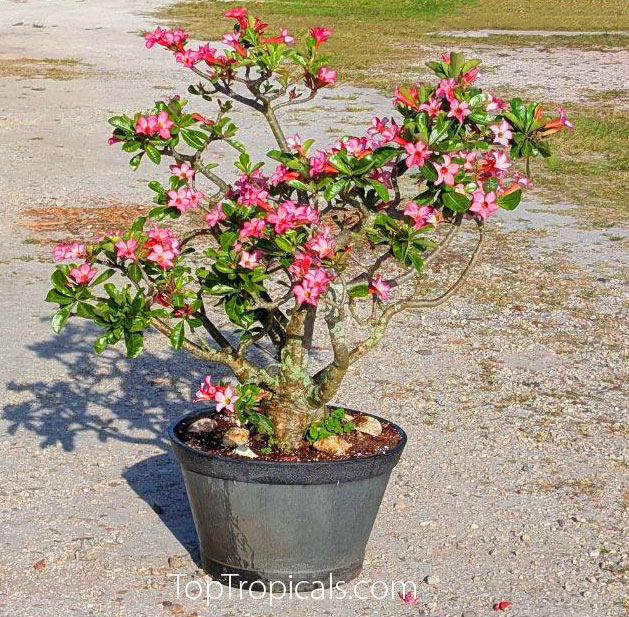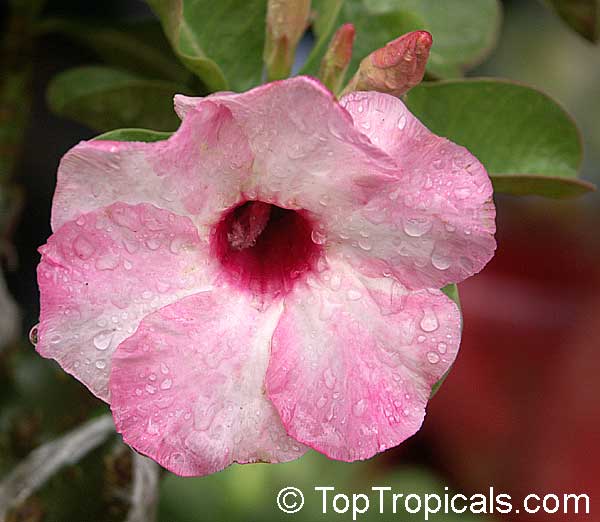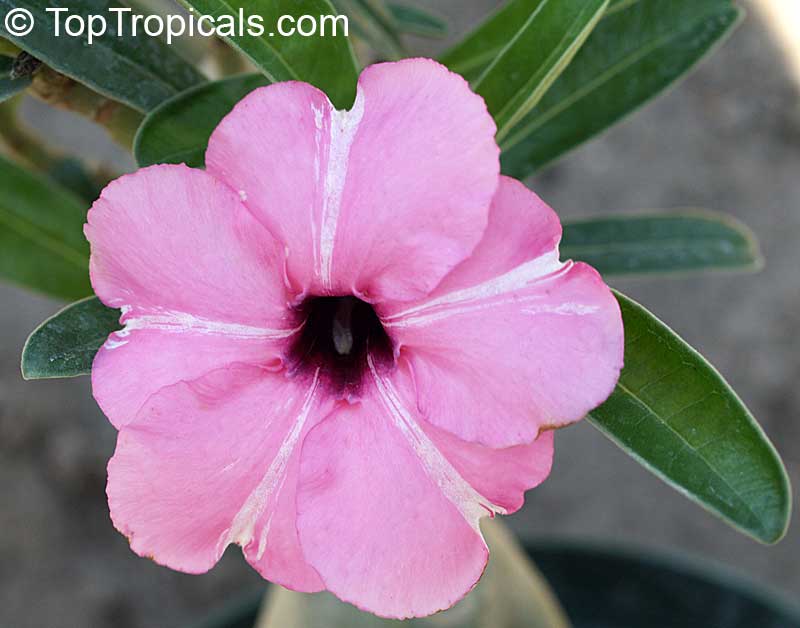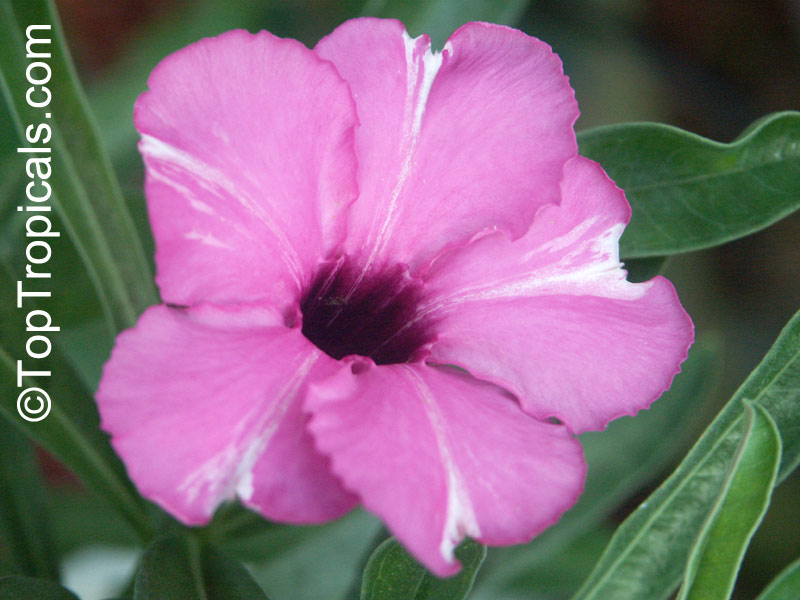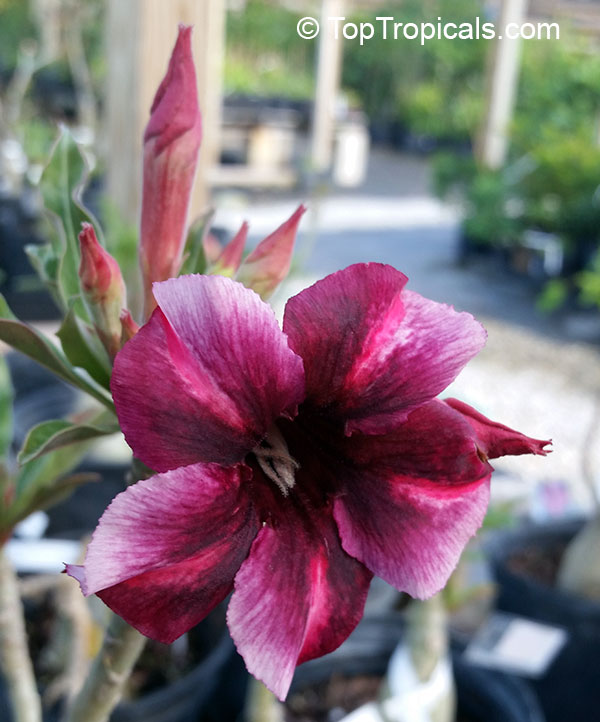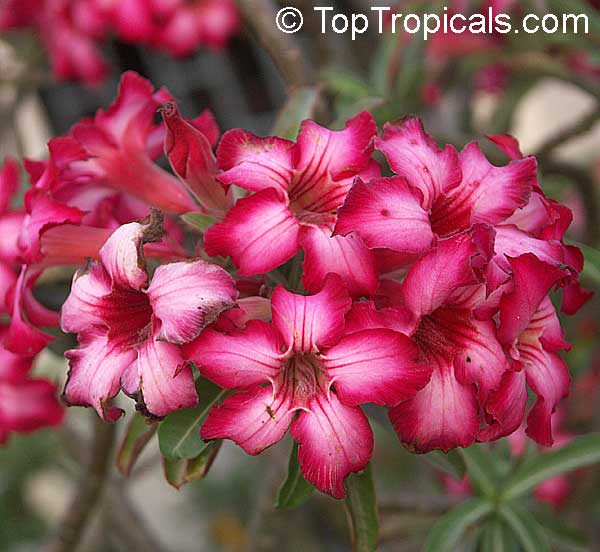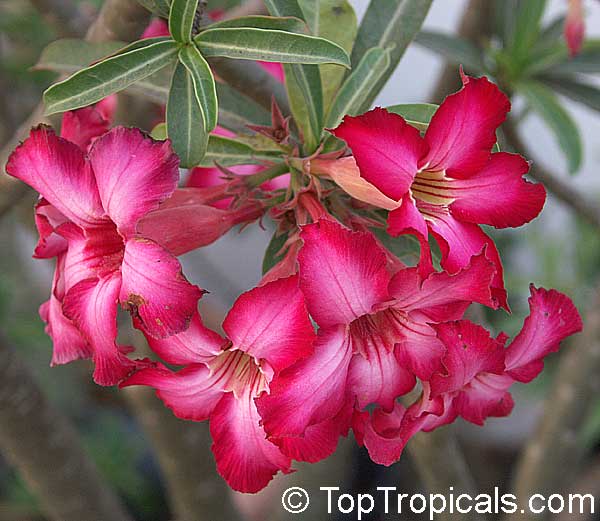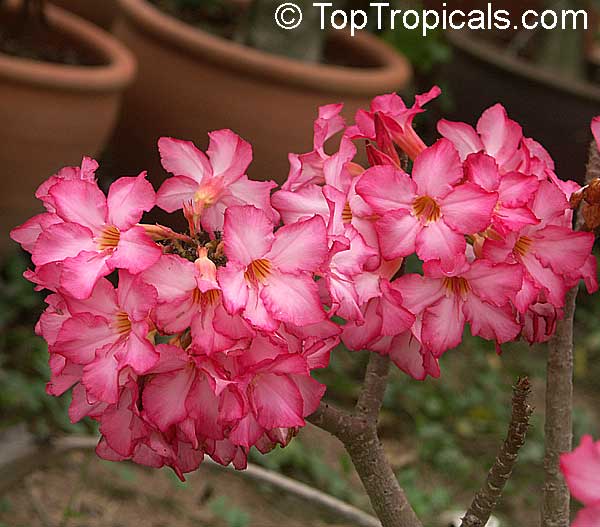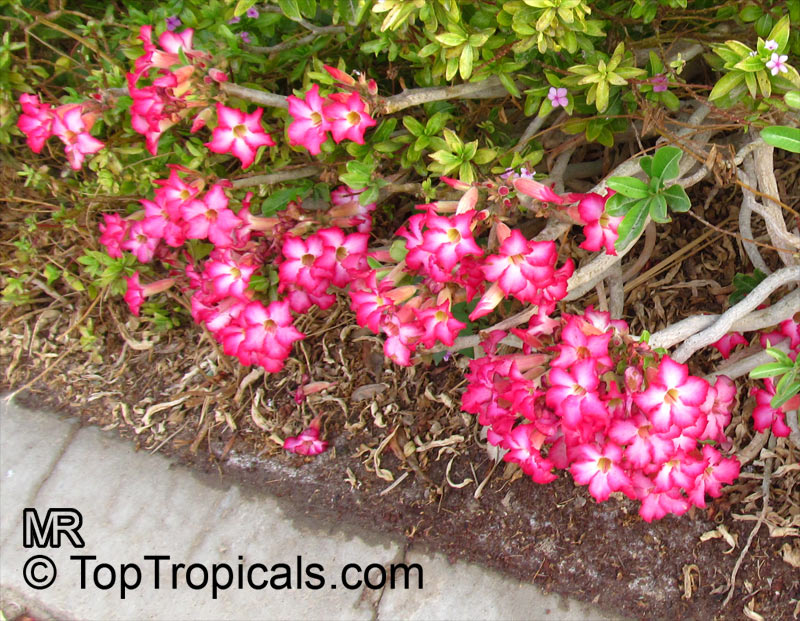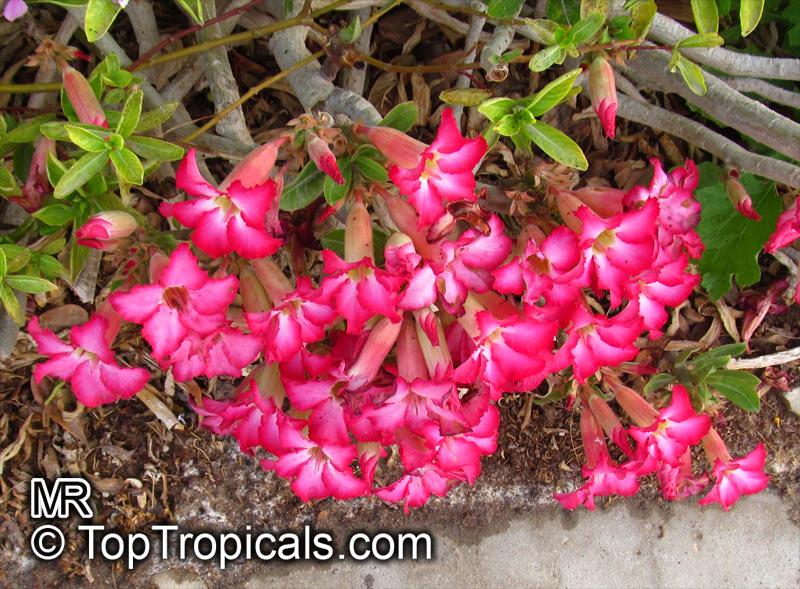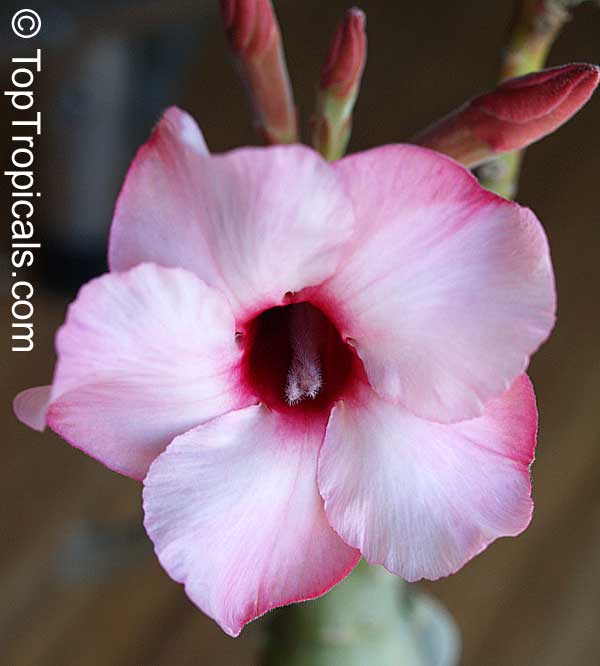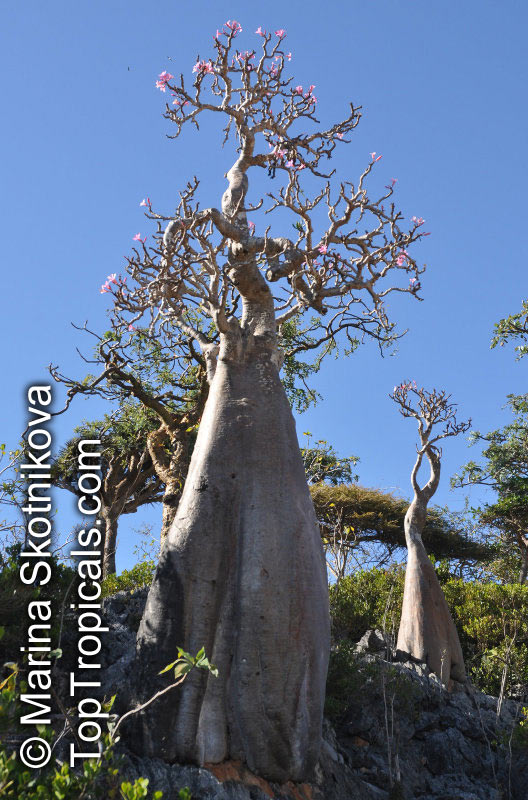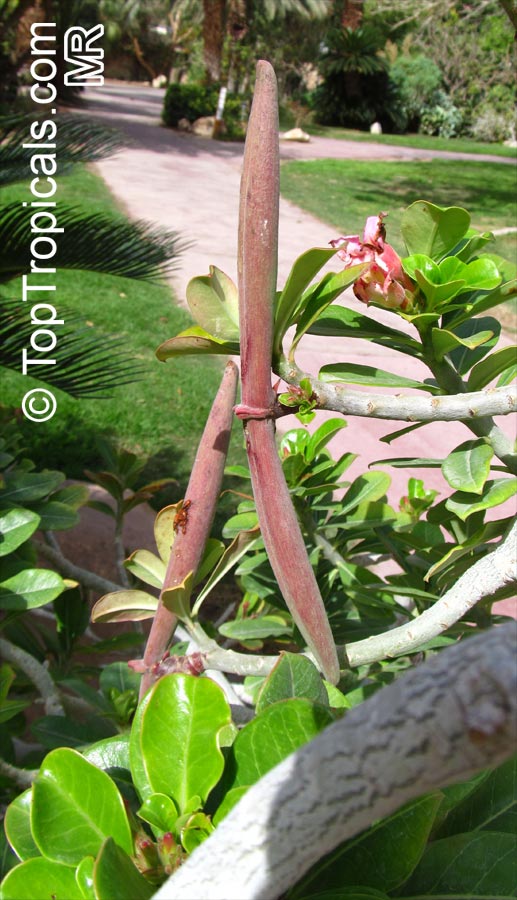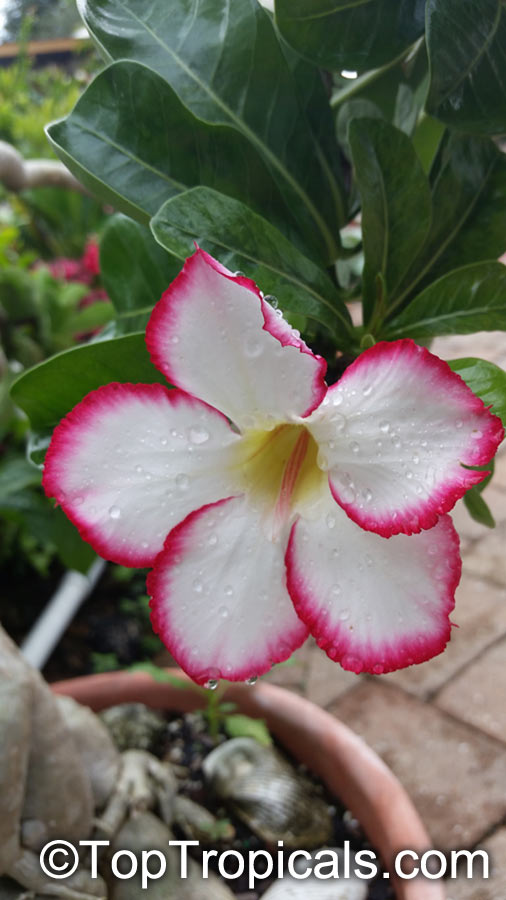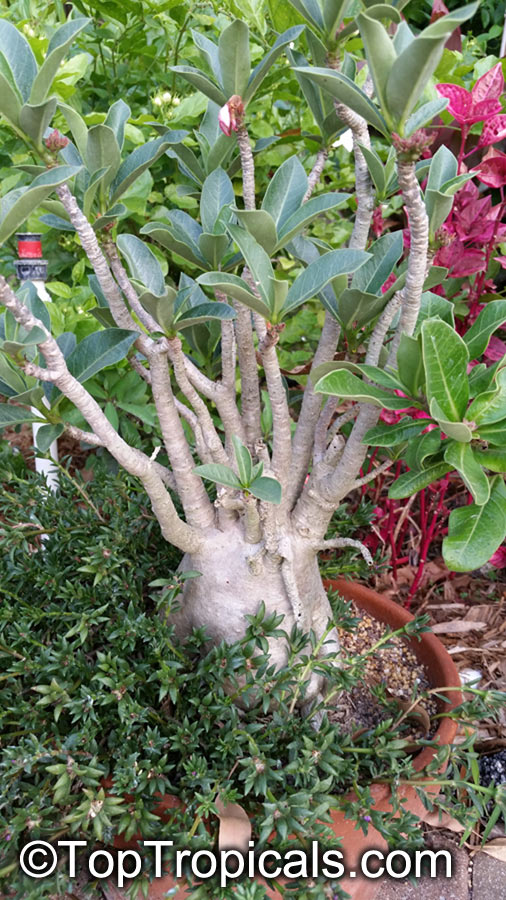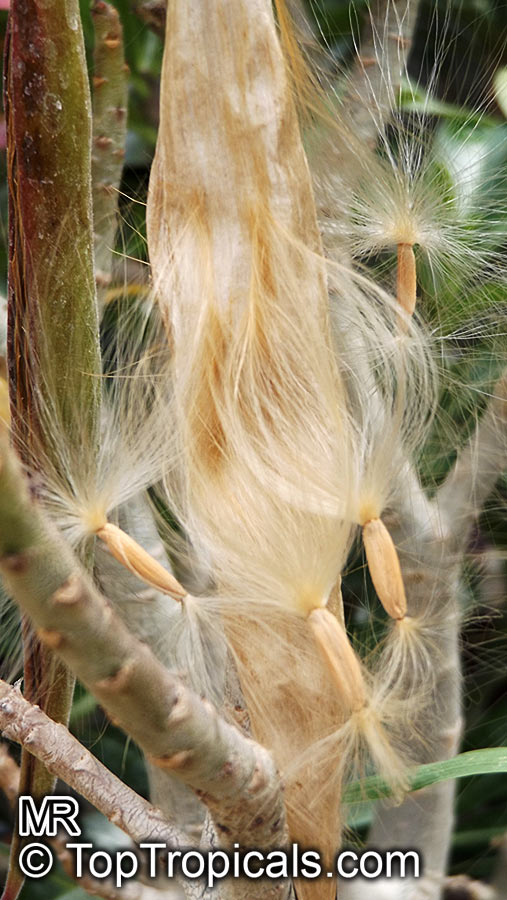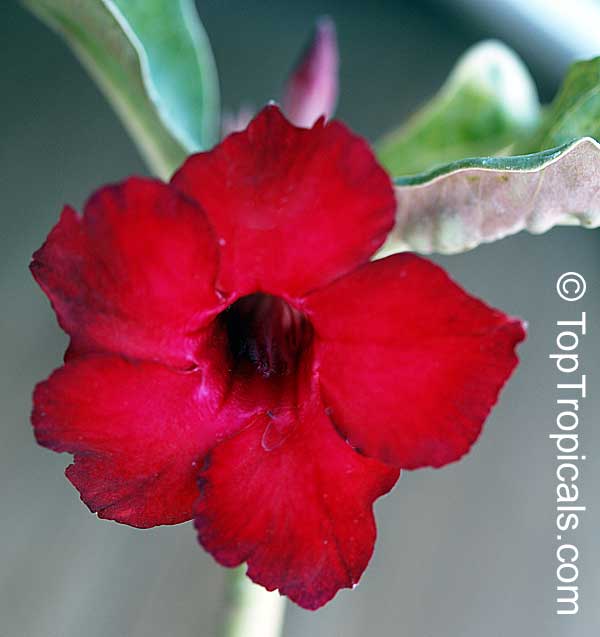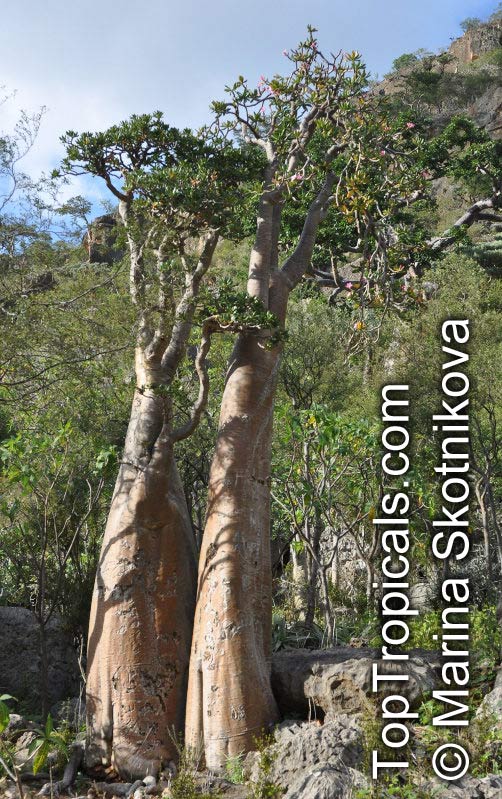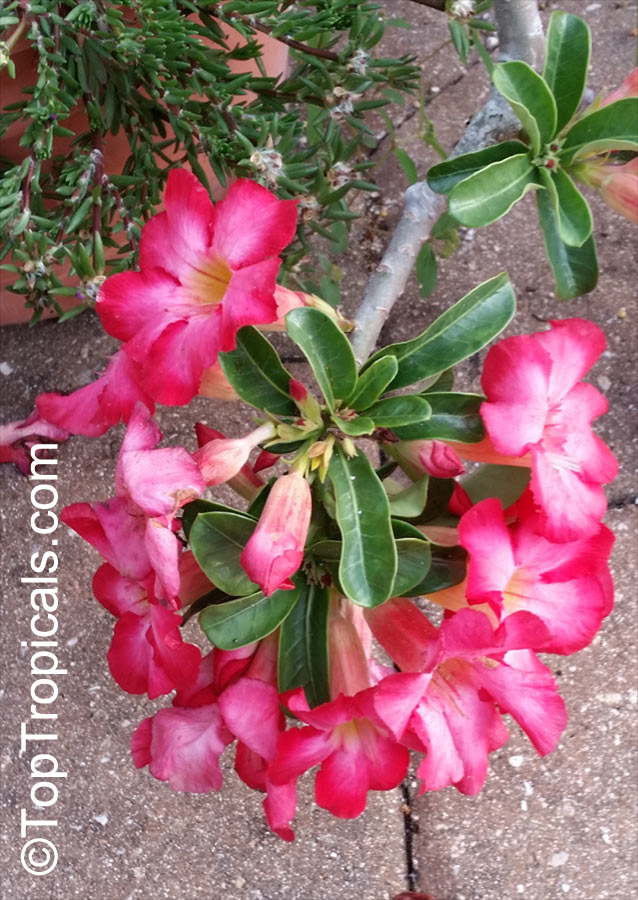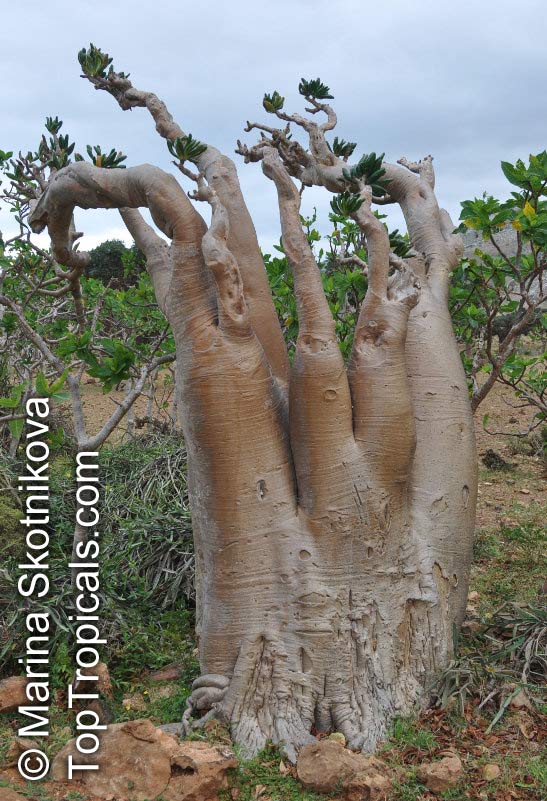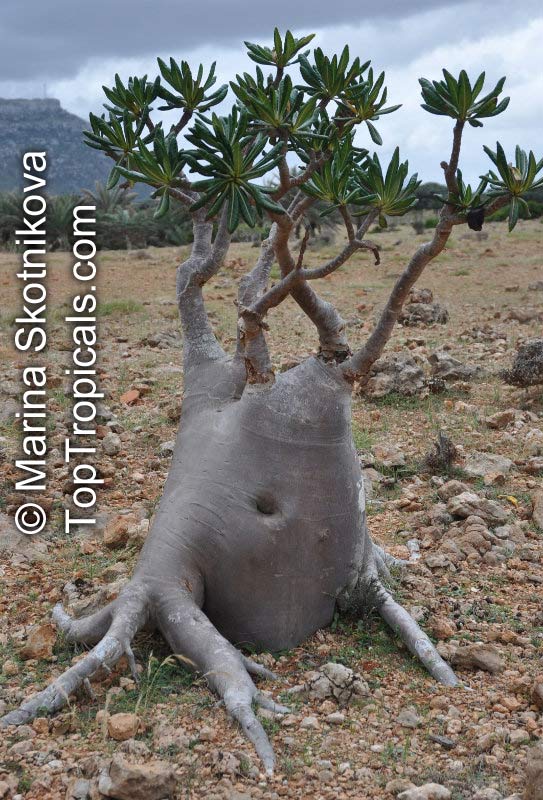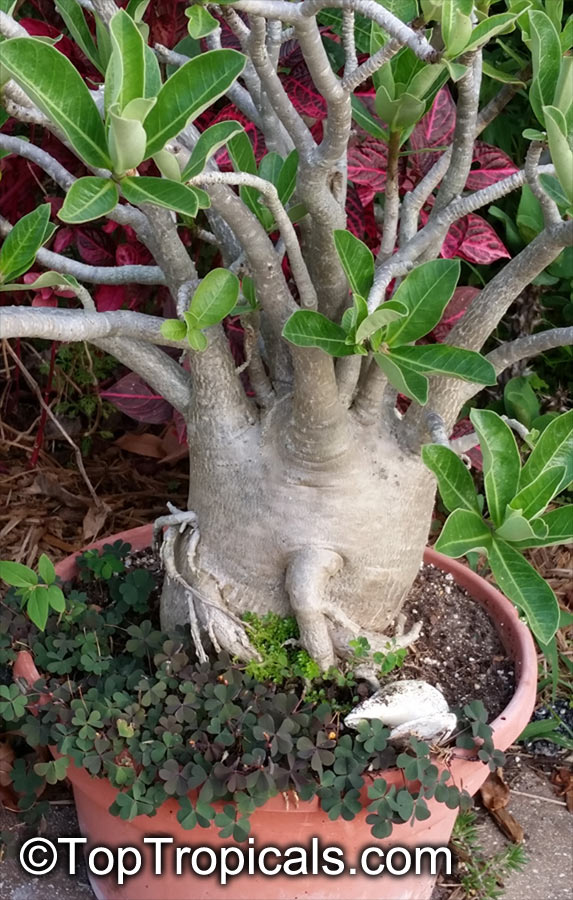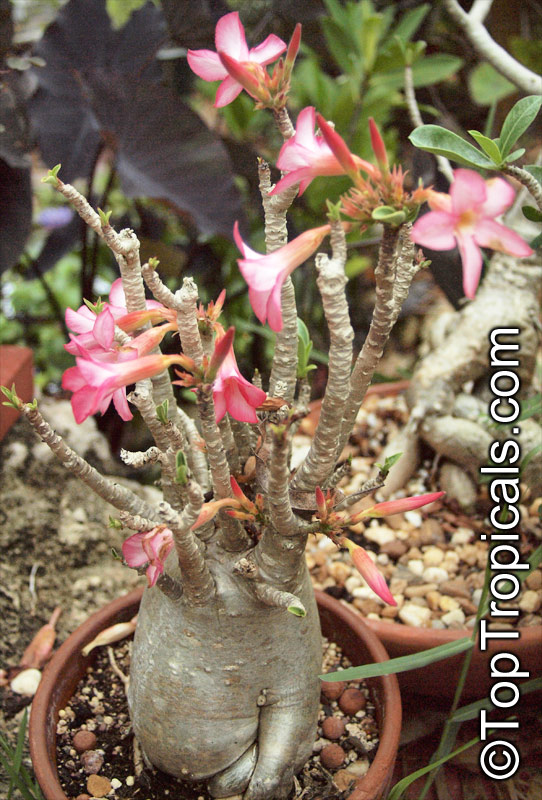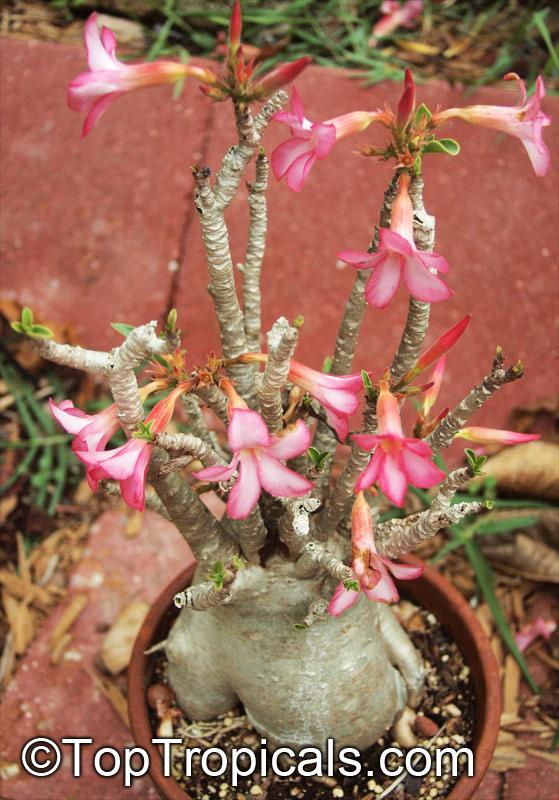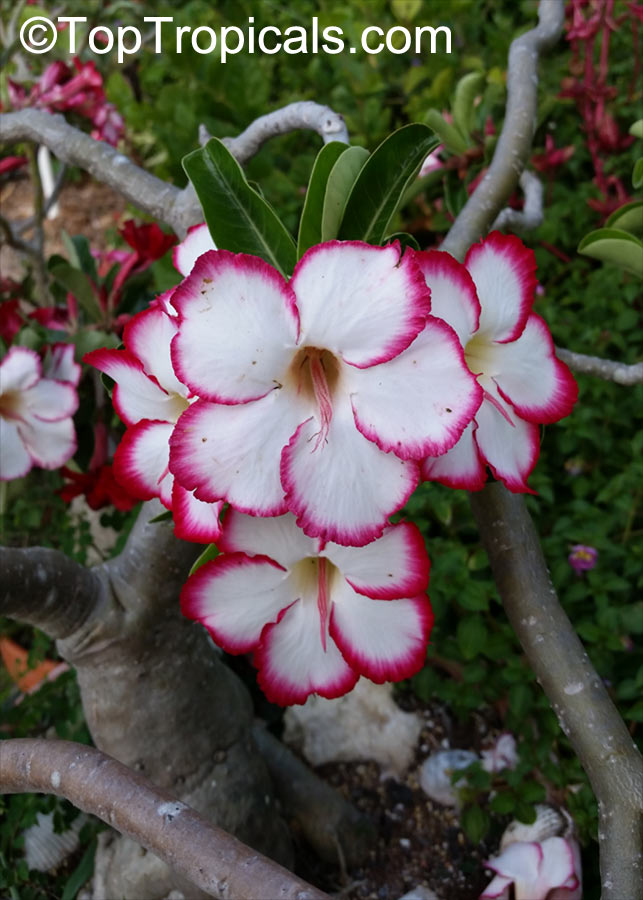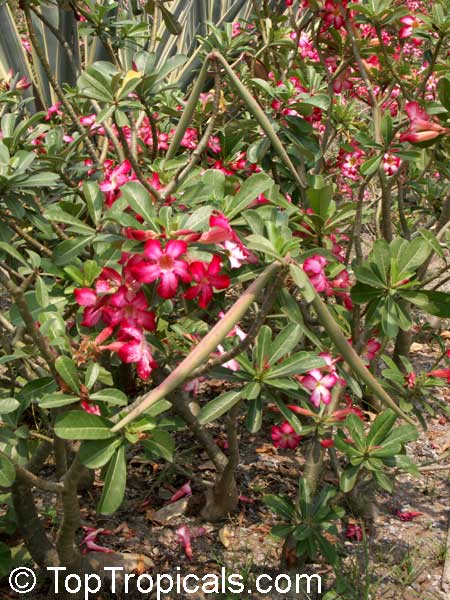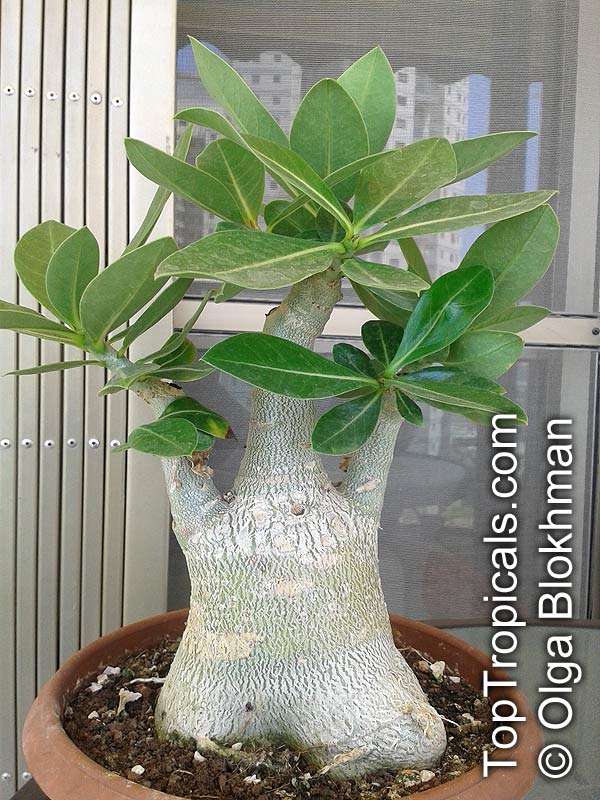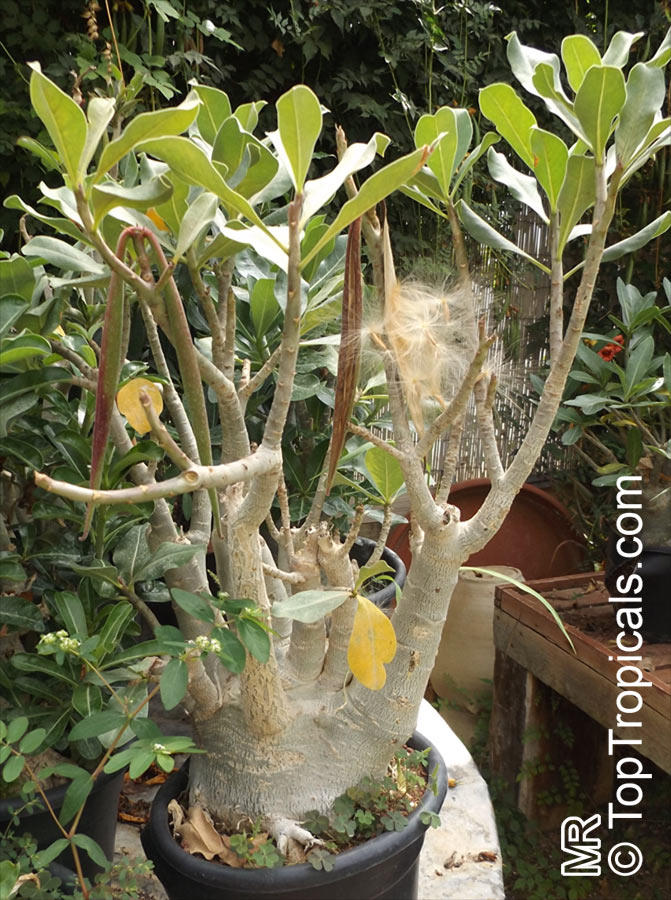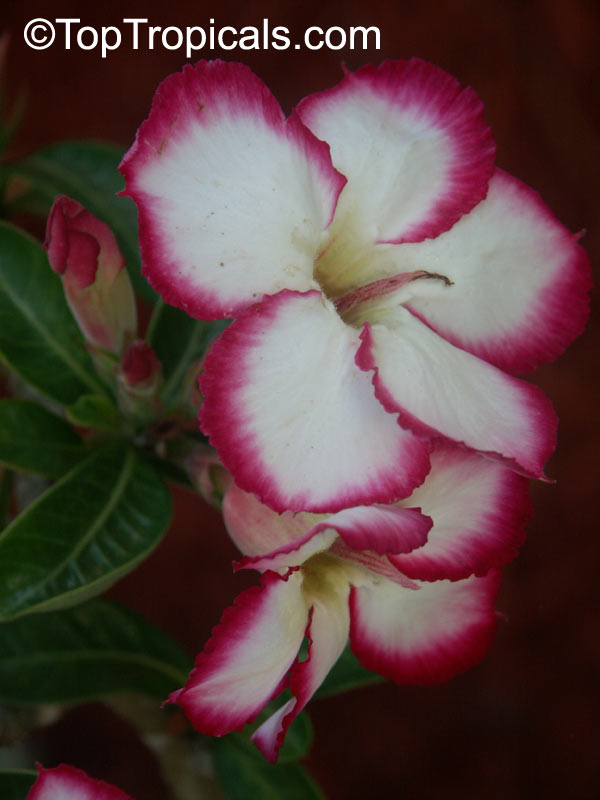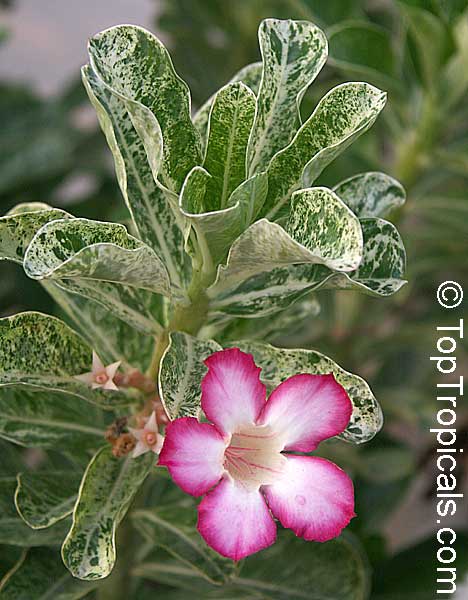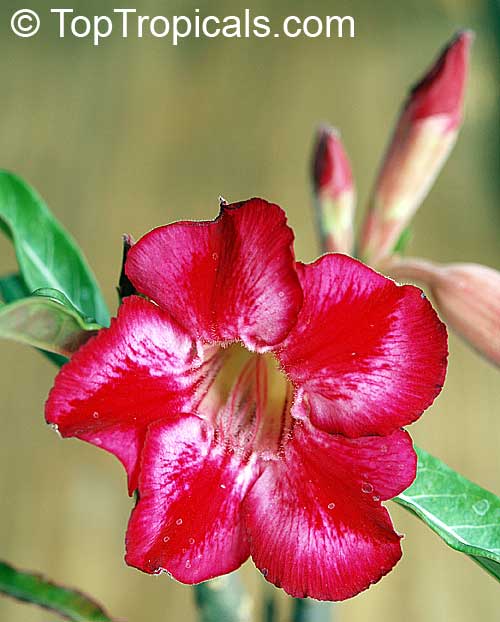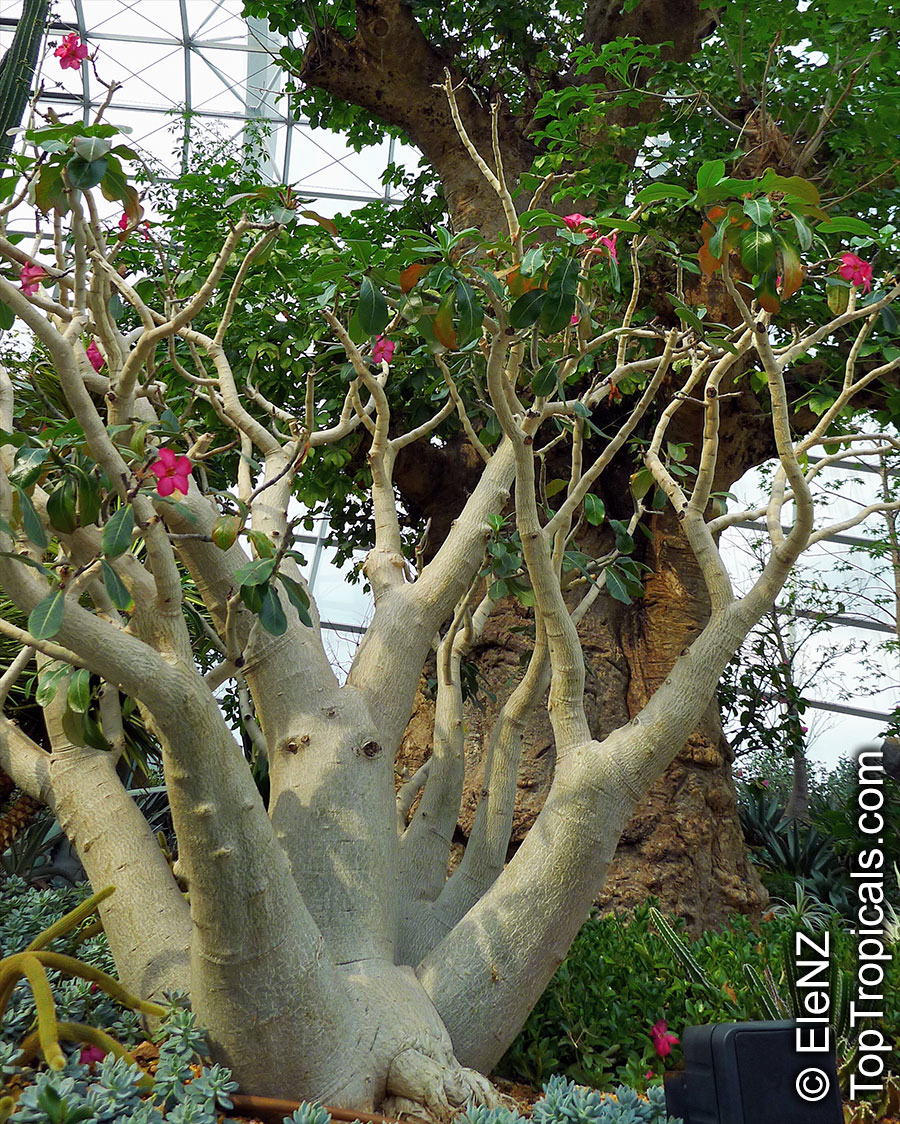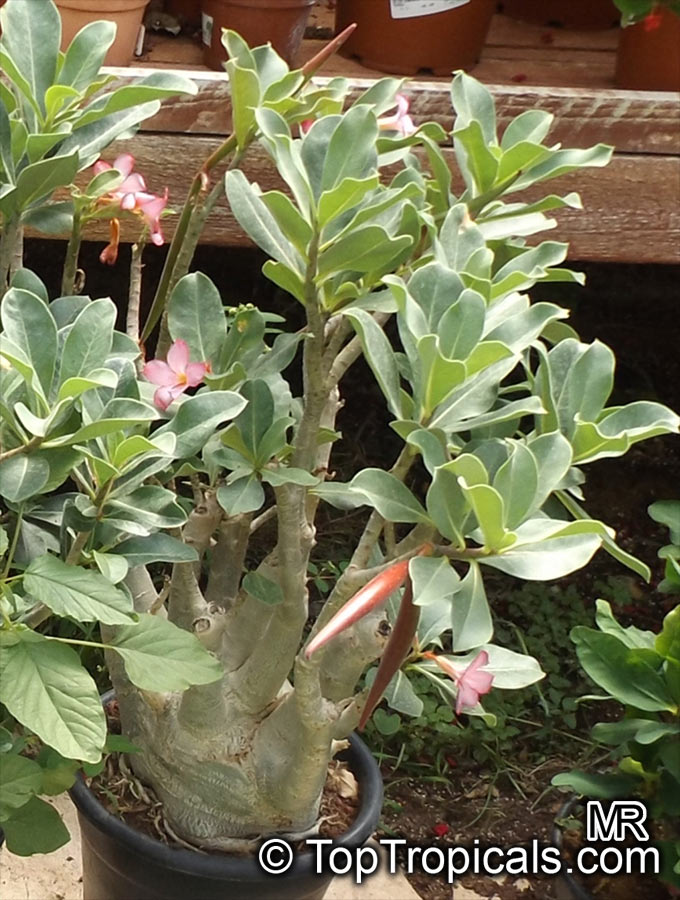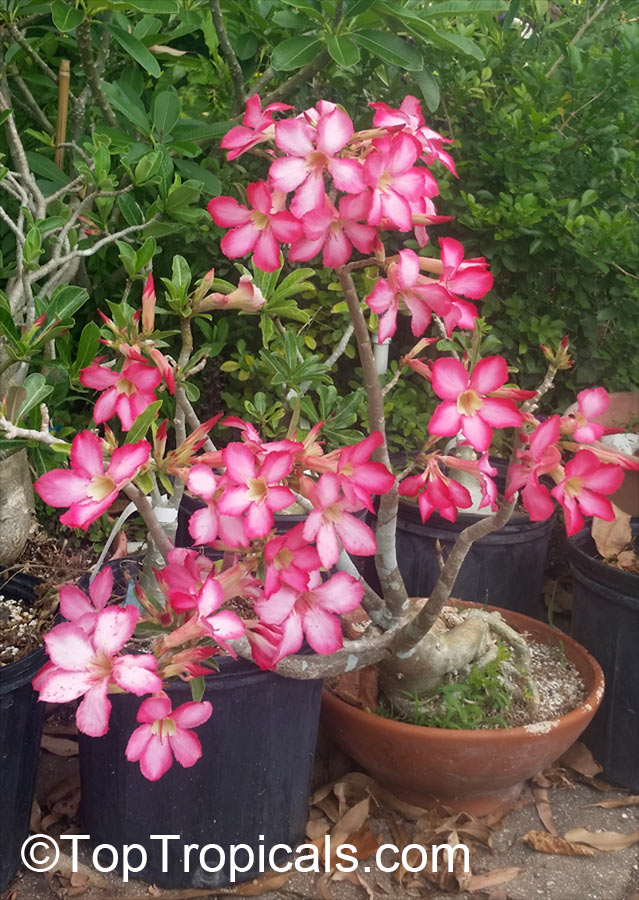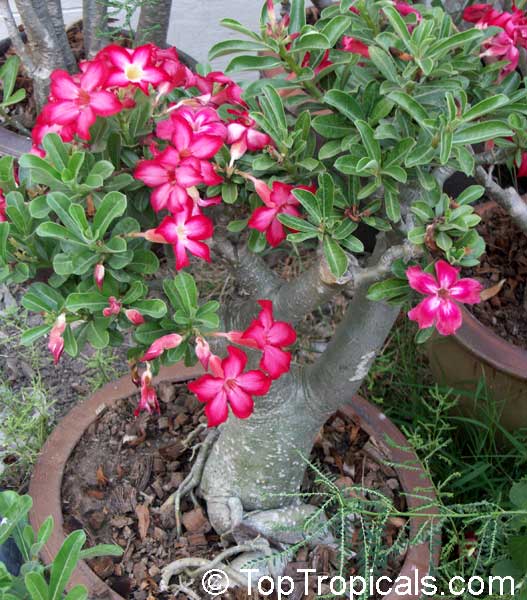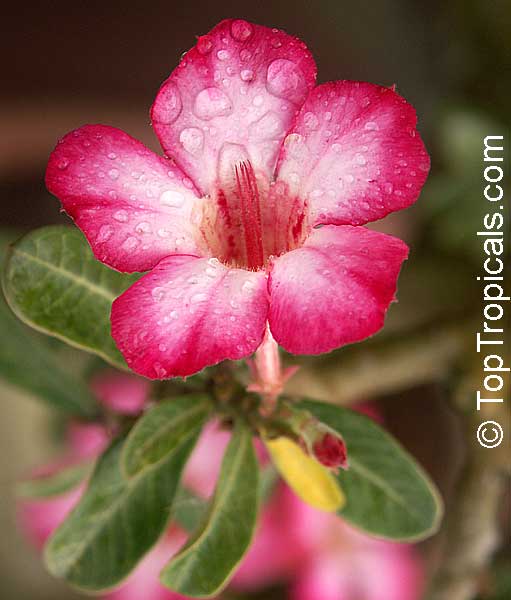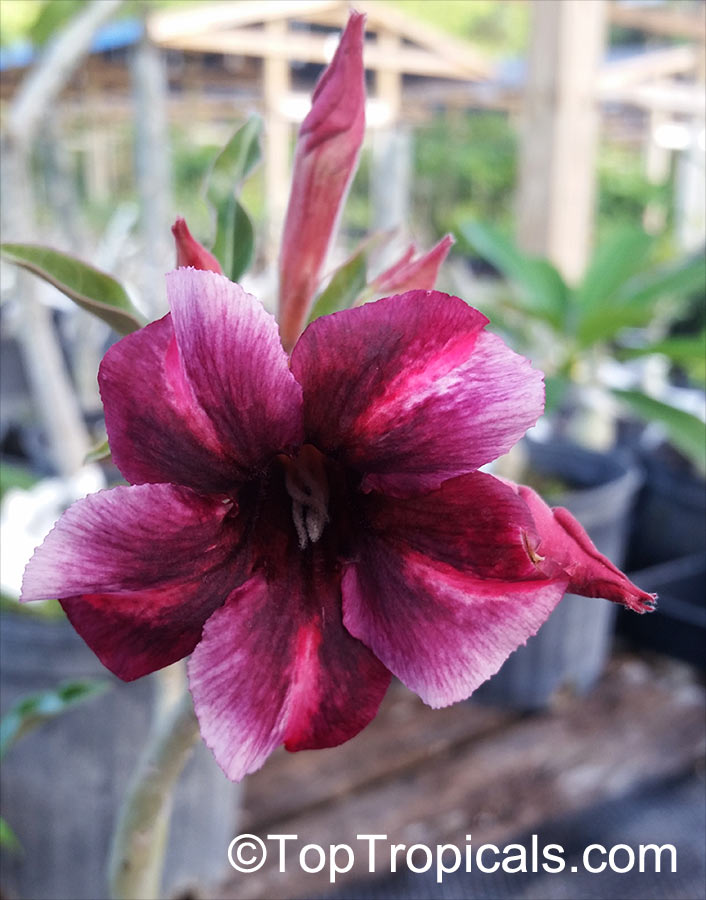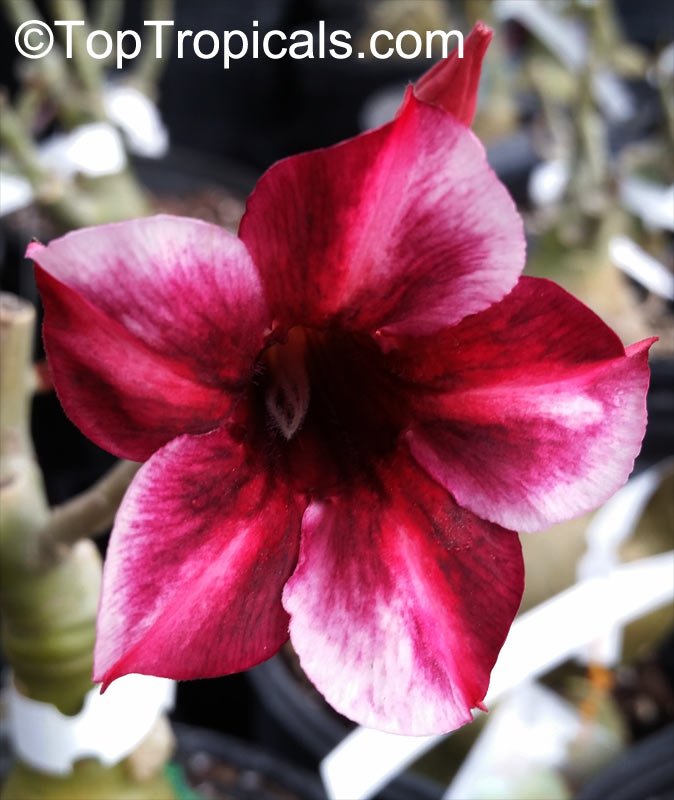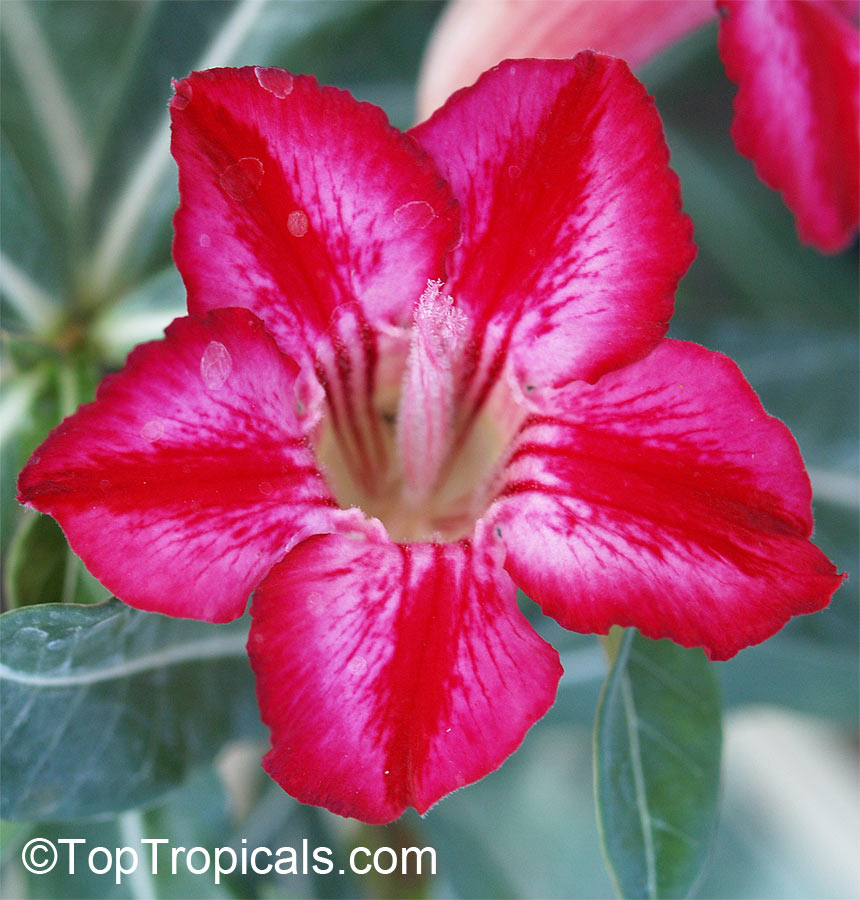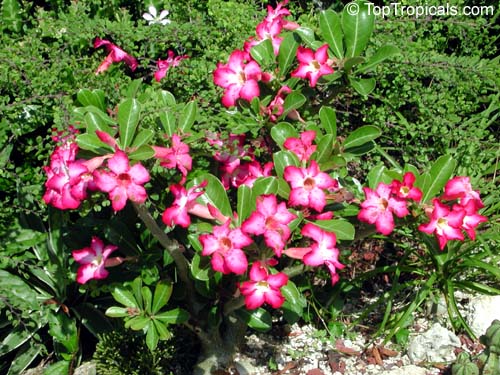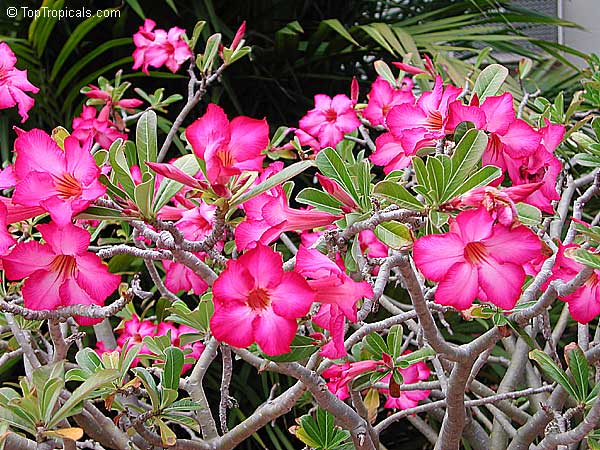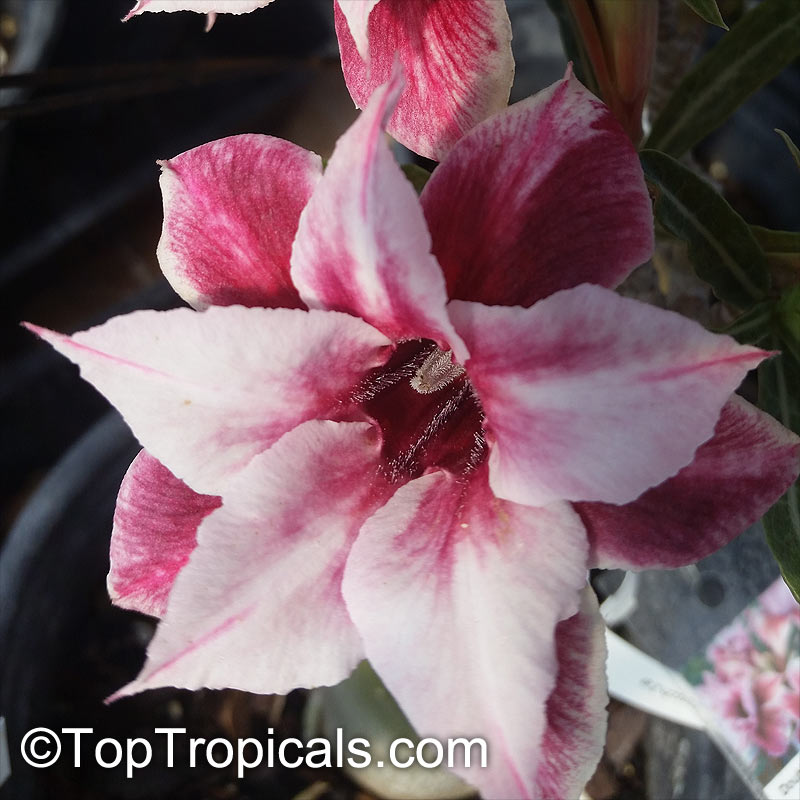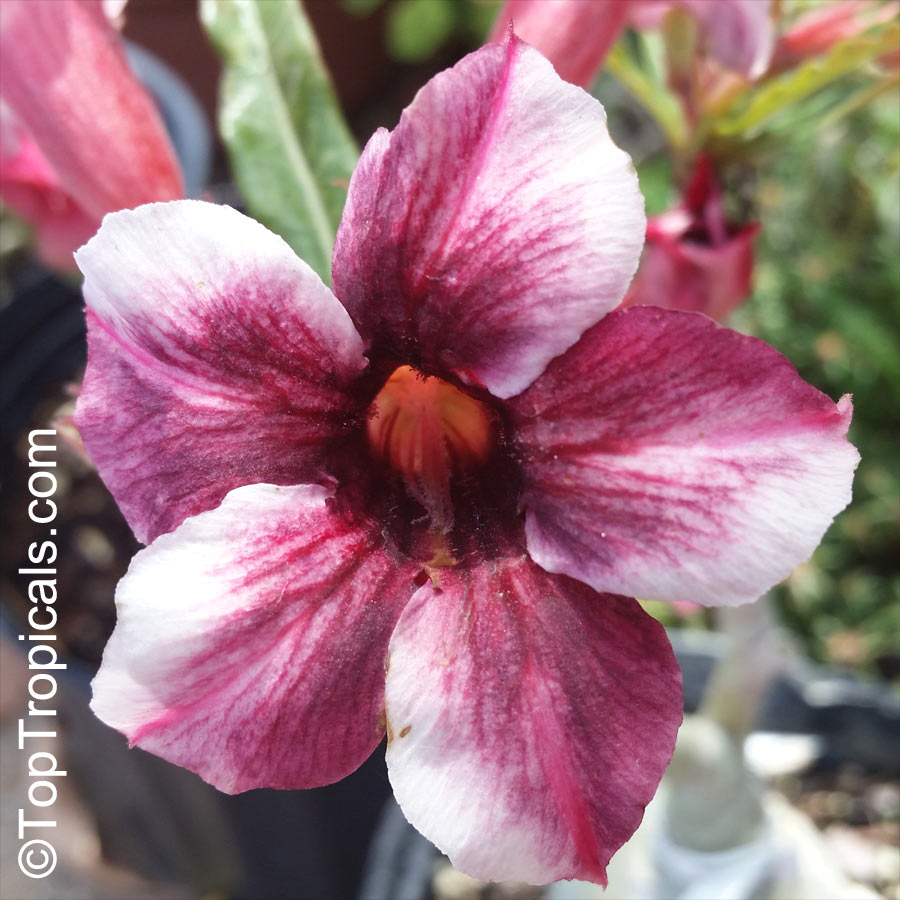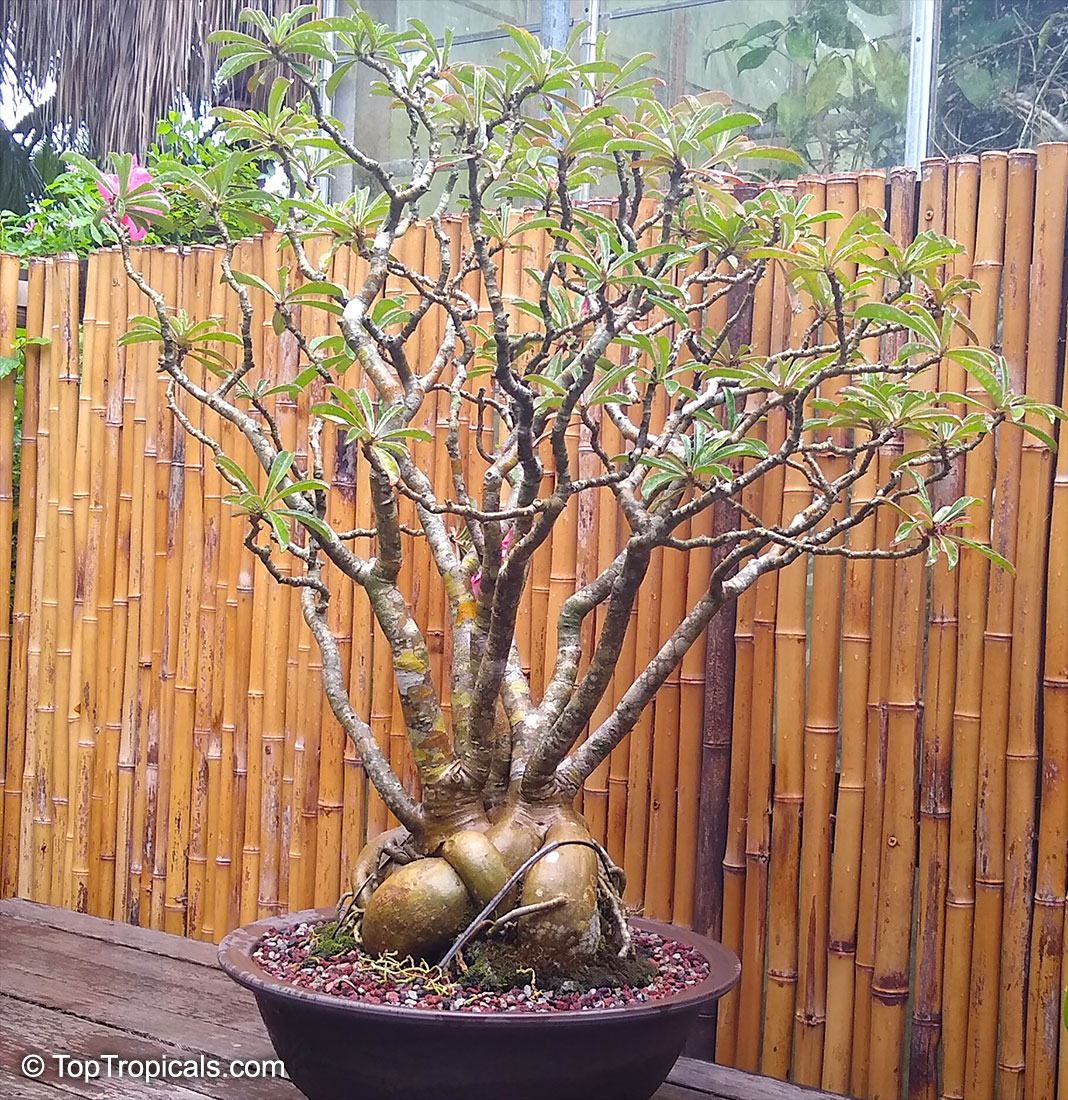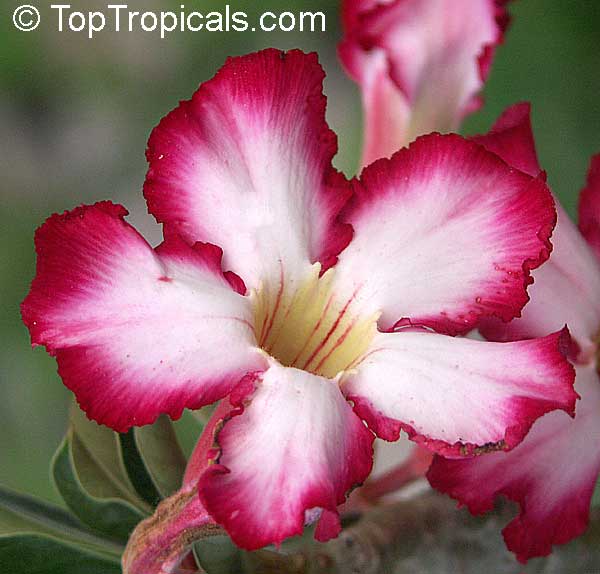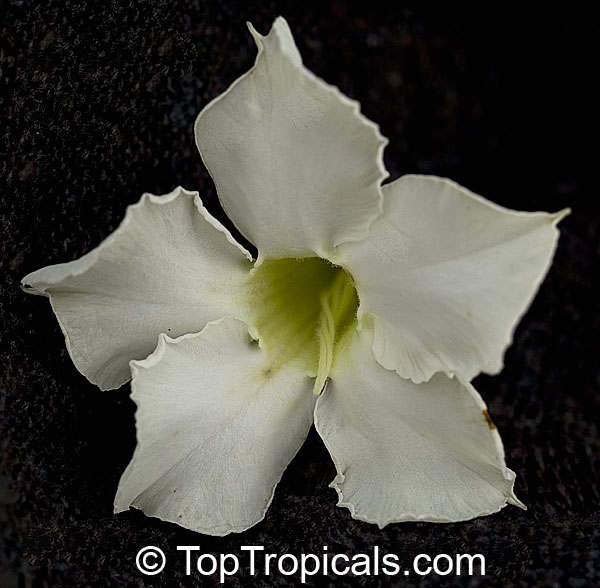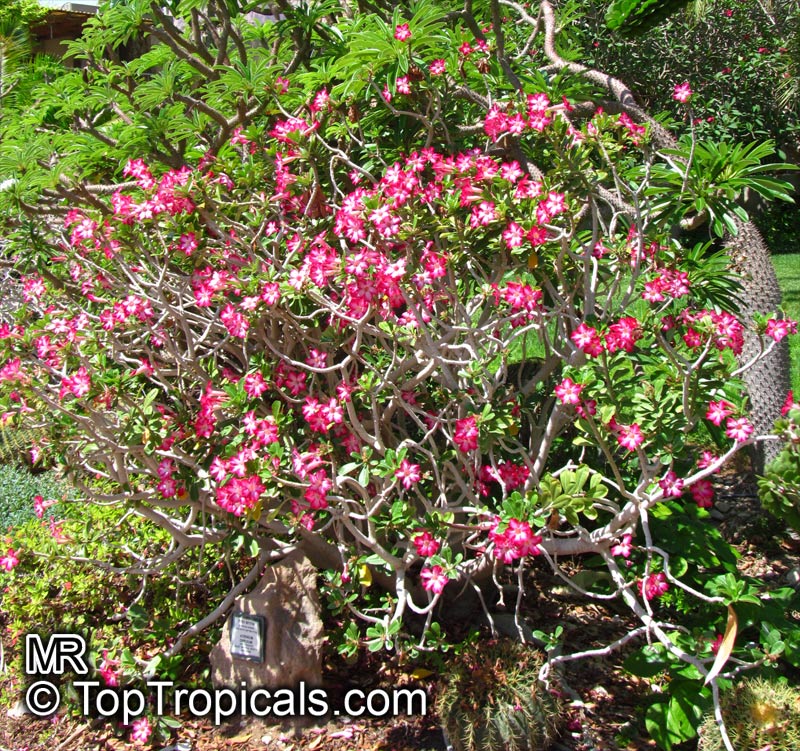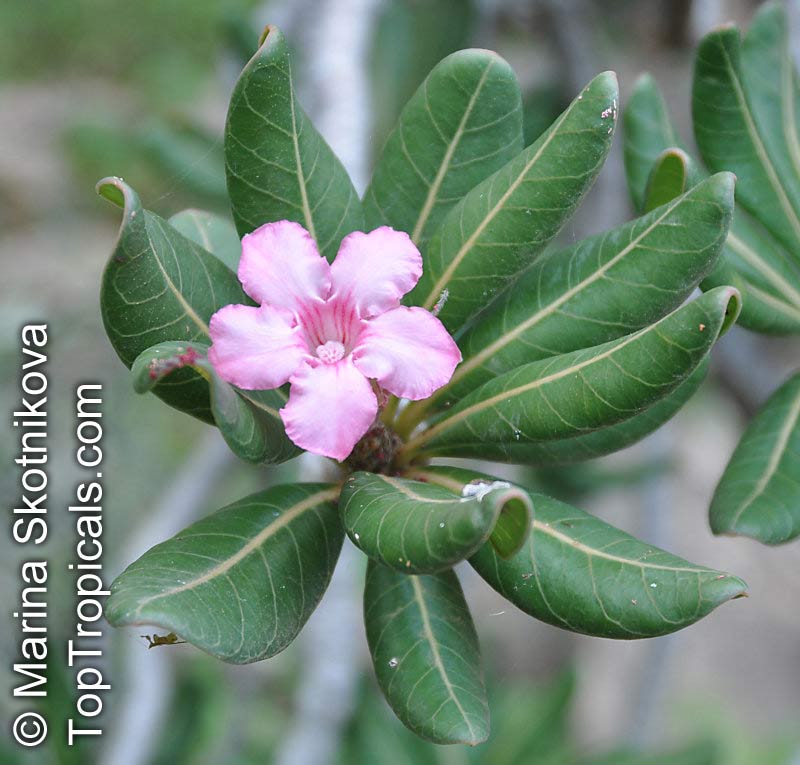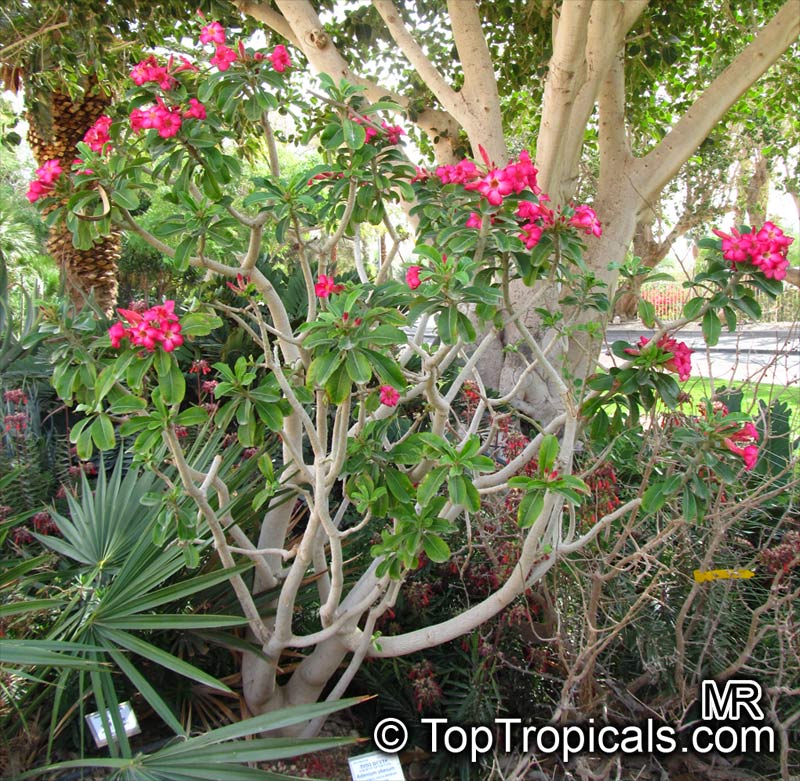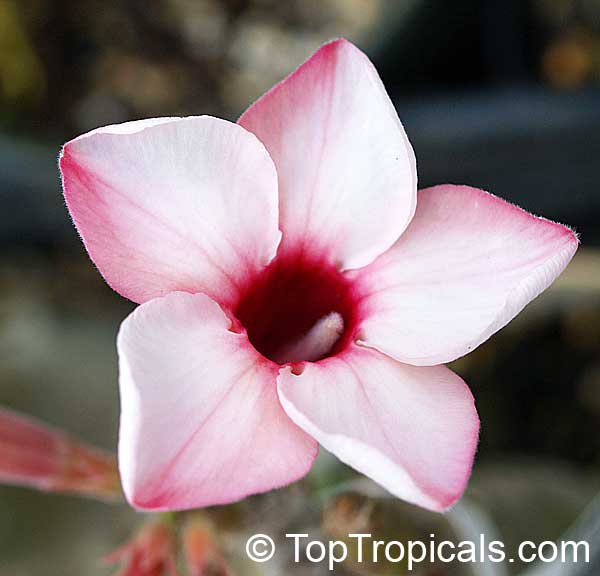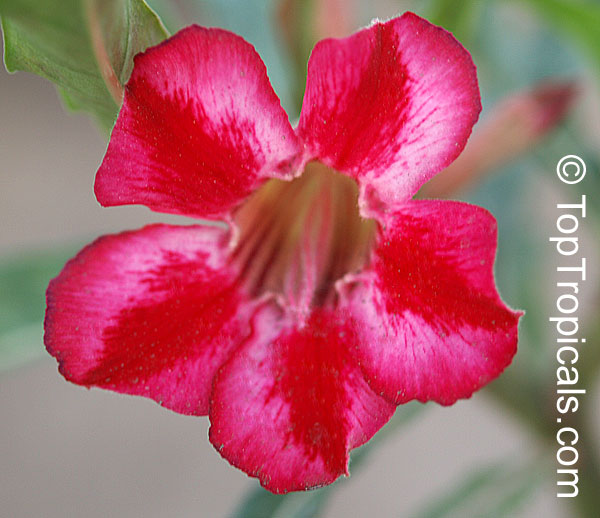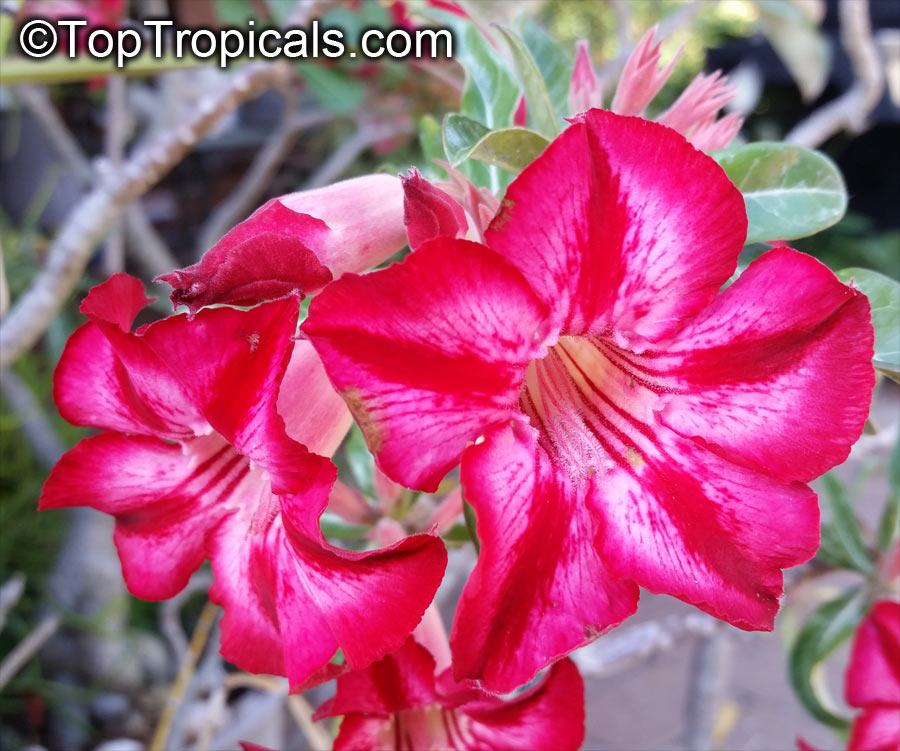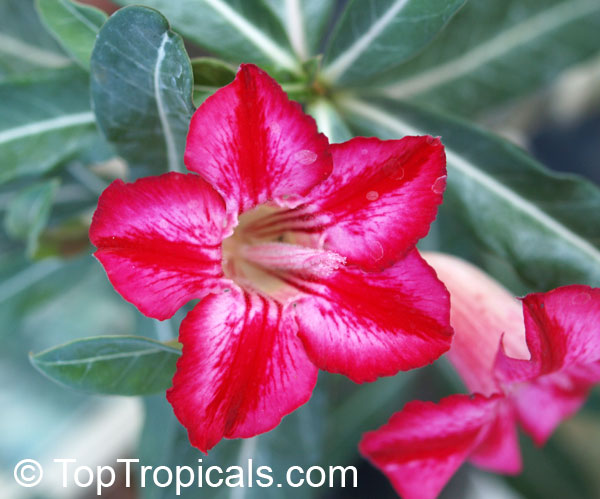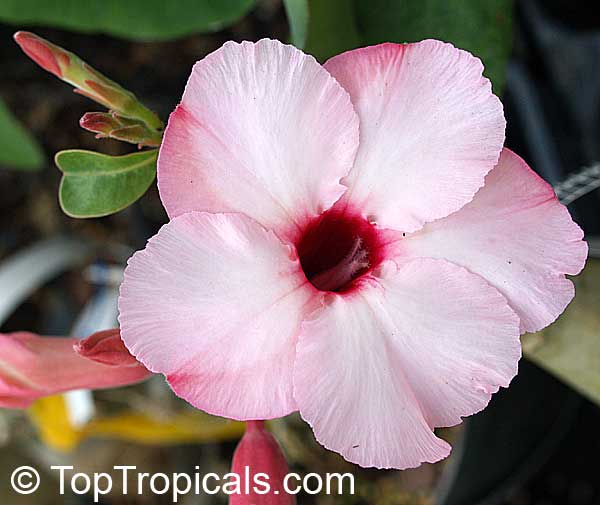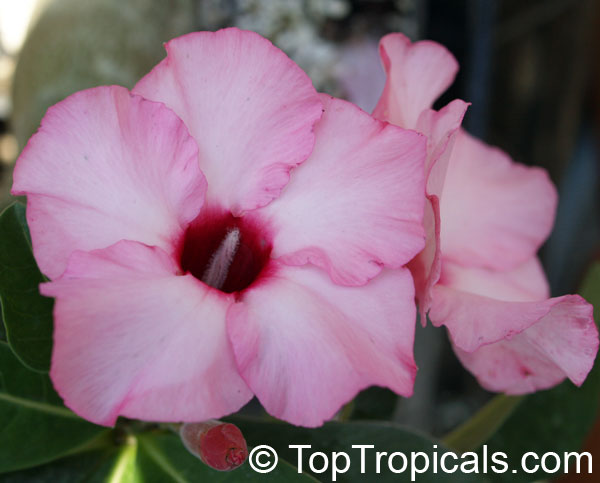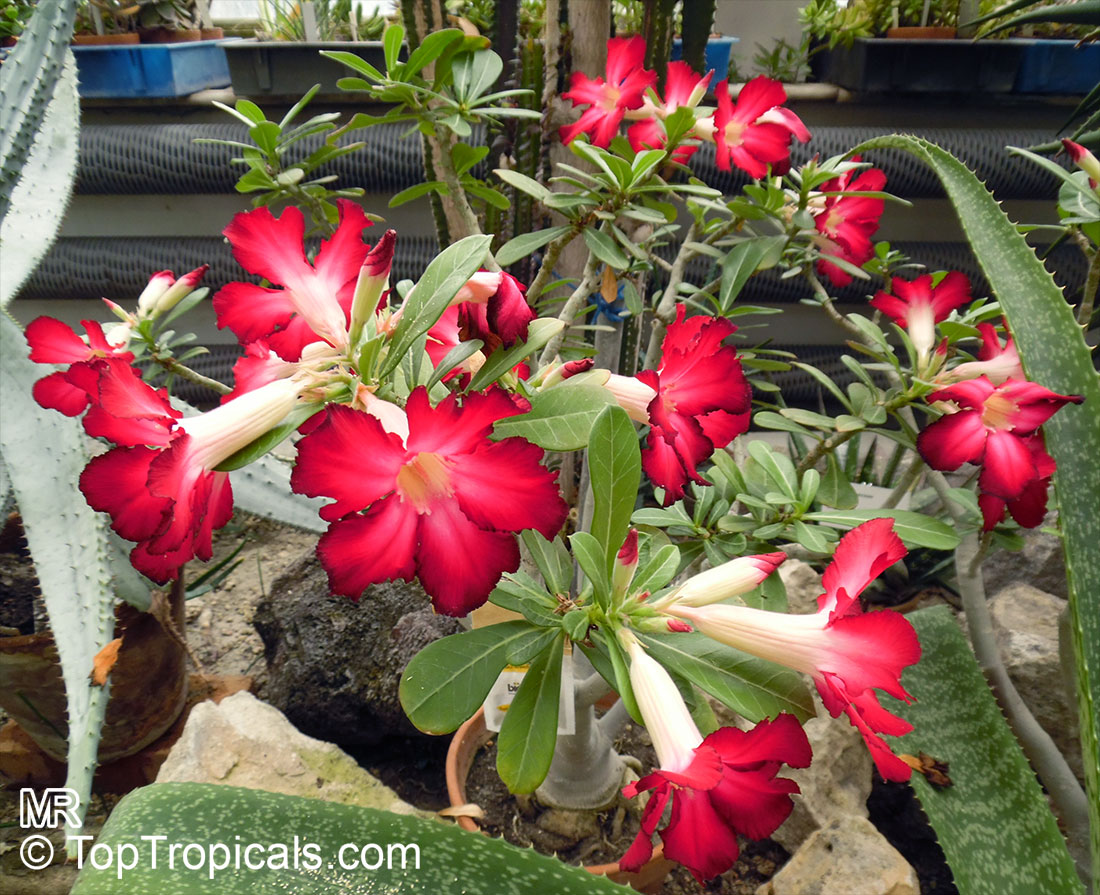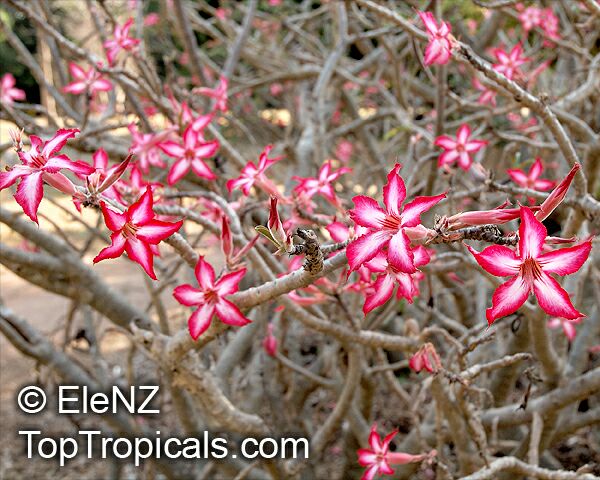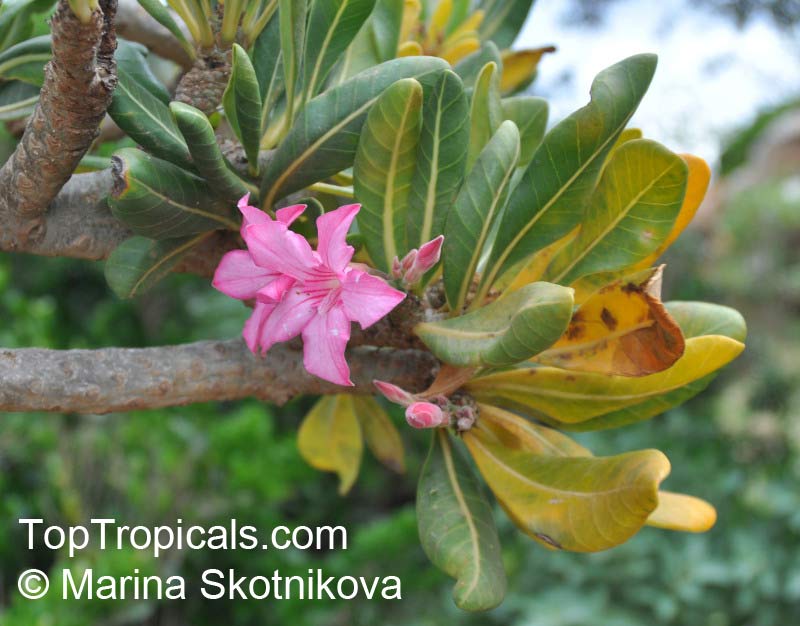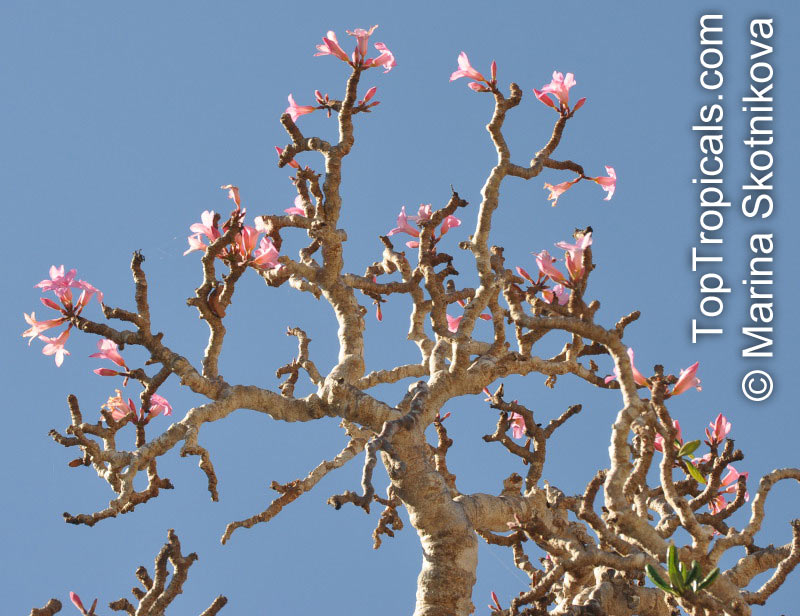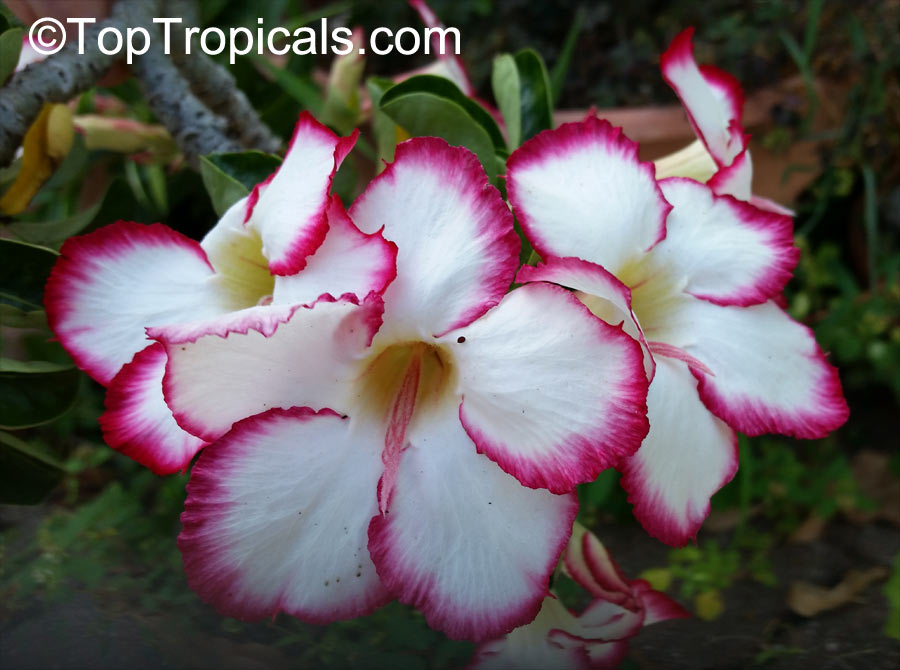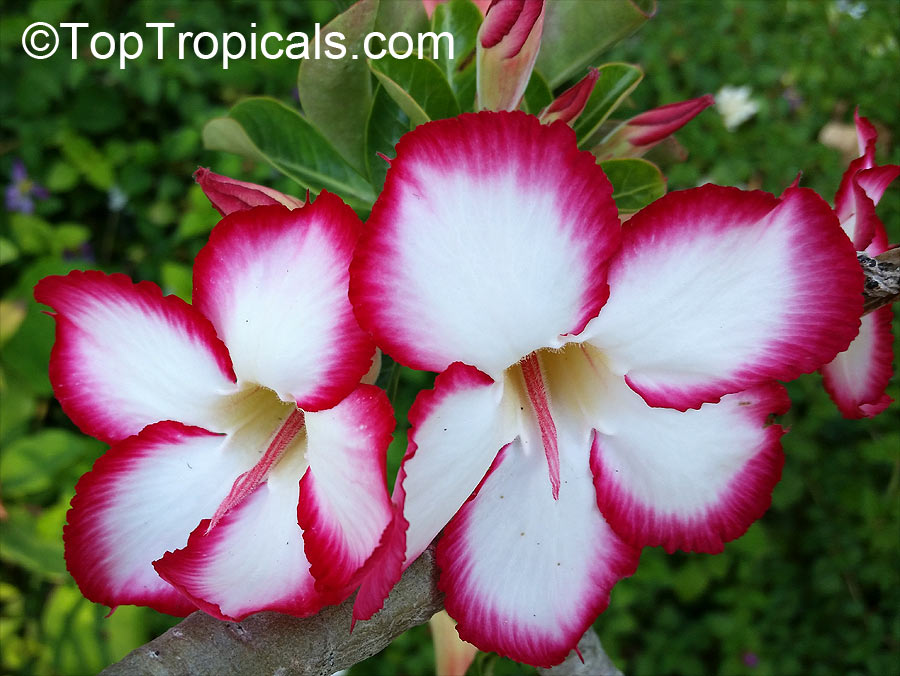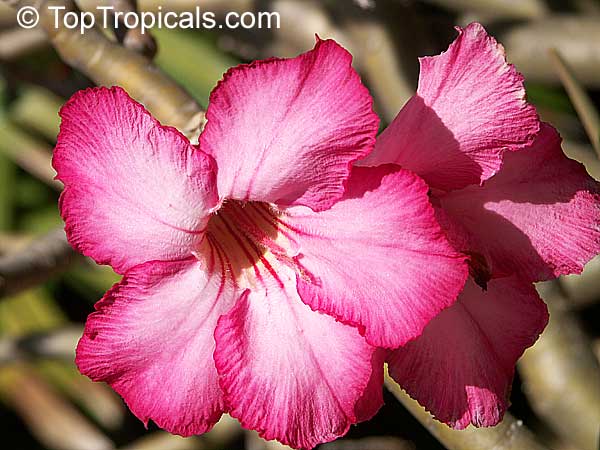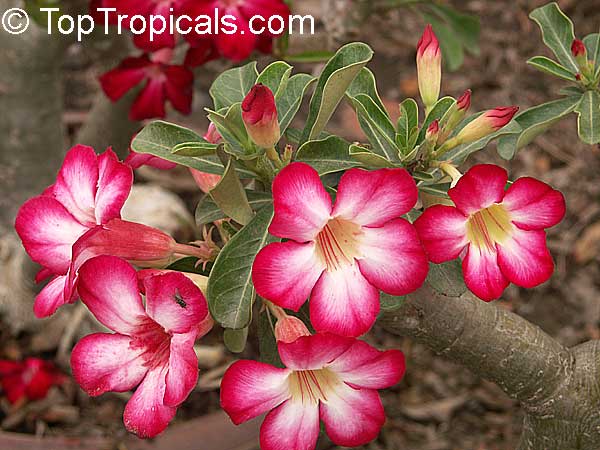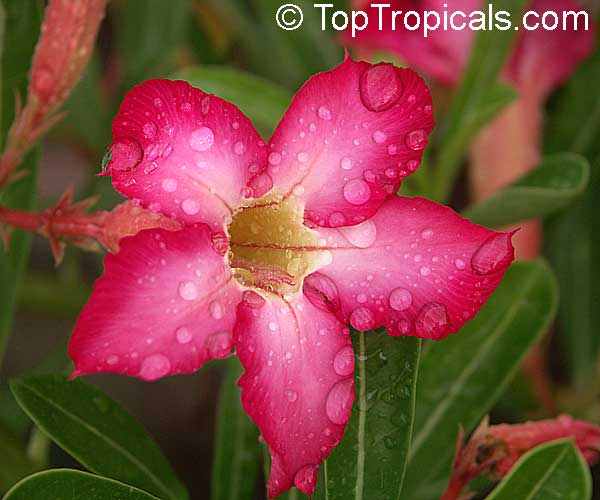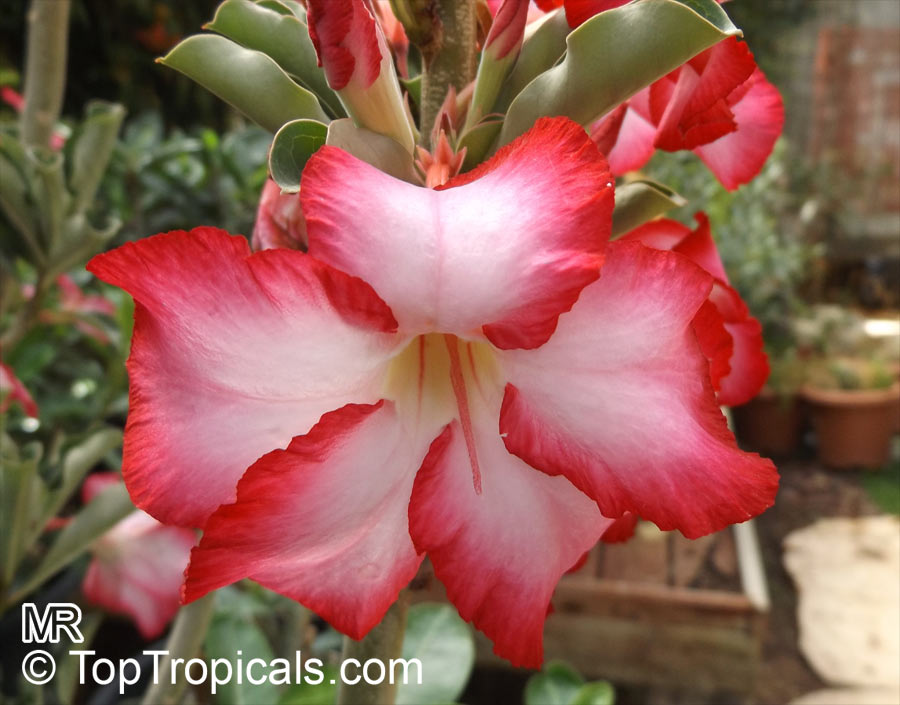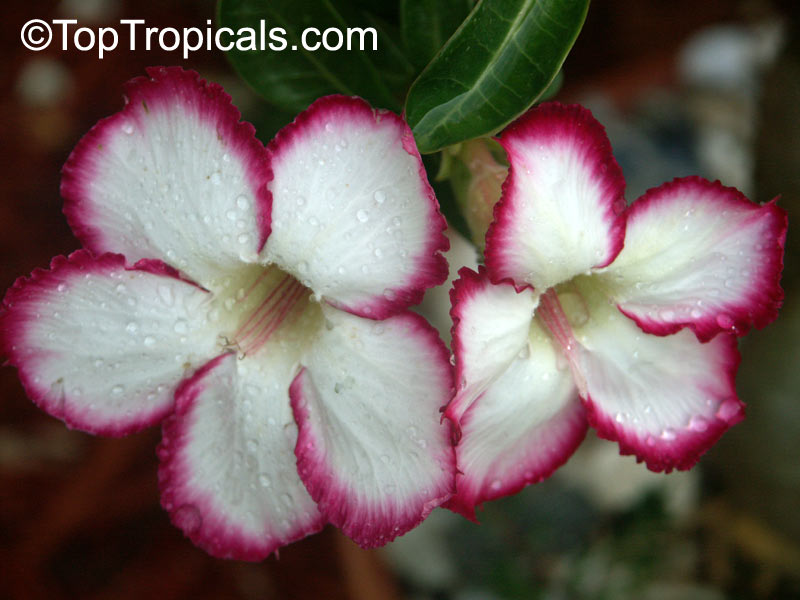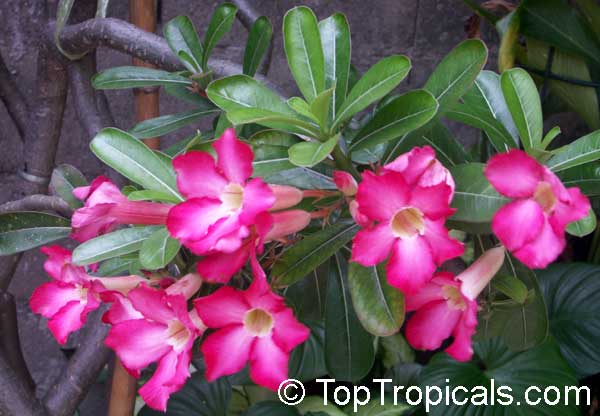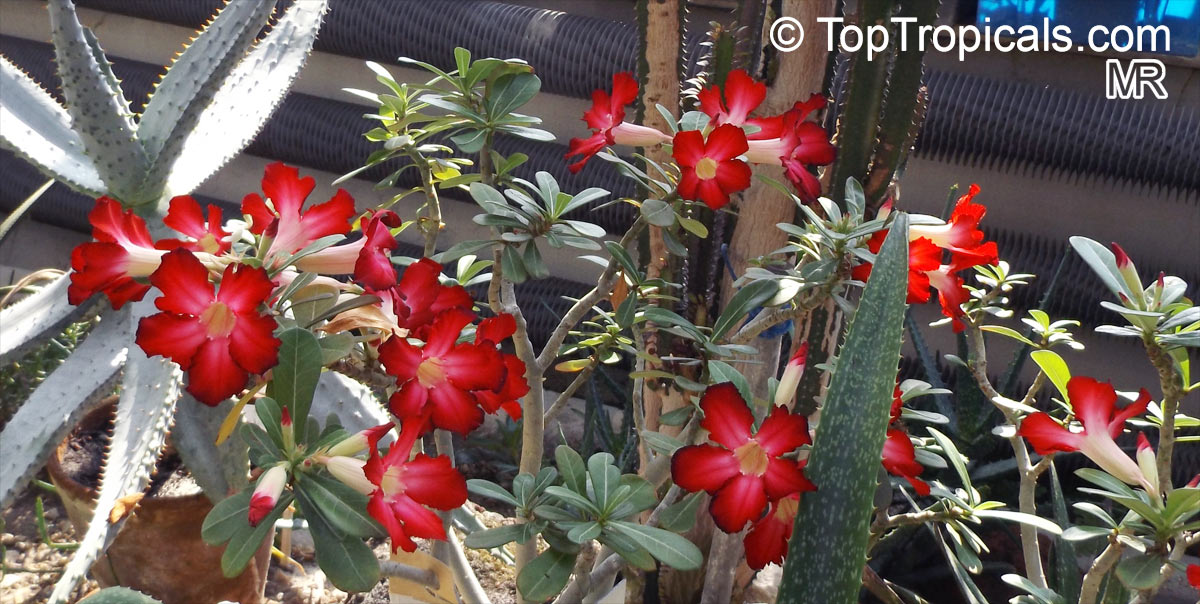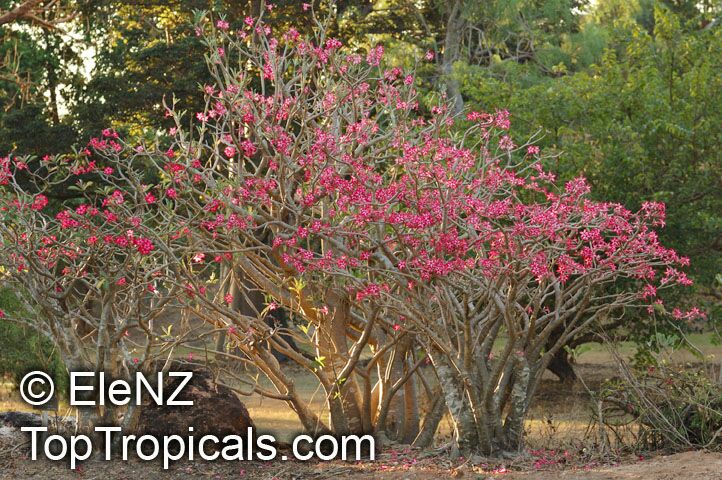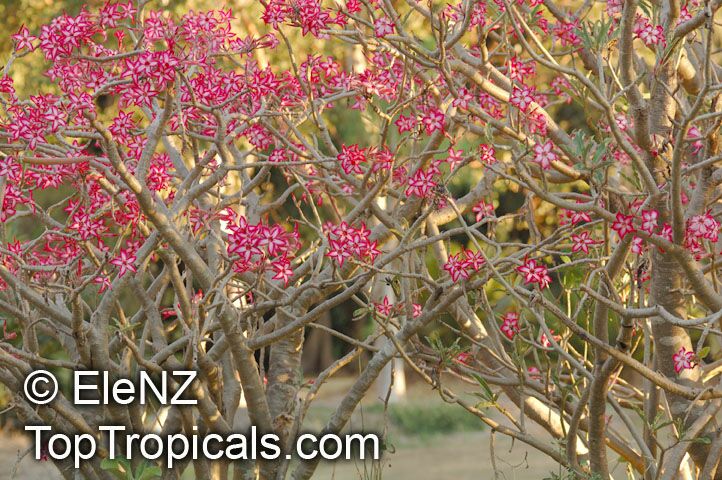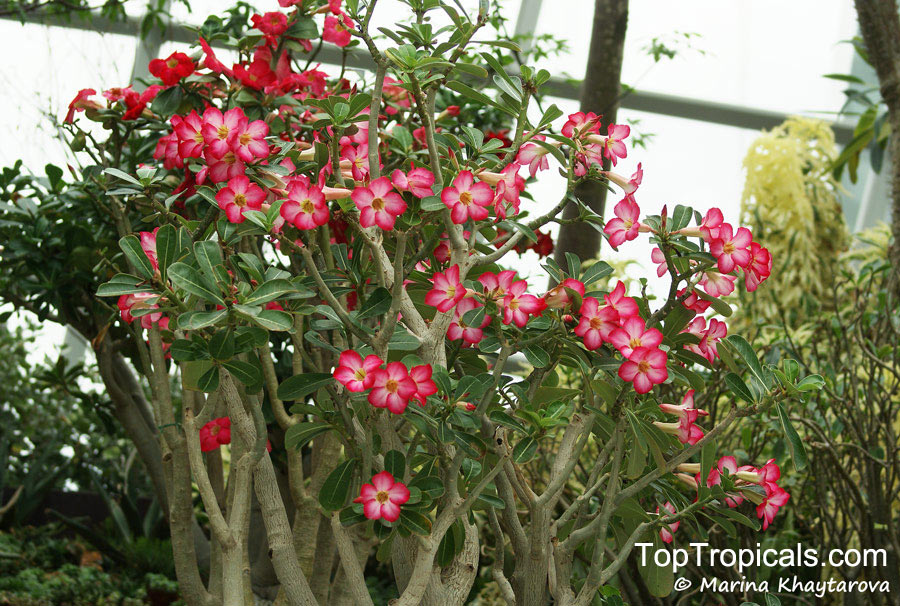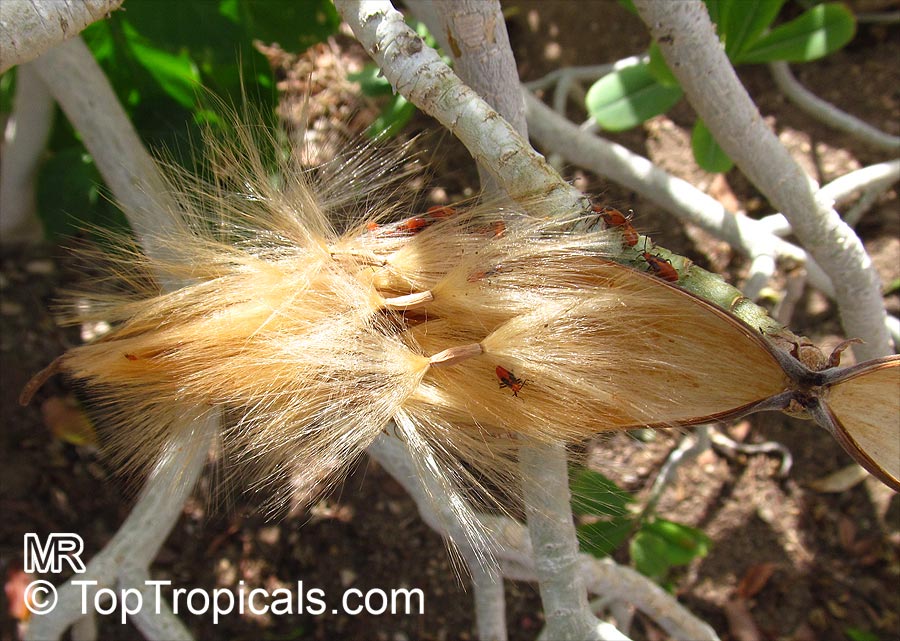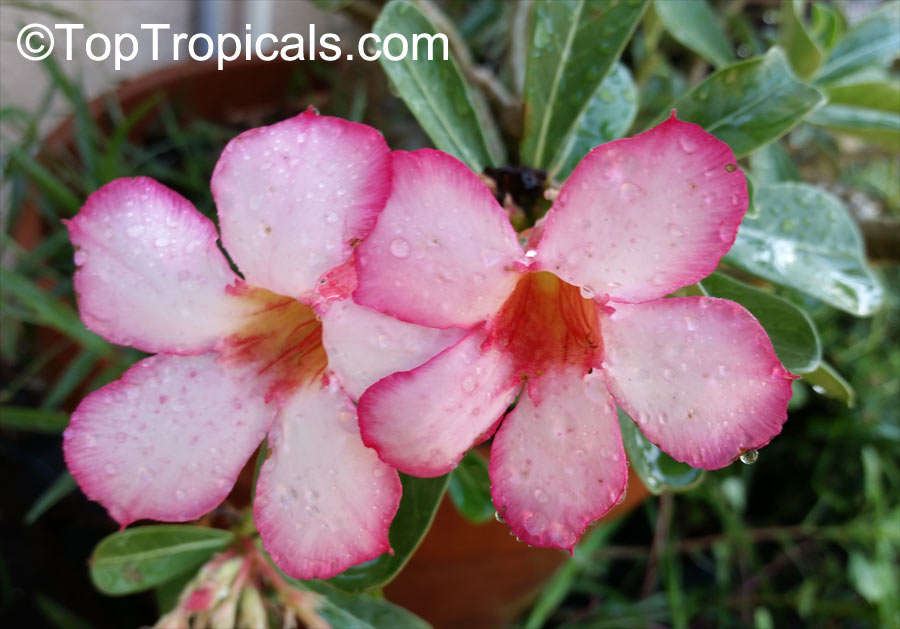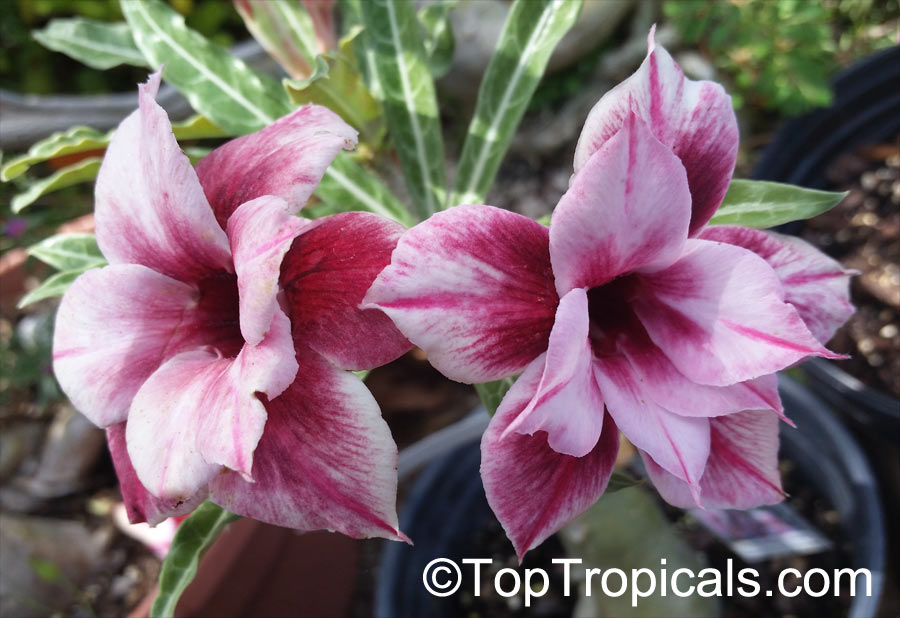Plant used for bonsai - Search results
Top Tropicals Plant Encyclopedia
| Number of plants found: 345 | Next | 
|
Go to page: | 1 | 2 | 3 | 4 | 5 | Last |
Botanical name: Abelia sp.
Common name: Abelia
Family: Caprifoliaceae









The flowers appear in the upper leaf axils and stem ends, 1-8 together in a short cyme; they are pendulous, white to pink, bell-shaped with a five-lobed corolla.
The species from warm climates are evergreen, and colder climate species deciduous.
Botanical name: Acacia adoxa
Common name: Acacia
Family: Fabaceae
Subfamily: Mimosoideae
Origin: Australia






Botanical name: Acer japonicum
Common names: Amur maple, Downy Japanese maple, Fullmoon maple
Family: Sapindaceae
Origin: Japan









Acer japonicum is a small deciduous tree growing to 5-10 m (rarely 15 m) tall, with a trunk up to 40 cm in diameter. In cultivation, it is often only a shrubby tree with multiple trunks joining at ground-level. In autumn, the leaves turn bright orange to dark red.
Botanical name: Acer palmatum
Common names: Japanese maple, Palmate maple, Smooth Japanese maple
Family: Sapindaceae
Origin: Japan









Acer palmatum includes thousands of named cultivars with a variety of forms, colors, leaf types, sizes, and preferred growing conditions. Heights of mature specimens range from 0.5 to 25 m (1.5 to 82 ft), depending on type.
Botanical name: Acer sp.
Common names: Red Maple, Soft Maple
Family: Sapindaceae









Maple is a widespread deciduous tree popular in eastern North America.
Many of its features, especially its leaves, are quite variable in form. Among these features it is best known for its brilliant deep scarlet foliage in autumn. Red Maple is adaptable to a very wide range of site conditions. It can be found growing in swamps, on poor dry soils, and most anywhere in between. Elevation is also not a limiting factor in its range. Due to its attractive fall foliage and pleasing form, it is often used as a shade tree for landscapes. It is used commercially on a small scale for maple syrup production as well as for its medium to high quality lumber. It is the State Tree of Rhode Island. It is very cold hardy.
Maple is a very popular plant in Japan and a subject for bonsai. Autumn in Japan is celebrated with colorful autumn leaves known as momijigari. The foliage of trees light up the Japanese landscape. Scarlet Japanese maples flash against emerald conifers, this is the beauty of momijigari as you view the spectacular colors of changing leaves.
The maples have long been known to be closely related to the family Sapindaceae.
This plant is grown from seed collected in Florida, so it is suited for planting in Florida. It may perform worse up North.
Recommended Fertilizer: SUNSHINE Robusta - Rapid Growth Booster
Botanical name: Adansonia grandidieri
Common names: Grandidier's Baobab, Giant Baobab
Family: Malvaceae (Formerly:Bombacaceae)
Subfamily: Bombacoideae
Origin: Madagascar







Native to Madagascar and growing with a massive, cylindrical bole, Grandidier's Baobab, Adansonia grandidieri, can be a large tree, reaching up to 80 ft tall. The tree is mostly found in a restricted area, threatening its survival due to habitat destruction and regeneration. Despite being threatened, Grandidier's Baobab remains very versatile and is popular among bonsai enthusiasts.
Grandidier's Baobab can prosper in full sun, or on rare occasions in partial shade, and needs moderate watering. If grown in cold regions, pots should be elevated to ensure better drainage and should be sheltered during winter. It has a flat-topped, light crown with few branches, and white to off-white flowers. It produces edible fruits, with oil-rich seeds, making it a valuable source of food and fiber for thatching.
Grandidier's Baobab can produce hundreds of fruits, depending on the age and weather conditions, each fruit weighing about 250g. The fruits are orange and oval-shaped with a pulp containing a few large seeds. It has a pleasant taste and can be used to make refreshing drinks, jams, salads, and other desserts. Grandidier's Baobab is also rich in vitamins, minerals and antioxidants such as vitamin C, phosphorus, and fiber, providing healthy benefits and being an important component of the Malagasy diet.
Botanical name: Adenium arabicum
Common name: Desert Rose
Family: Apocynaceae
Origin: Arabia and East Africa













Growing to a height of about 4-5ft, this succulent plant is a member of the same family as Plumeria. Its swollen, often twisted trunk is pale gray. The leaves are glossy and club-shaped, and the flowers, which appear almost continuously, are trumpet-shaped, and range from white and bright pink to crimson red. It exudes a highly toxic sap which in some places is used as a poison for arrows. Adenium is not generally grown in moist tropical gardens but is often seen as a decorative pot plant; it may also be used in rock gardens. It needs full sun and a well-drained potting mixture. Exotic multi-color varieties can be grafted on the same plant. See other exotic species of Adenium, photo gallery of exotic varieties and Thai Adeniums - milti-colored, multi-grafted. More info about Adenium
See picture of the actual size of plants for sale (sizes vary).
See picture of the mature plant in 5 gal pot (4 years old) and picture of flower. The plants we have for sale are 2 years old, in 1-3 gal pots, with large caudex, some already bloomed!
Recommended Supplies: SUNSHINE Megaflor - Bloom Nutrition Booster
SUNSHINE-Epi - Caudex booster
Adenium Soilless Mix
Botanical name: Adenium boehmianum
Common name: Desert Rose
Family: Apocynaceae
Origin: Arabia and East Africa













Growing to a height of about 4-5ft, this succulent plant is a member of the same family as Plumeria. Its swollen, often twisted trunk, is pale grey. The leaves are glossy, and club-shaped and the flowers, which appear almost continuously, are trumpet-shaped and range from white and bright pink to crimson red. It exudes a highly toxic sap that in some places,is used as a poison for arrows. Adenium is not generally grown in moist tropical gardens but is often seen as a decorative pot plant; it may also be used in rock gardens. It needs full sun and a well-drained potting mixture. Exotic multi-color varieties can be grafted on the same plant. See other exotic species of Adenium, photo gallery of exotic varieties and Thai Adeniums - milti-colored, multi-grafted. More info about Adenium
Botanical name: Adenium multiflorum
Common name: Desert Rose
Family: Apocynaceae
Origin: Arabia and East Africa











Growing to a height of about 4-5ft, this succulent plant is a member of the same family as Plumeria. Its swollen, often twisted trunk, is pale grey. The leaves are glossy and club-shaped. The flowers appear almost continuously, are trumpet-shaped, and range from white and bright pink to crimson red. It emits a highly toxic sap which in some places is used as a poison for arrows. Adeniums are not generally grown in moist tropical gardens but are often seen as a decorative pot plant; they may also be used in rock gardens. They need full sun and a well-drained potting mixture. Exotic multi-color varieties can be grafted onto the same plant. See other exotic species of Adenium, photo gallery of exotic varieties and Thai Adeniums - milti-colored, multi-grafted.
See article about Adenium.
Botanical name: Adenium obesum
Common names: Desert Rose, Impala Lily
Family: Apocynaceae
Origin: Arabia and East Africa












Growing to a height of about 4-5ft, this succulent plant is a member of the same family as Plumeria. Its swollen, often twisted trunk, is pale grey. The leaves are glossy, and club-shaped. The flowers appear almost continuously, are trumpet-shaped and range from white and bright pink to crimson, red. It exudes a highly toxic sap, which in some places is used as a poison for arrows. Adeniums are not generally grown in moist tropical gardens but are often seen as a decorative pot plants. They may also be used in rock gardens.They need full sun and a well-drained potting mixture. Exotic multi-color varieties can be grafted onto the same plant. See other exotic species of Adenium, photo gallery of exotic varieties and Thai Adeniums - milti-colored, multi-grafted.
See article about Adenium.
| Next |  |
Use link to repeat this search:
https://toptropicals.com/cgi-bin/garden_catalog/cat.cgi?search_op=and&keyword_op=and&language=e&number=10&no_change_lang=1
&v1=bon&user=tt&sale=1&first=0
